|
We began our 40 Hours Devotion for Vocations last week with so many blessings that we should be grateful for. Within that weekend, the responsorial psalm proclaims to us the greatness of God’s love for each one of us for our families and communities. Our parish is so blessed that on Saturday, June 22, 2024, the daughter of Andrew and Karen Serafini, Sr. Eve Mary (formerly Mary Serafini), had her first vows as a Sister of Life at Sacred Heart Church in Suffern, New York, dedicated to protecting and enhancing the sacredness of human life. Both parents are actively involved in our ministries and organizations. It was also the same weekend that Vicky Oliphant's daughter, Sister Aimee Marie (formerly Lindsay Oliphant), went home to join her mother, Vicky, to visit her grandmother in Nova Scotia, who has health issues. These two consecrated Sisters are powerful testaments of God blessing our families and communities as seedbeds of vocations for priesthood and consecrated life. From the comments, sharing and experiences of our Adorers, they were telling me that spending an hour or two before the Lord in the Blessed Sacrament in continuous prayer was truly renewing and nurturing one’s spiritual life. It was not only moments of personal connection with the Lord, but of deepening one’s intimacy with Him in Adoration. Many, including Bishop McGrattan, had recommended holding it at least once a year in every parish.
0 Comments
"We urgently need more vocations in our diocese—to Consecrated life and the Priesthood. Without everyone's involvement, how can we hope to see an increase in vocations?" Sr. Dianne, Assistant Director of Vocations, posed this compelling question at the Vocations Rally on Good Shepherd Sunday, April 21, at St. Michael’s Parish in Calgary. “We really need to get that soil prepared so that the seeds of vocation can fall into it, and they can flourish,” she continued. Indeed, this was the driving force behind gathering the faithful at the Vocations Rally, aiming to enlighten us all on how to create such nurturing conditions. The event, co-hosted with the Benedict XVI Institute from Newman Theological College, was a hopeful beginning for fostering vocations within our diocesan community. With more than 400 attendees, including pre-registrants and walk-ins, the Rally kicked off with Mass at 11 am, led by Fr. Edmund Vargas. Afterward, attendees were invited to enjoy a delicious lunch prepared by the Knights of Columbus in the narthex, and explore various booths featuring Religious brothers and sisters, seminarians, and vocations advocates before the start of the presentations. Fr. Cristino, Director of Vocations, shared his astonishment at the turnout and the discussions he had in the days following the rally. “It was impressive to me, first of all, how many people were in attendance. But the follow up conversations I've been having with people all week clearly indicate that they were deeply impacted by all of the sharing they received in that brief time together!” But this comes as no surprise. The insights shared by each speaker, combined with the sense of community encountered at the Rally, were a true renewal experience.
Videos from the Vocations Rally are available here:
Videos courtesy of St. Michael's Catholic Community. The Office of Vocations is very thankful for the Vocations Rally Planning Team, Benedict XVI Instittute of the Newman Theological College, St. Michael’s Parish and Diocesan staff, video and photography team, Knights of Columbus, Seminarians, Consecrated Life members, Serra Club of Calgary, and many others who supported the Vocations Rally and came to support our Diocesan effort to create a culture of vocations! We wouldn’t be able to do it without you.
Photos: Bandi Szakony, for the Diocese of Calgary Note from the editor: We're thrilled to share insights from Fr. Tim Boyle's third year of service with the Diocese of Mackenzie-Fort Smith during Holy Week. Dive into the highlights of his northern journey, alongside the inspiring story of Fatima. Her dedication as a Missionary Disciple in the Village of Gameti, NWT, truly captures the essence of daily service, sacrifice, and true commitment. Enjoy the read and the photos! ==== God has given our church enough ministerial vocations. Many of them have been given to women. Fatima Lee received one of those calls. Born in Hong Kong supported by a mother who believed in education, Fatima’s call to serve God was shaped when as a young women she left Hong Kong to study theology at Louvain in Belgium. Her vocation to serve the church was put on hold when she married Bernard and together they raised their two sons, eventually settling in Toronto. In the course of time she found her way back into ministry and served the People of God in a parish for many years. The sudden death of her husband eight years ago resurrected her original vocation to be a missionary. When the Archdiocese of Toronto invited local priests to serve in the north, Fatima asked Bishop Kasun if they would sponsor a layperson. Six years ago she began a new chapter in the Diocese of Mackenzie-Fort Smith. She serves as the Diocesan Religious Education Coordinator, creating and offering sacramental preparation programs for catechists, working with lay leaders and on various projects for the Bishop. But her true heart’s work is as the spiritual leader of Village of Gameti where she shares reflections on scripture and leads their Sunday communion service whenever she can. When I first visited the village with her, I thought of the winter north as something similar to their picturesque winter castle festival. The ice road is seen from the air as a straightforward, simple, smooth drive. But accompanying Fatima this year, I have begun to see that ministering in the north is a mix of breathtaking beauty and heartbreaking challenges. On Wednesday of Holy Week, we drove the 300 km six-hour winter ice road to Gameti. Driving the winter ice road captures ministry in the north better than any other experience. We went through sections of forest surrounded by skeletons of trees destroyed by the fires.
Gone was the beautiful clear ice.. the open skies. The lakes and the forest we travelled through were now snow-covered, and the night was silent.
Gazing out into the landscape lit only by our headlights, Fatima remarked that having faith and ministering in the north was like driving the winter road at night. You can only see what the headlights show you. Only by trusting and moving forward will you discover that God has prepared a path for you. Despite the bad weather and slippery roads, numerous parishioners of all ages came to St. Mary’s Cathedral for the 40 Hours Devotion for Vocations in the Diocese of Calgary, which commenced on Friday, March 1, at St. Mary's Cathedral. From 7 a.m. that Friday until 11 p.m. on Saturday, Jesus Christ was solemnly exposed on the Altar in the monstrance. The faithful gathered to adore Him and pray for the needs of the Church and the world, particularly for vocations to the priesthood and consecrated life. The 40 Hours Devotion is a centuries-old tradition of continuous prayer before the Blessed Sacrament in solemn exposition, held successively in different Churches for special intentions. On Ash Wednesday of this year, Bishop McGrattan wrote a pastoral letter promoting the 40 Hours Devotion in the Diocese of Calgary for the special intention of vocations to the priesthood and consecrated life. In the spirit of Diocesan Renewal, the Bishop invited all parishes in the Diocese to take turns holding the Devotion. “Through this initiative of the 40 Hours Devotion for Vocations,” he wrote, “we will in time see the fruits of our prayer as the Lord sends out labourers into his harvest, including into the local Church of the Diocese of Calgary.” To launch the Devotion, Bishop McGrattan celebrated the Cathedral’s regular Friday 7:30 am Mass. In addition to silent adoration, the agenda for the 40 Hours at the Cathedral comprised three additional Parish Masses, recitation of the Rosary before Masses, the Divine Mercy Chaplet at 3 pm on both days, sacred music, and brief talks delivered by three Priests. During Mass, the Blessed Sacrament was reposed in the Tabernacle. Priests were also accessible for Confessions throughout the entire forty hours, except during the Masses. To ensure that someone was always present when the Blessed Sacrament was exposed, St. Mary's Cathedral reached out to different groups in the Parish to come for particular hours of Adoration. This included the altar servers ministry, which is primarily comprised of young people. The Cathedral also gave parishioners the opportunity to sign up for hours of Adoration, and made it clear that an inability to commit to a specific hour was no barrier to participation. Those who found themselves free were warmly encouraged to attend whenever they could, without the pressure of signing up. The response was amazing! A total of 307 signed up from the website. Yet, the number of people who actually came was significantly higher. For two hours on Friday morning, students and staff from St. Mary’s High School took turns coming to adore Jesus Christ in the Eucharist. On Saturday morning, Fr. Avinash Colaco, Rector of the Cathedral, delivered a catechesis to students preparing for first Holy Communion and Confirmation and their parents. Although only 25 students and parents had signed up for the talk, over 45 showed up. Many people also rose to adore Jesus Christ in the middle of the night to the early morning hours. Throughout these quiet hours, an average of twelve adorers was present every hour. A security guard was assigned in the Church throughout the night to ensure the safety of the adorers and priests. The final day of the Cathedral's 33-day preparation for Consecration to the Eucharist fell on Saturday, March 2nd. As the clock struck 10:30 pm, parishioners collectively recited the Act of Consecration. This was followed by the Benediction of the Blessed Sacrament at 11 pm, with over 85 people bearing witness to this profound ceremony. The preparation and organization of the 40 Hours was conducted under the leadership of Fr. Avinash, assisted by Deacon Greg Barcelon and the Cathedral’s Parish Renewal Team. Both the 40 Hours Devotion and the Consecration to the Eucharist were announced to the Parish community for weeks in advance. “Thoughtful planning and preparation,” says Fr. Avinash, “were key to its success.”
Contributors: Fr. Derek Remus & Fr. Avinash Colaco for Faithfully. Photos courtesy of St. Mary's Cathedral.
For more information about 40 Hours of Devotion for Vocations, and to host the Devotion in your parish, contact Fr. Derek at [email protected] | Pray for our Seminarians Fr. Cristino Bouvette knew the first guided tour of the future Sacred Heart Parish would be a profoundly stirring experience for his congregation. After all, Catholics in Strathmore, Alberta, have prayed for a new house of worship since their original parish closed its doors in 2008 when the church and rectory were deemed unsafe. Last month’s open house did not disappoint Bouvette, who arrived as pastor in October. “Everyone else in our parish has waited longer and invested far more than I certainly have,” said Bouvette. “The highlight for me was watching them come in and see it and realize this is happening and getting somewhere. There were tears in people’s eyes and smiles on their faces, and the kids were running around in the areas safe to do so. You could see excitement.” Work began in August to transfigure a former 16,000 sq. ft. IGA into a place parishioners envision as the new “beating heart” of this prairie community east of Calgary. The new Sacred Heart Parish’s potential to be a lively hub of activity and fellowship is considerable. It will boast a parish hall for approximately 300, a community kitchen and plenty of meeting rooms for lay groups. For the past 15 years, liturgical services have been held in the gymnasium of Holy Cross Collegiate. The congregation has not only endured after all these years but has actually grown and will serve more than 500 families. Nettie Hendricks, chair of the parish fundraising committee, said excitement over the new parish and the arrival of Bouvette has inspired people to return to church in recent weeks. “Fr. Cristino was only with us for two weeks, and he had to do a funeral. Many people who had not come to Mass for some time came. They had fallen away but have now come back. People who have followed the building of the Church are coming back. We had people at that open house that fell away. They said, ‘We are blessed. We see the pastor you have and the building you have. And we are coming back to our church.’ ” Bouvette, who played a key planning role in Pope Francis’ penitential pilgrimage in 2022, has almost exclusively ministered to youthful Catholics in recent years as he was — and still is — a vicar for vocations and young adults at the St. Francis Xavier Chaplaincy in Calgary. “I did mention to (Bishop William McGrattan) a few months ago that I miss old people,” said Bouvette with a chuckle. “I have a lopsided experience of pastoral ministry. He just laughed at me. Then, when he needed to assign someone to Strathmore, unexpectedly, he sent me. He said, ‘There, you said you missed old people. Well, you’ve got old people in Strathmore.’ ” When he arrived in Strathmore, he found it was so much more. “When I got here, I realized there are many people here of a wide range of ages, demographics and experience. It is exciting to be with them.” Bouvette treasures all the diverse experiences afforded him during his clerical service, but “this project is the most rewarding experience of priestly ministry in the sense that it captures all that could be asked for from a priest.” “When you go to the seminary as a young man like I did, what I am doing now is all you ever dream of or think you will do,” said Bouvette. “But then to inherit a building project that is not really even a building project, but a transformation project — it has a remarkable experience.” This diverse parish community has amassed $7.4 million to date, holding 50/50 raffles, golf tournaments and dinners with auctions. The parish has also received funds through a pledge form initiative and serving beer at the town’s annual rodeo. Strathmore Catholics still have work to do as architectural costs have driven the project price to $10.4 million. Catholics across Canada have also visited the parish website to submit online donations to the retrofitting project. Hendricks said such gifts are appreciated and important. The parish posted a video showing photos of the construction completed during October and November and detailing the tasks ahead at sacredhc.ca/construction. Written by Quinton Amundson for The Catholic Register. Article was first published on Jan. 4 for The Catholic Register here. Reposted with permission.
Last week, the priests of the Diocese of Calgary convened for a four-day study at the Shrine Church of Our Lady of the Rockies in Canmore. Under the guidance of Lucas Pollice, an Associate Professor of Theology and Catechetics from the Augustine Institute, the clergy explored the mission of the laity and the new evangelization. The priests deepened their understanding of the lay vocation, examining its vital role and mission, and how it partakes in Christ's priestly, prophetic, and kingly mission. In addition to the discussions, the gathering also showcased an exclusive preview of the Pastoral Renewal launch video, which was scheduled for release two days later on the Feast of St. Francis of Assisi. Beyond the video preview, the priests dedicated time to reflect on and discuss the pastoral needs of their parish communities in light of the upcoming pastoral renewal, guided by the Pastoral Renewal Leadership team. Fr. Tim Boyle led a reflection on the Road to Emmaus (Luke 24:13-35), encouraging the priests to share with one another the challenges they face in ministry, but above all, to share moments when their hearts truly burned with passion for Christ, just like the two disciples on the road to Emmaus when they encountered the Risen Lord. This enriching exercise of deep listening and sharing among the presbyterate highlighted the chosen path for renewal in our Diocese, that which is rooted in the willingness to meet one another on the road, of walking together, of listening and dialogue, so that we can recognize the Lord in our midst.
Photos courtesy of Fr. Iqbal Khurshid, Bonnie Annicchiarico, and Fr. Wilbert Chin Jon.
Written by Fr. Sajo Jacob for Faithfully.
Written by Fr. Roy Jayamaha, Pastor of St. Paul's Church, Piikani Nation, Brocket, AB.
Written by Fr. Bryan Frank, Retired Priest of the Diocese of Calgary.
“War is the ultimate human failure,” says Capt./Fr. John Nemanic. Not a sentiment I expect to hear from a military chaplain but Fr. John is adamant. “Human beings are called to be in communion with one another; to love and help each other. I had to grapple with this.” As we continue the interview, he expands on this conflict. Barely nine months ago, Fr. John was a diocesan priest in the Diocese of Calgary. Now he is a chaplain serving in the Roman Catholic Military Ordinariate of Canada (RC Milord Canada) under the supervision of Bishop Scott McCaig. The RCMilord is described as “a diocese of massive dimensions” serving not only military members and their families at home, but also wherever the Canadian Armed Forces (CAF) have a presence around the world. Fr. John is simultaneously an officer, serving under a military chain of command including the Royal Canadian Chaplain Service (RCChS). This branch of the military, which Fr. John describes as similar to Alberta Catholic schools in that it serves all faiths. According to the National Defence website, “CAF chaplains attend to the needs of all members of the CAF and their families, whether they identify with a particular Faith Tradition, have no specific spiritual/faith practice, belief or custom, or are spiritually curious.” In some ways, this is similar to parish work, caring for the spiritual needs of all CAF members, those who are Catholic, those from other faith backgrounds or those who have none. The pluralism found within the CAF reflects that seen in Canadian society as a whole, so chaplains have to be prepared to deal with all of it. Fr. John says, “As individual chaplains we’re told to be faithful to our faith traditions, so I might refer for example, a same-sex marriage request, to another chaplain. The chaplain might also refer military families to the local (secular) parish, for example, for sacramental preparation or for French-language Mass. He also liaises with other houses of worship nearby to be able to refer different faith adherents appropriately. It’s an environment of ecumenism and outreach into which chaplains are rigorously initiated. Fr. John felt a calling to the military as early as his calling to the priesthood. His father served in the Yugoslavian army, so after Fr. John was ordained in 2008, he considered serving as a reservist. However, he found the commitment unsustainable with full time parish work. In 2017, his yearning to serve for the military resurfaced during centennial celebrations of the Battle of Vimy Ridge. Eventually, he applied to the RCChS and began a long process of interviews, physical tests, evaluations, educational qualification assessments and personal reference checks. “This was also to test the call,” Fr. John says, “A lot of it was prayer.” Once he was accepted, he was posted to Garrison Petawawa in Ontario (population 19,000 including 6,000 people directly connected to the base). He then began 13 weeks of basic training from 5 am to 10 pm. It was a tough regimen designed to emphasize teamwork and endurance under adversity, as well as essential fighting skills. Chaplains do not carry weapons, although they do have to learn how to safely disarm them. They also do not command any personnel but bear an officer’s rank so they can minister to members at all levels. Chaplains have authority, and an obligation, to present significant issues from the rank-and-file to higher-ups. They also preside at religious services and form part of the group which delivers news to a family following an incident. It was during basic training that Fr. John experienced a memorable moment. Among his fellow trainees, who ranged in age from 19 to 50, one approached him expressing suicidal thoughts. Fr. John arranged for mental health support for the person. He remembers being awed and humbled by the “power of the padre”, to be trusted with a confidence at the outset of his training. Not all his experiences were as positive. While visiting the Canadian War Museum in Ottawa during Basic Training, he paused in front of a large display of instruments meant to kill and maim. “My stomach churned,” he says, “I wondered, ‘am I enabling this by serving in the CAF?’” With the help of an advisor, he came to understand differently. “Canada’s interests in going to war are noble: to defend our country and defend those who need our help.” He goes on to say that Jesus met violence with acceptance when he submitted to being crucified. Chaplains can provide solace to those who’ve had to kill and those suffering from PTSD (post-traumatic stress disorder). Fr. John explains that soldiers have to accept what the military terms ‘unlimited liability’ which means they cannot refuse an order even if it places them in dire danger. Officers have to deal with issuing such orders. Even peacekeepers, who are not permitted to fire unless first fired upon, can encounter terrible situations which they are powerless to affect. 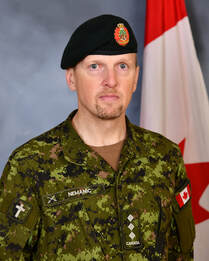 “It’s such a conundrum to support CAF members but not believe in war,” Fr. John says. “Only God can bring creation out of chaos. Pray for peace in our hearts and homes. Pray that there is no more war and no need for the military but pray also for our soldiers.” Fr. John ends our interview the same way he began it, with gratitude to Bishop McGrattan for “putting me on loan to the military”. He says fervently, “I would never have found peace until I knew if I could do this. God has put me in a place where I can really help people.”
A thunderclap of applause erupted inside St. Mary’s Cathedral Friday evening as the faithful deemed Santiago Torres worthy of ordination to the priesthood.
There was standing room only as young and old watched on as Torres prostrated himself before God and His people, giving his undivided heart to the priesthood on the Solemnity of the Sacred Heart of Jesus, as a choir sounding like angels sang the Litany of the Saints. Then the essential moment – the Laying on of Hands – by Bishop William McGrattan, as the Holy Spirit conformed Torres to the priesthood of Christ. It was poignant to see the many faces of Christ come forward one by one laying their hands on their new brother priest as he knelt to receive this gesture in humility. 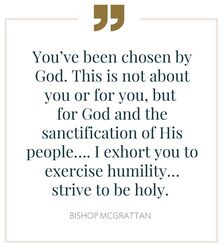
The word ‘humility’ was repeated through the music, the prayers, the homily and even Fr. Torres’ thank you address at the end of the ordination.
Bishop McGrattan emphasized every priest must possess the gift of the fear of God, a trepidation that they are unworthy to receive this call. “Each priest must respond to their call with confidence and humility inspired by the Spirit of God,” he said. Sincere, affable, gentle, kind, confident, humble, joyful and a gift to the Church; these are words that the faithful use to describe their newest Calgary diocesan priest. I count myself among the faithful who feel blessed by Fr. Santiago’s “yes” to live for Christ. A few weeks before the ordination, I had the privilege of sitting down to speak with Father (at that time Deacon) Torres. He chatted with me from his dorm room at St. Joseph’s Seminary in Edmonton via video call. Almost immediately I was reminded of his magnetic personality. We had first met about 13 years ago (summer of 2010) during which time he had just experienced the love of God in a profound life-changing way. By the end of the interview my heart was full of hope for the future of Fr. Santiago’s priestly vocation and for all the ways he will bring glory to God and peace to those he ministers to on Earth. 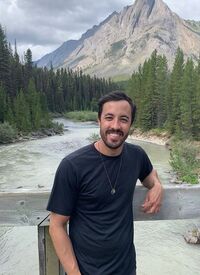 Fr. Santiago Torres Fr. Santiago Torres
A chat with Fr. Santiago
The Parable of the Mustard Seed came to mind as I sat down to write and reveal a glimpse of Fr. Santiago Torres’s profound journey of faith: one that began for him as a tiny seed hidden within his mother’s womb. “When I was conceived my Dad didn’t want anything to do with the pregnancy and so he left my Mom. I never knew who my biological dad was. He pushed [abortion] on her and my mom decided to have me instead – Praise God.” The 34-year-old priest, born and raised in Bogota, Colombia, considers his mother his primary role model. “My Mom has always been that solid foundation in my life for security and love – how to give of yourself for others.” Two days before the ordination, Fr. Santiago’s mother, Maria Cristina Latorre, was busy preparing for the ordination, welcoming her best friend from Germany, her sisters from Colombia, Santiago’s out-of-town seminarian friends and parishioners from his diaconal year in Lethbridge. With emotions running high amidst the hustle and bustle at her house, she stepped away to reflect and answer a few questions about her son. “I don’t know why Jesus chose me, but I’m here and I’m ready to give back my son to Him,” said Latorre, trying to hold back her tears. “There are too many emotions. “I ask God why you chose my son?,” she said. “I’m not asking this ‘why’ in a bad way. No, I’m asking why [because] I’m so humbled to be his mom. “Santiago explained to me ‘Mom, sometimes God, through difficult times, or bad situations, He makes something good from bad,’ which makes sense for me,” she continued.
Growing up in Bogota, Colombia
When Fr. Santiago was two-years-old, his mother married and had twin girls, Ana Maria and Maria Juliana. Then at six-years-old his parents divorced, but the family continued to keep in touch with his sisters’ father, the man who Fr. Santiago considers his earthly father figure. “It’s incredible how important the love of a father is in a person’s life and yet, even if one hasn’t had that in one’s life, God still wants to give us that love,” said Fr. Santiago. “Looking back on my life in those years that I wasn’t close to Him… even if I didn’t realize He was there, He was always there.” From early on the seed of faith was planted through Fr. Santiago’s Sacraments of Baptism and First Eucharist, but he was not Confirmed until later as an adult. From an early age watching television soccer matches won out over going to Sunday Mass. Meanwhile, his grandparents played a pivotal role in helping his mother raise Fr. Santiago and his sisters, both practically and spiritually. Mrs. Latorre remembers those early days of childrearing and how her parents did not approve of all the ways her life had unfolded. Yet, as devout Catholics, they continued to support and love her and her children. “At this time I was not close to God, I cannot say I was praying, but I can say God was with me all the time. I think He has been by my side all the time,” said Mrs. Latorre, tearfully.
A new beginning in Canada
Mrs. Latorre married Juan Gonzalo Arango when Fr. Santiago was around 14 and then, in 2005 at the age of 16, the family immigrated to Calgary for better opportunities. “For me it was very difficult,” said Fr. Santiago. “My friends were everything. I had a girlfriend in Colombia at that time as well. We moved in October, which was hard because it was starting to get cold and high school had already started. I only knew enough English to get by.” Shortly after the move, he began a relationship with a Colombian girl, also newly immigrated to Canada, who, to his astonishment, practiced her Catholic faith. The seed of faith received some significant watering one day when he was at his girlfriend’s house and the family was on a long-distance phone call with a priest from Colombia. Each person got a chance to speak to this priest, including – to his surprise – Fr. Santiago. “I was completely dumbfounded because I hadn’t talked to a priest in forever and that was how my conversion began,” said Fr. Santiago “It’s incredible how God works. “Because I didn’t know him and I knew I wouldn’t see him again ever, I was able to open my heart to him and actually talk about stuff that was going on in my life more than I would talk with my friends or girlfriend.” Shortly after that his girlfriend invited him to Mass and he began to pray at night again. He sees this period in high school as living a double life – one of renewed faith, yet still steeped in his secular lifestyle. But the seed of faith that had been planted in his childhood began to receive nourishment. 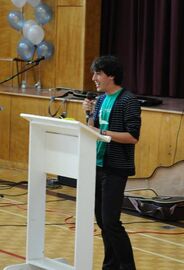 Young Fr. Santiago at CCO evangelistic mission, Impact. Young Fr. Santiago at CCO evangelistic mission, Impact.
Turning back to God
Two years after graduating high school (summer of 2010) at the age of twenty, Fr. Santiago participated in Impact, an evangelistic mission hosted by Catholic Christian Outreach. It was geared toward bringing lukewarm Catholic university students back into the faith. He took a faith study and attended ‘Summit’, an evening of adoration prayer at St. Bonaventure. It was during this hour of adoration and praise and worship that he gave his adult ‘yes’ to place Jesus at the centre of his life. “I just remember closing my eyes and feeling so loved,” said Fr. Santiago “It was just incredible. I started crying. It was just an experience of a love I’d never encountered. “I’d just broken up with my girlfriend, trying to fit into a culture I’d just arrived in, trying to wear a lot of masks to belong. I just felt the love that God was trying to give me, for no other reason than for being who I was.” His newly sprouted seed of faith continued to grow with good friendships through the former University of Calgary Catholic Community (now St. Xavier Chaplaincy). After graduating with a mechanical engineering degree in 2014, Fr. Santiago worked for a year in his field all the while discerning a call to either explore the priesthood or a budding female friendship. He received spiritual direction from a number of priests in the diocese and decided to apply for seminary studies. “I entered [into the seminary] with a lot of reluctance,” said Fr. Santiago. “I just felt I had been on the fence for a long time by then, a lot of wrestling and struggling. But I felt I had tried everything I could to discern outside the seminary, but the one thing I hadn’t done was give the seminary a shot.” The female friend he wanted to romantically pursue gave him the last push to enter seminary. “She said, ‘Santi, if you are not God’s will for me, then I don’t want to be with you.’ And that cut me to the heart because it was the opposite of what I was doing. I felt God was calling me to be a priest and I was choosing not to follow His will, but to be with her,” said Fr. Santiago. 
The formative seminary years
Fr. Santiago spent his first two seminary years at Mount Angel Seminary in Oregon, USA where one third of the seminarians were Latino. “I was able to make really good friends and feel at home,” said Fr. Santiago. “I began to feel this was right, that it was what God wanted me to do. That continued to be the feeling year after year.” He completed the next six years of training in Edmonton at St. Joseph’s Seminary. During this time fellow seminarian Serge Buisse became a close friend. They spent a lot of time together, studying, playing sports, confiding in one another. Fr. Serge was ordained last July for the St. Boniface Archdiocese in Winnipeg. He now pastors the francophone parish of St. Joachim in La Broquerie, Manitoba. He describes Fr. Santiago as down-to-earth, joyfilled, friendly and warm. “He was always a gift in so far as his desire to grow,” said Fr. Serge “He is very human. I thank God He sent me someone like him; his capacity to be real, to be authentic and we supported each other in almost every aspect of life.”
A note from the Diocese of Calgary:
Thank you to all ministers, volunteers, and staff who helped prepare for the Ordination! Special thanks to St. Mary's Cathedral parish staff, Catholic Women's League & Serra Club Calgary for organizing the reception, St. John Choir Schola, St. Francis Xavier Chaplaincy, Calgary seminarians, photographers Yuan Wang (SFXC) & Victor Panlilio (Canadian Martyr's Parish), livestreamer Rikki Sabater (St. Anthony's Parish) & team, videographers Annie Chirka (St. Peter's Parish) & team.
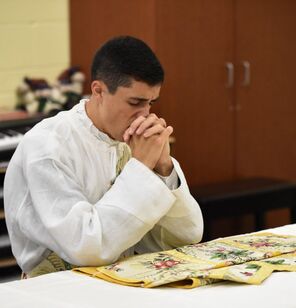 Congratulations to Fr. Quinn Gomez, FSSP from Calgary on being ordained to the Priesthood for the Priestly Fraternity of St. Peter on May 26, 2023, by His Excellency Archbishop Salvatore Cordileone at North American Martyrs Catholic Church in Lincoln, Nebraska. Fr. Cristino Bouvette had the privilege of attending the Ordination and receiving a priestly blessing from the newly ordained priest. Fr. Gomez also invited Fr. Cristino to preach at his first Mass the next day. Despite joining the Fraternity, Fr. Gomez wants to remain connected with his home diocese. You can view the Ordination photos here | Video 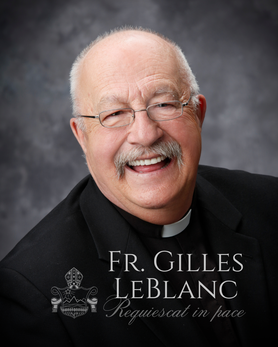 Funeral Mass of Fr. Gilles LeBlanc was celebrated on Saturday, May 6, 2023 at Sacred Heart Church in Calgary followed by a graveside service at St. Mary’s Cemetery. Father Gilles LeBlanc was born on May 18, 1949, in Bouctouche, New Brunswick. He is pre-deceased by his parents Frederick and Suzanne LeBlanc and his brother Paul LeBlanc. He is survived by his siblings: Andrea Acherly, Ronald LaBlanc, Gladys Bordage, John LaBlanc, Reggie LeBlanc. He was ordained a priest in 1985. He passed away peacefully on May 2, 2023 at Providence Care Centre. Visit the obituary page at https://www.evanjstrong.com/obituary/FrGilles-LeBlanc Fr. Gilles LeBlanc's Pastoral Assignments Father Gilles LeBlanc was ordained a priest on April 26, 1985, at St. Mary’s Cathedral by Bishop Paul J. O'Byrne. Fr. LeBlanc began his pastoral assignments as an Assistant Pastor at St. John’s, Calgary, in June 1985, followed by St. Mark’s in Calgary in August 1985, serving until 1987. He then served as an Assistant Pastor at St. Ann's in Blairmore from July 1987 to 1988. In 1989, he accepted a pastoral assignment as Pastor of St. Andrew’s, Vulcan, Champion, and Carmangay, where he served for two years. Later in his ministry, Fr. LeBlanc was assigned at St. Anthony’s in Calgary from 2006 until July 2008. His last pastoral assignment was at St. Patrick’s in Medicine Hat from August 2008 until his retirement in June 2010.
Please join us in remembering Fr. Gilles by viewing these beautiful photos of his funeral mass, captured by Victor Panlilio. Let us all pray for his eternal rest and the souls of all the faithful departed, and may they find peace in the loving mercy of God. Photos courtesy of Victor Panlilio | See all photos here
The Feast of Stephen the Protomartyr invites us all to give witness to our faith in the newborn king. For the last years I have been blest to study in Rome, where St. Stephen’s Day stands with Christmas as a second occasion of celebration. If Christmas belongs to more close-knit family gatherings, various more public and religious encounters mark the following feast in the Italian culture. Well-wishers gather with friends and fill the piazzas and streets. Faithful may take the time to visit the nativity scenes in churches along with attending the liturgical celebrations dedicated to the saint. We read the account of the testimony of St. Stephen in the Acts of the Apostles. The group of twelve called the saint to serve as a deacon with six others while they kept busy proclaiming God’s word. We discover in the narrative that Stephen bestowed great skills as an orator. In a testimony to the high priest, he traces God work through salvation history, revealing how Jesus fulfills God’s plans through the people of Israel. In particular, the text of Acts goes to lengths to point out that the Holy Spirit accompanies him and guides him. Inspired by God’s Spirit, St. Stephen offers his life with words that reflect those of Christ — “receive my spirit” — but now he does so as a prayer in the Saviour’s name — “Lord Jesus” (Acts 7:59). The testimony of St. Stephen has a particular relevance in the city of Rome. One of its churches, the Basilica of St. Lawrence or San Lorenzo, remains the one of the places in the world where the faithful have traditionally revered his relics. Recently I visited this ancient site, which was originally founded by the emperor Constantine and has been rebuilt in the following centuries. The building now has a medieval feel to it (see below). It has solid brick walls that encompass its wonders of ancient columns and mosaic floors. From the entrance of the basilica, one’s eyes rise to its elevated altar — marked by four columns that support a weighty canopy. The altar sits overtop of a lower space, an inner sanctuary that houses the relics of St. Stephen as well as his fellow deacon martyr, St. Lawrence. They remain together as two deacon martyrs of the early church. The church of Santo Stefano Rotondo also has a particular attachment to the saint. The building dates to the fifth century and it remains the earliest church in the city built on a circular floor plan. While the church also reveres St. Stephen of Hungary, and has served the Hungarian community in Rome for the last five hundred years, it nonetheless houses a moving mural depiction of the protomartyr Stephen. It presents him serenely looking up to heaven, wearing the dalmatic vestment of the deacon, while his aggressors are weighed down with anger and stones as they try to establish their own form of justice. For most of us the Feast of Stephen the Protomartyr pales under the piles of boxes and the other colours that mark our Christmas celebrations. Yet the date remains an invitation for us to let the birth of Jesus transform the way we live the rest of the year. St. Ambrose articulates the faith that animated the martyr: “Christ is everything for us. If you are in need of help, he is strength. If you are afraid of death, he is life. If you desire heaven, he is the way. If you want to get away from darkness, he is the light” (On Virginity, 16). Let us take a moment this day to ask for the intercession of St. Stephen. May he help us find in Christ the pattern of love and sacrifice that brings meaning to each moment of every day.
You shall love the Lord your God with all your heart, and with all your soul, and with all your might. Keep these words that I am commanding you today in your heart. Recite them to your children and talk about them when you are at home and when you are away, when you lie down and when you rise. Bind them as a sign on your hand, fix them as an emblem* on your forehead, and write them on the doorposts of your house and on your gates." (Deuteronomy 6:5-9) Jewish people pray this prayer daily and maybe we should too! Throughout the week-long Priests Study Days (Oct. 3-6) in Canmore, we were reminded to listen and remember, and to let our memory inspire our service. For some of us priests, this was our first visit to the Shrine Church of Our Lady of the Rockies in Canmore. This church has preserved beautifully memories of the past in the beautiful sculptures throughout the building, and yet it is a modern church ready to serve us in the future. A reminder that though our buildings change .. The Lord is One. We began our week by remembering the years of ministry nine of our priests have offered to the Diocese. Their service embraced parishes and many lay associations, including the CWL and the Knights of Columbus. They came from around the world inspired by their memories of God’s love. We listened to the the Synod Synthesis to hear the voices of the laity who gathered throughout the Synodal process and to what the Spirit had inspired them to say about our journey together. Some of what the priests heard was probably challenging, but in the end the message was - work with us.. help us to renew the life of the Spirit that we share - for the Lord is One. 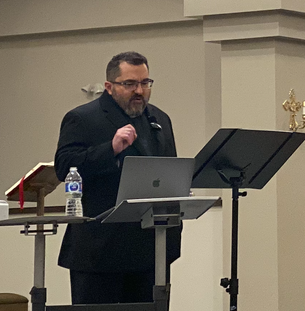 Our speaker Fr Michael Simone, a Jesuit from Chicago, helped us to revisit the scriptures during the Study Days. His main theme was Remember and Believe. He helped us to see first how the Psalms came about as pilgrims visited shrines, to either ask forgiveness or to give thanks, and how at the shrine a song was sung in memory of the deeds of the Lord. These songs became our Psalms. He reminded us that Jesus would have prayed these Psalms, and that when we pray them we should ask ourselves .. what did these words inspire in Jesus' heart.. what are they saying to our hearts. Fr. Simone took us through the Gospels, showing us how they were composed to help early Christian’s ready themselves to meet the Lord. He showed us that Jesus' mission was to help Israel see the true meaning of the the great events in their past. And how Jesus is with us every day, encouraging us to remember what God has done so we can detect the signs if his present activity. Bishop McGrattan led us in the Eucharist each day. He spoke to us about the importance of our unity as a witness to our people that we believe in one Lord.. and in the Eucharist we heard Jesus own command, "Do this in memory of me." Fr. Michael pointed out to us that Jesus saw himself as a Jew.. he lived his earthly life as a Jew. Every day he would pray the Shema, "Listen Israel .. the Lord is our God. The Lord is one." We should learn the Shema and add it to our daily prayer!
Interview conducted by Solomon Ip for Faithfully
Interview conducted by Solomon Ip for Faithfully
Written by Solomon Ip for Faithfully
|
Author
Catholic Pastoral Centre Staff and Guest Writers Archives
July 2024
Categories
All
|


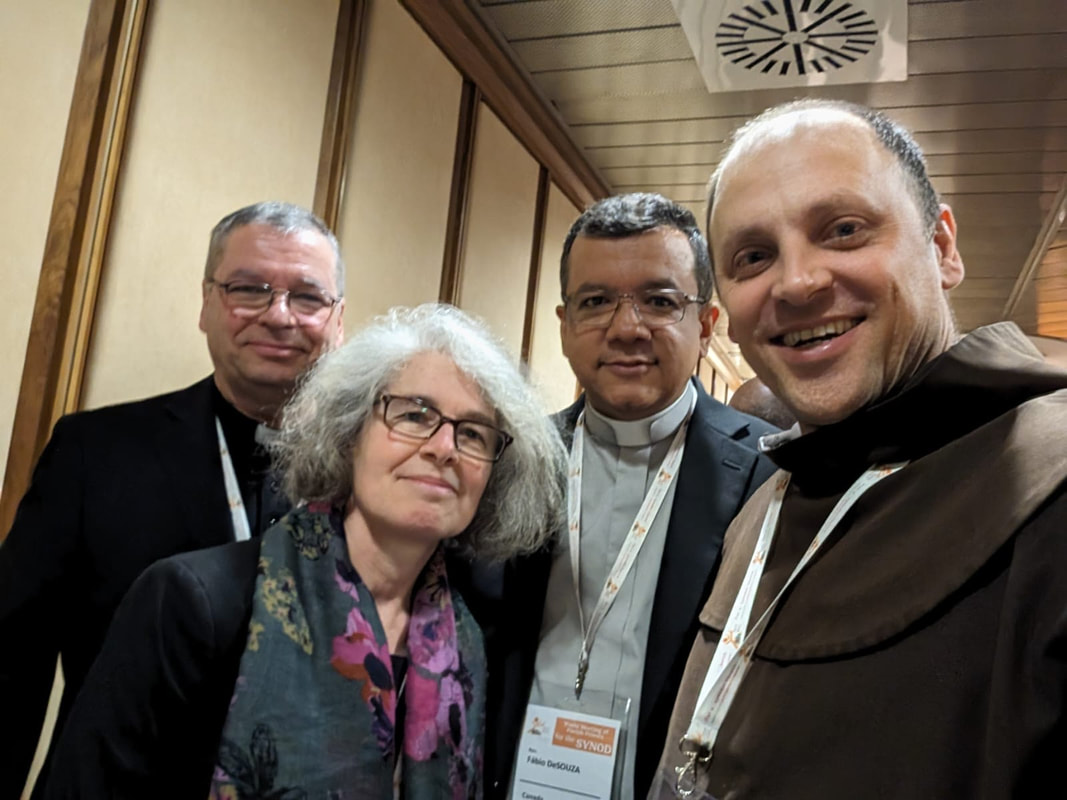
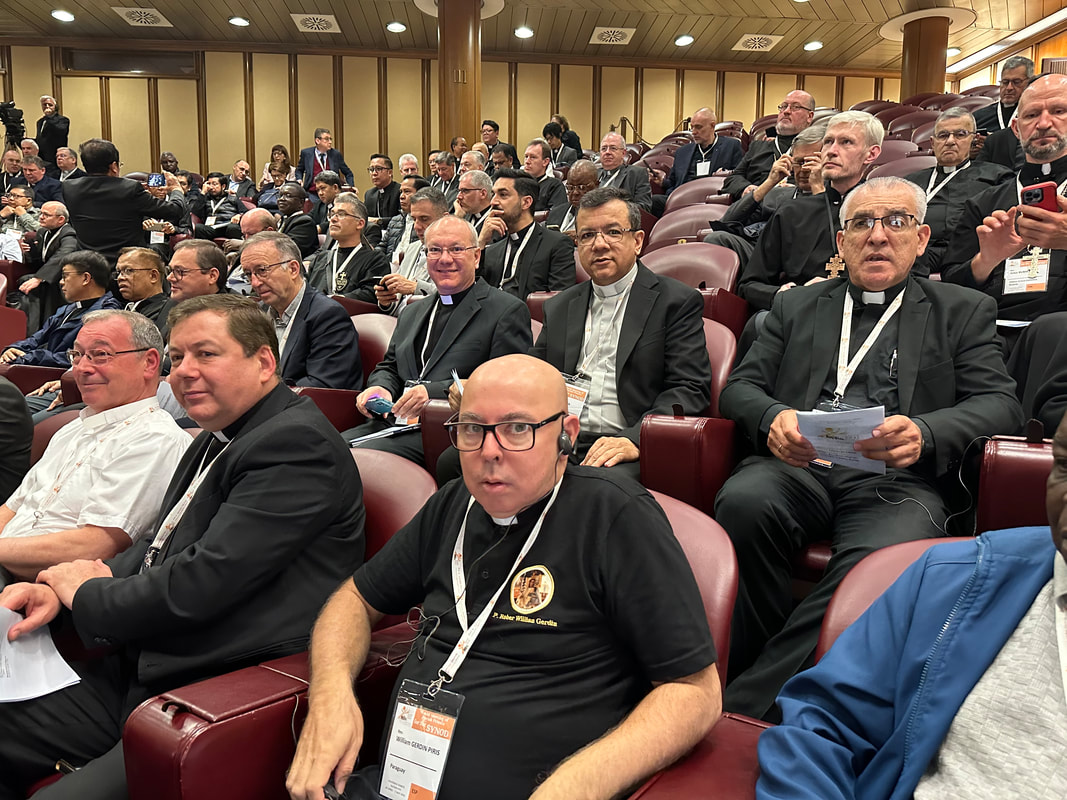

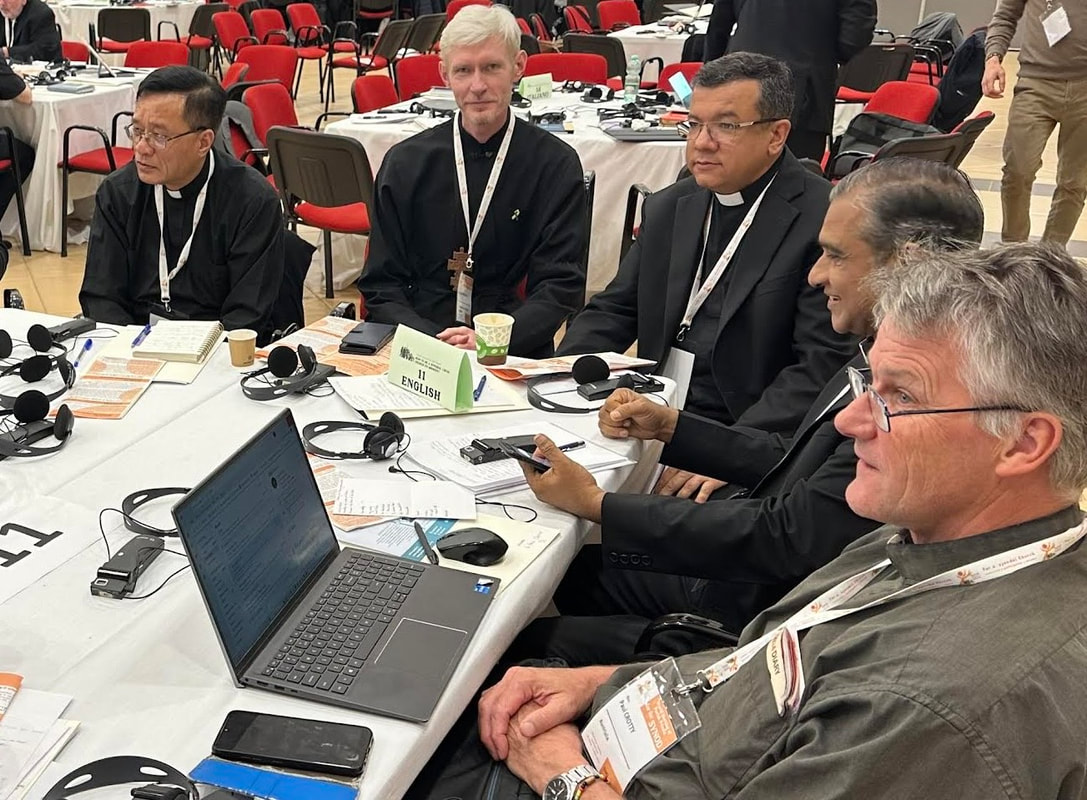
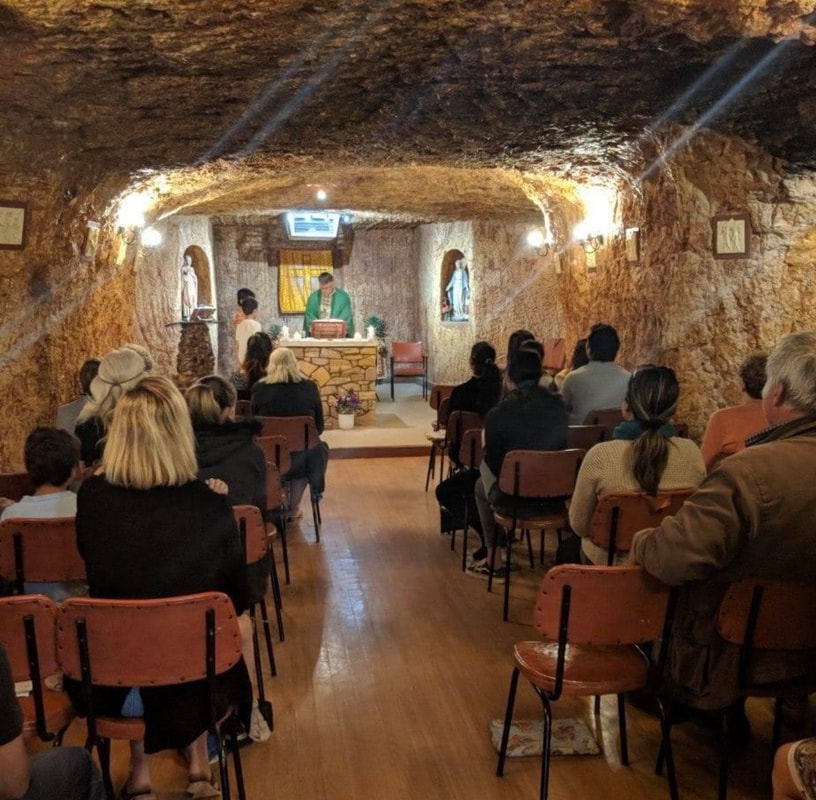
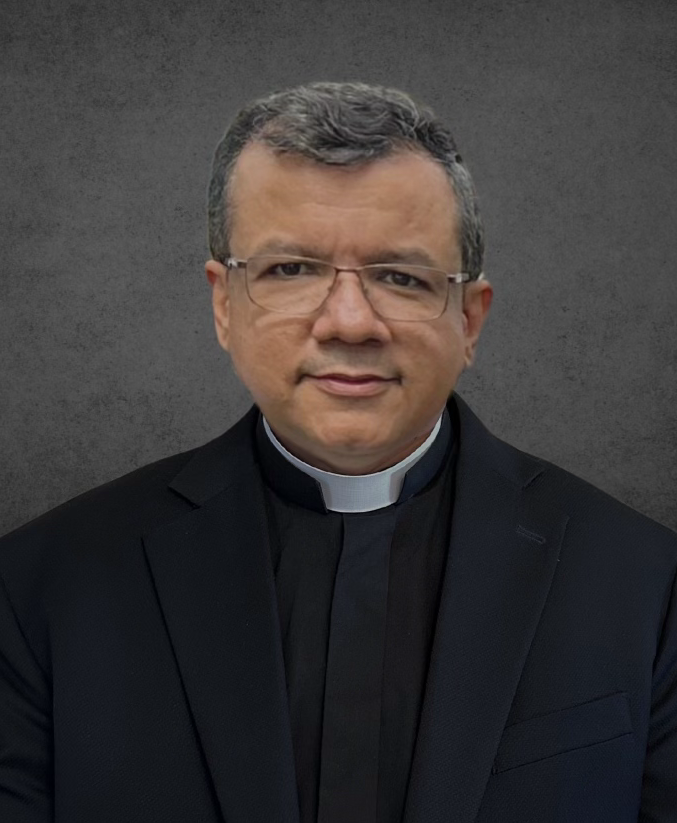
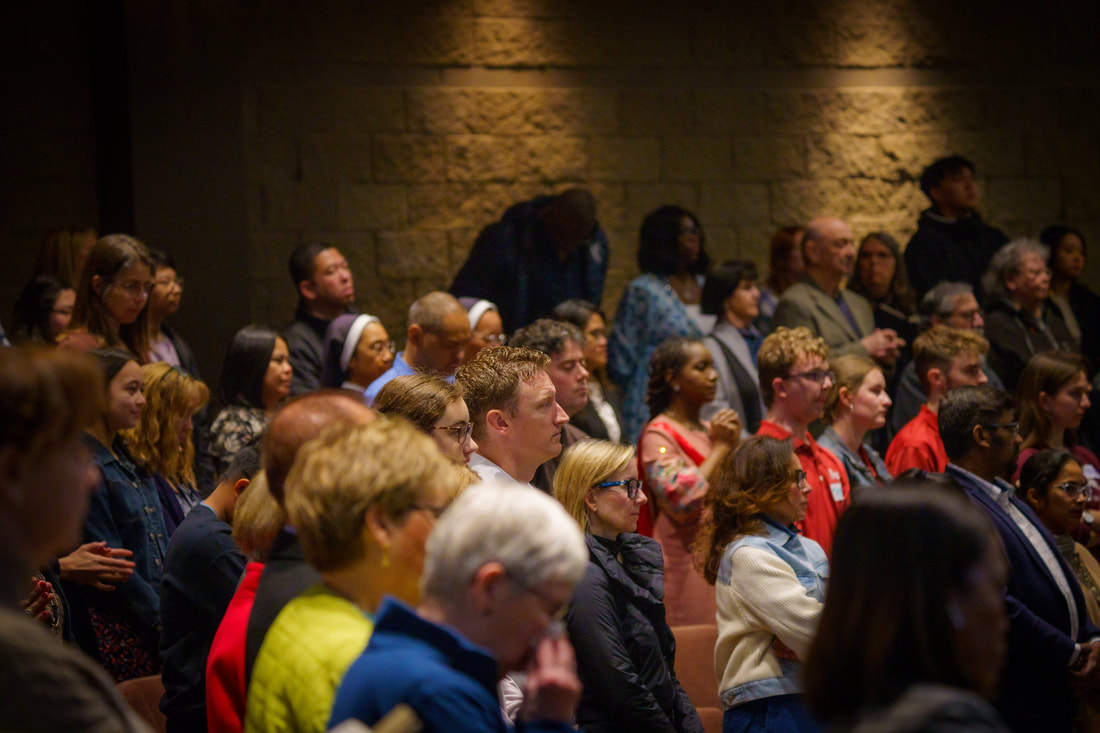
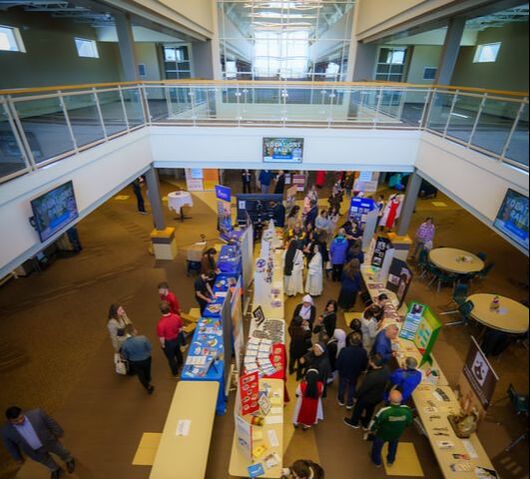
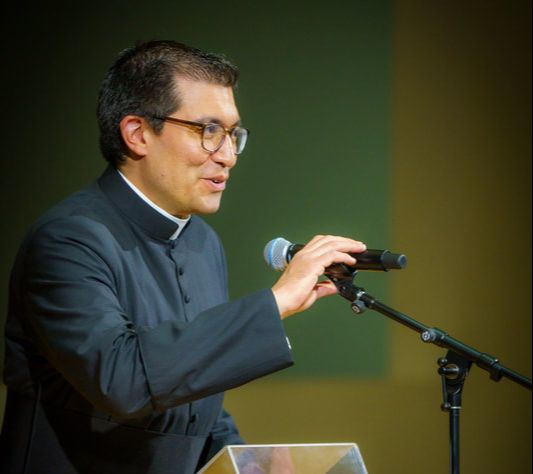
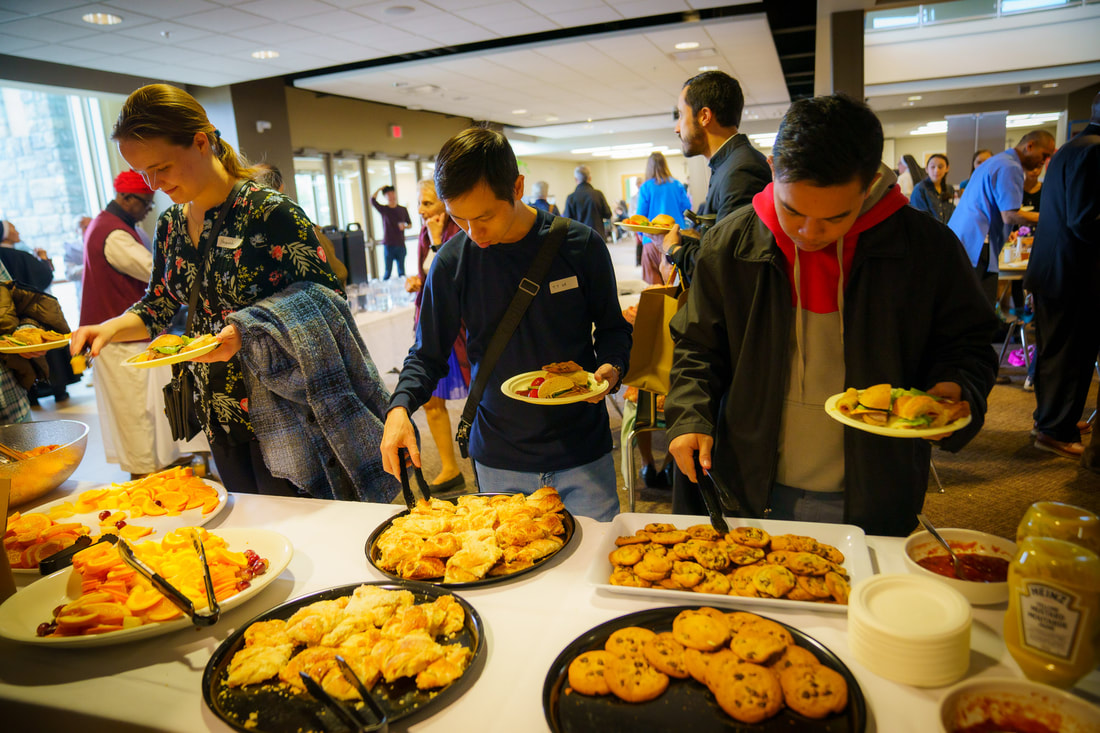
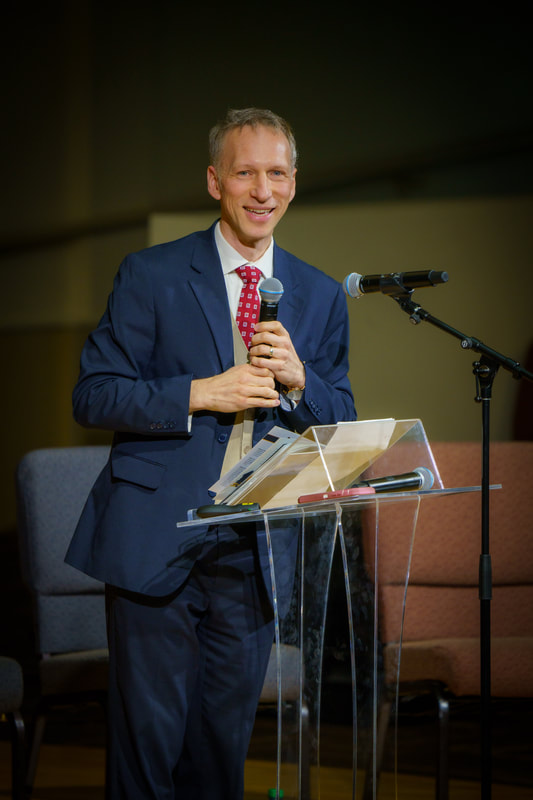
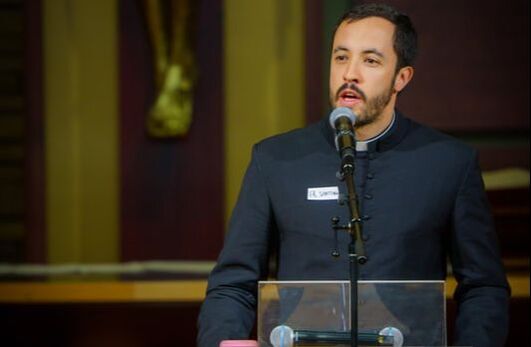
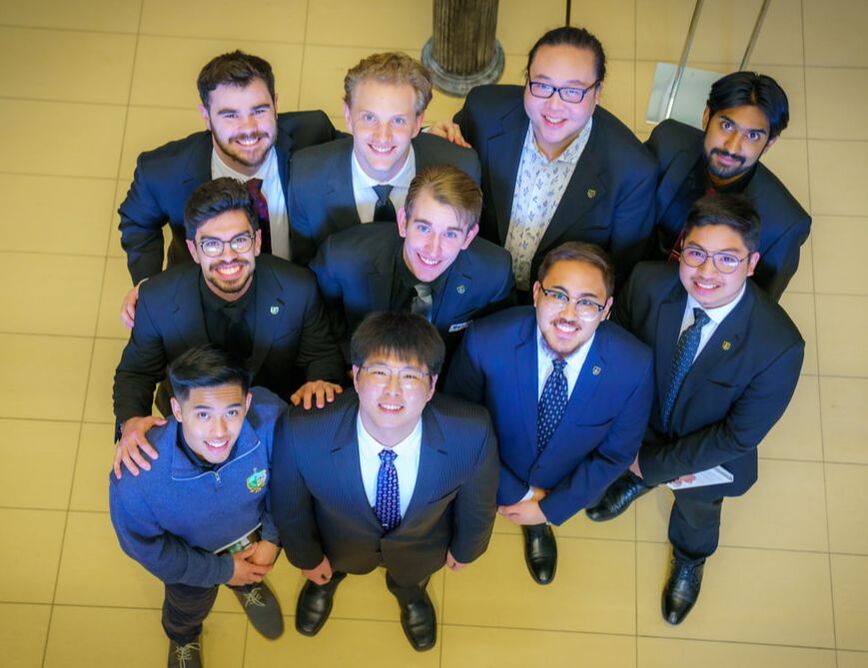
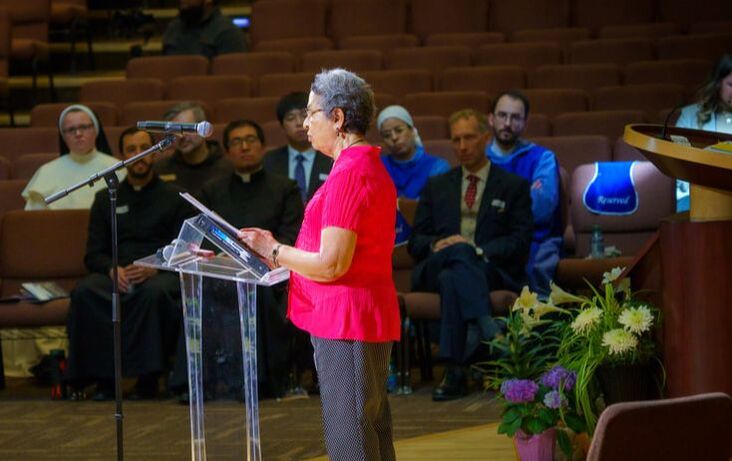
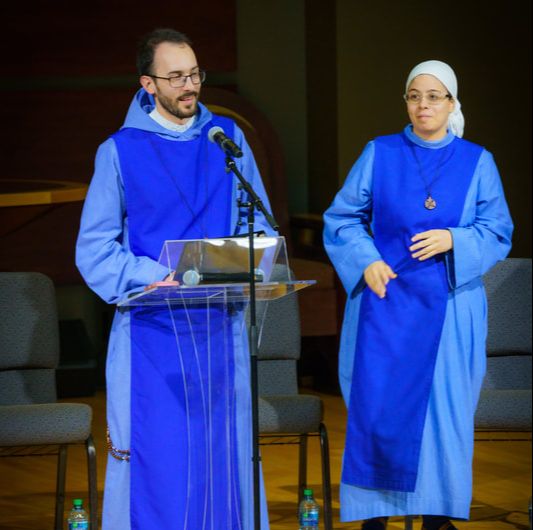

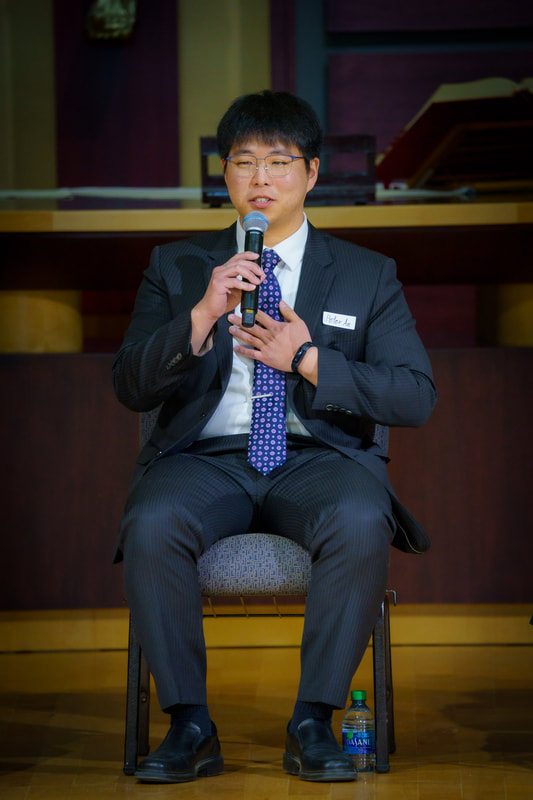
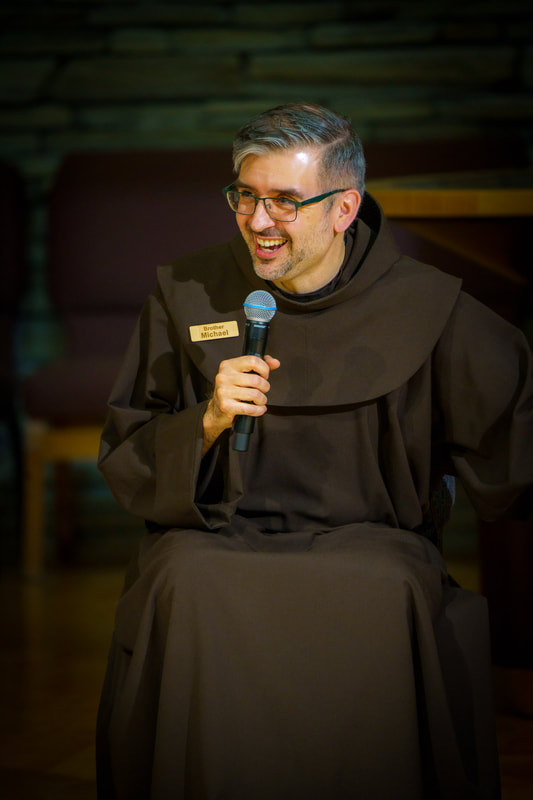
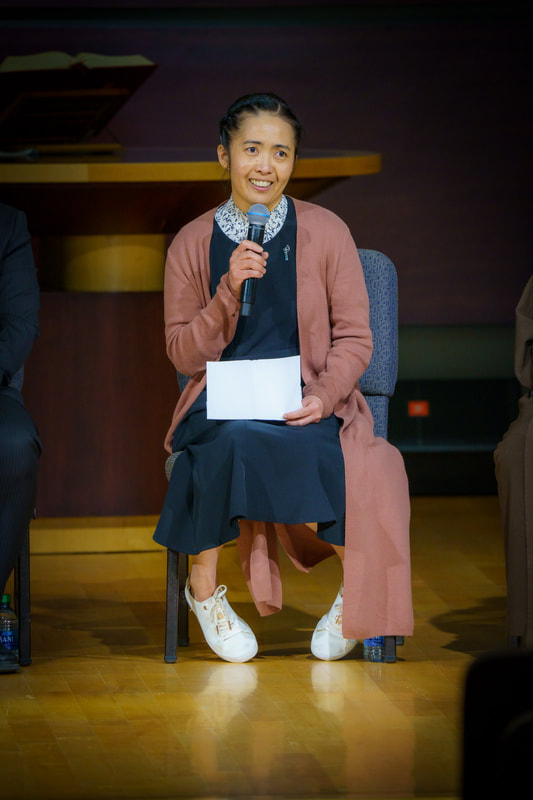
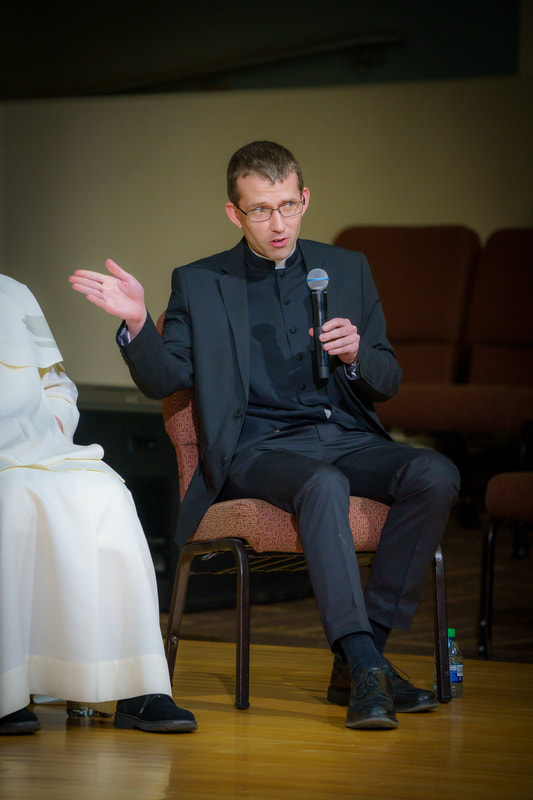
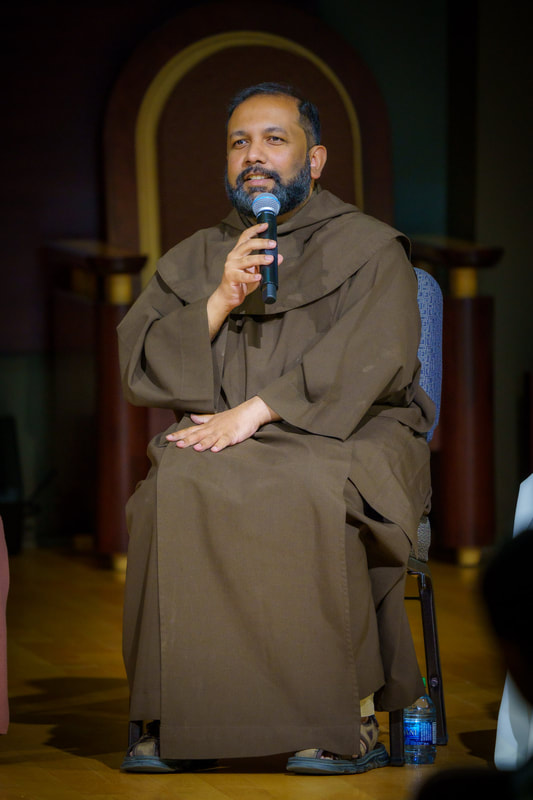
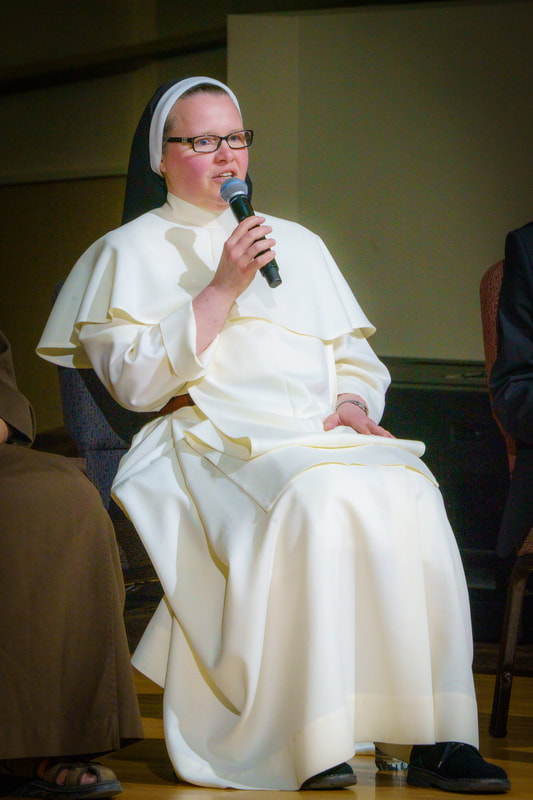
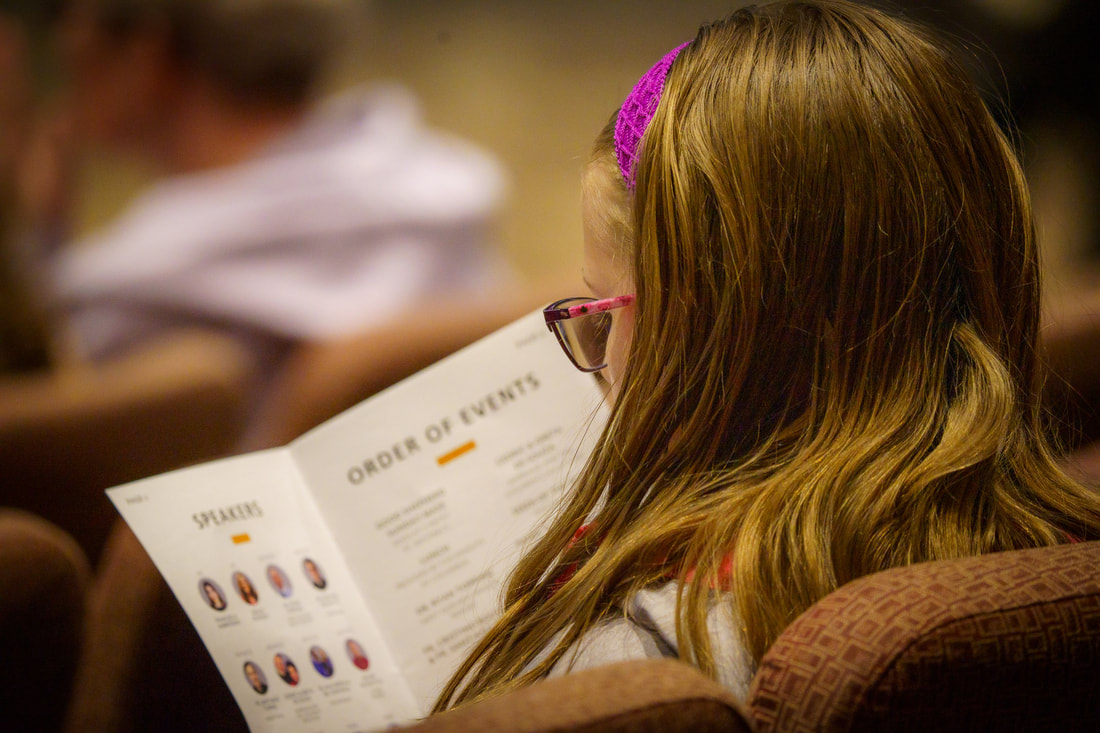
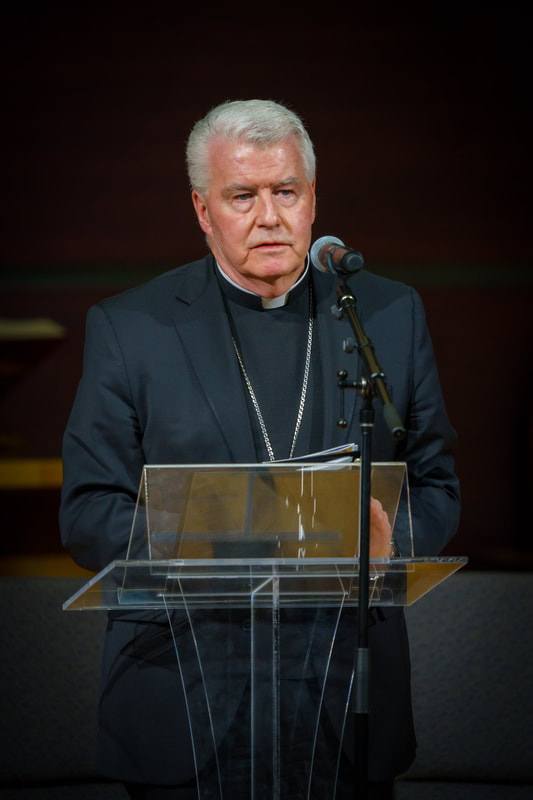
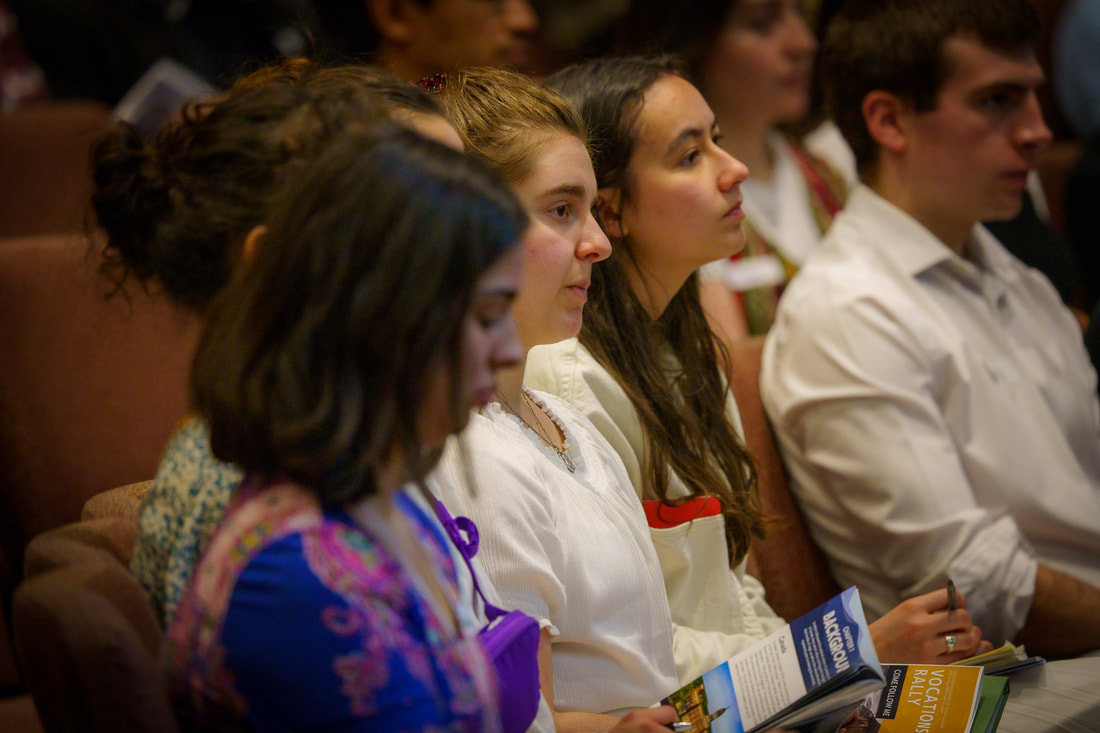
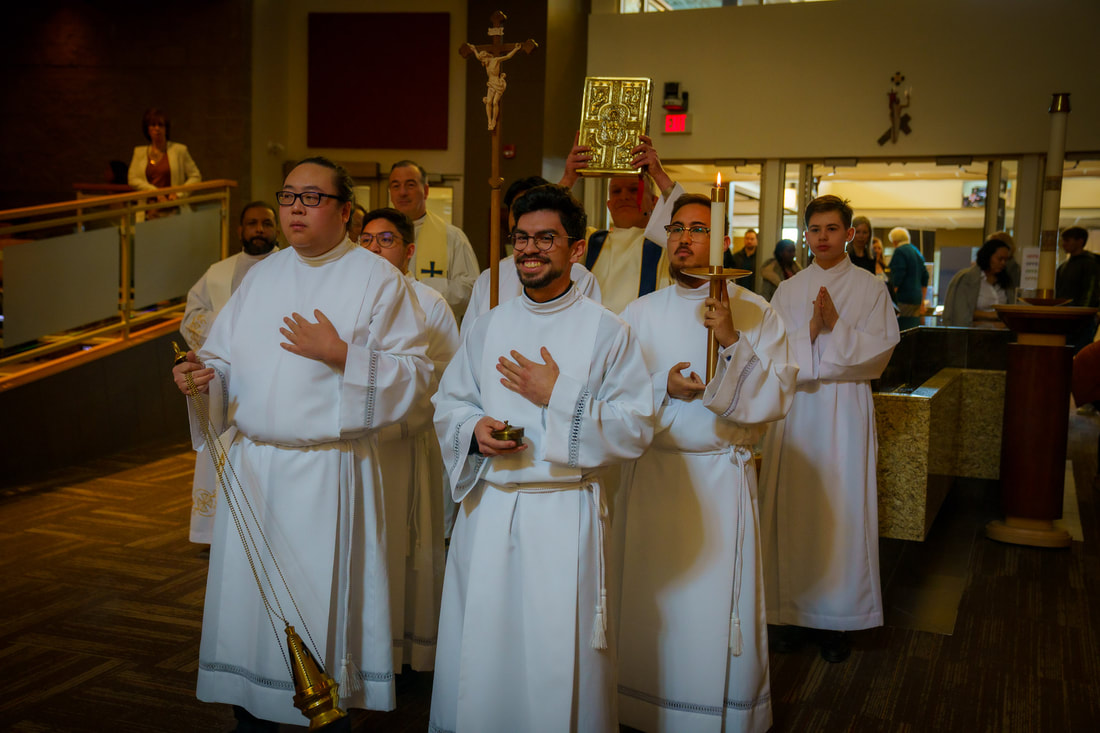
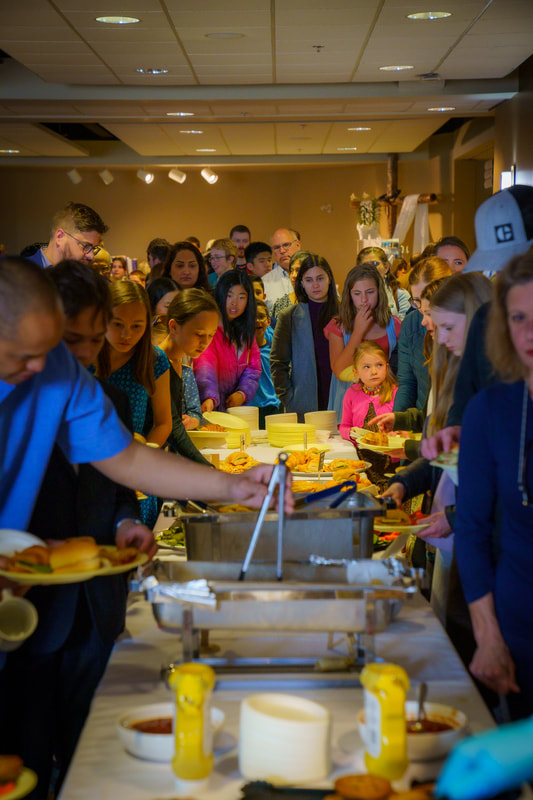
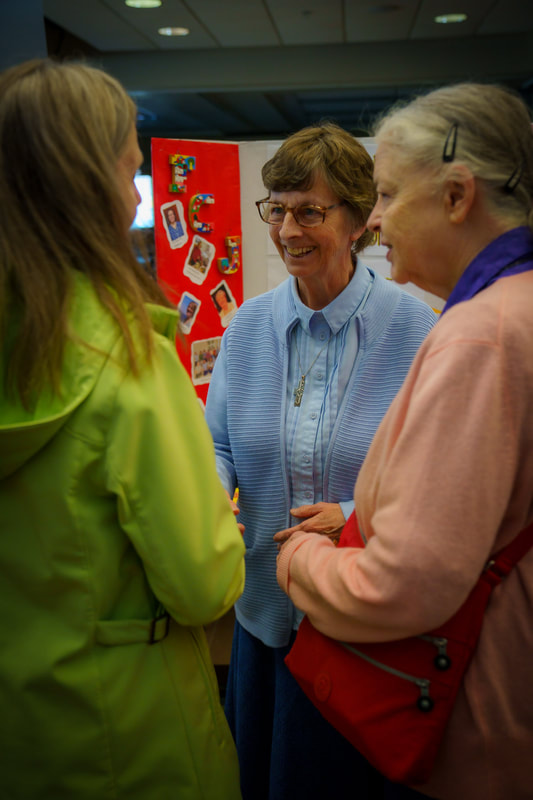
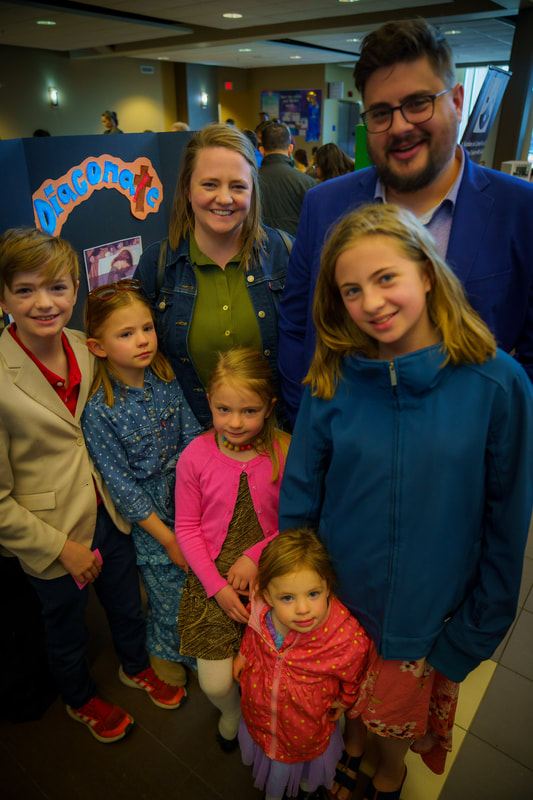
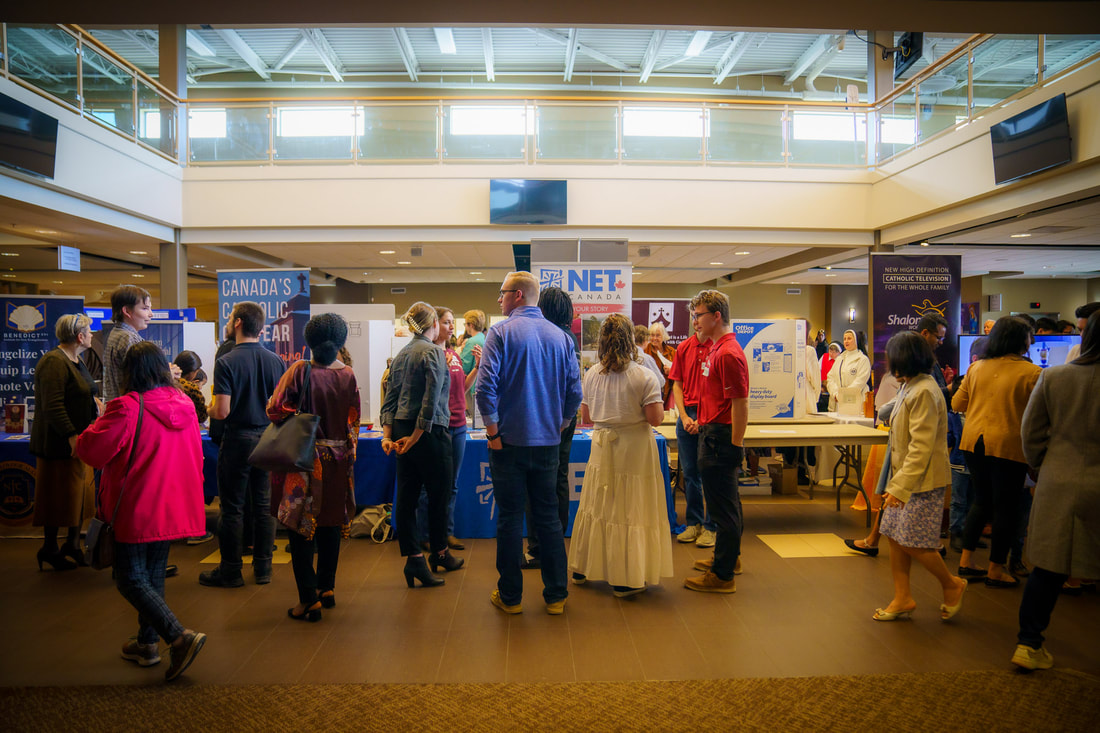
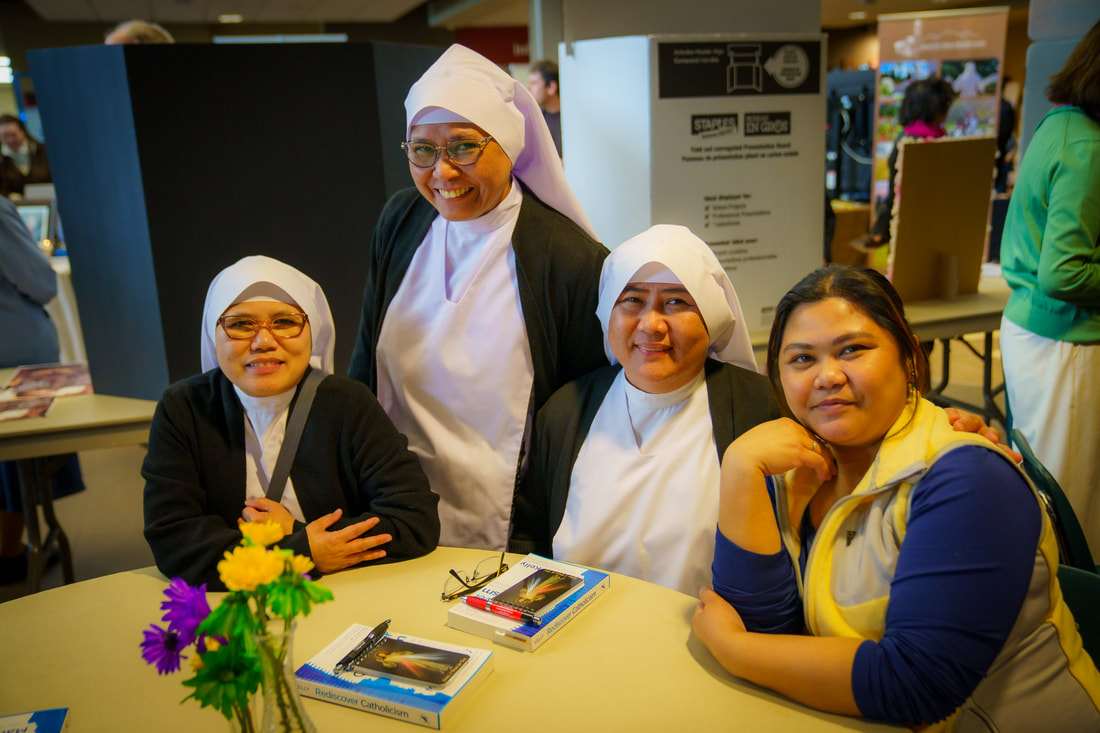
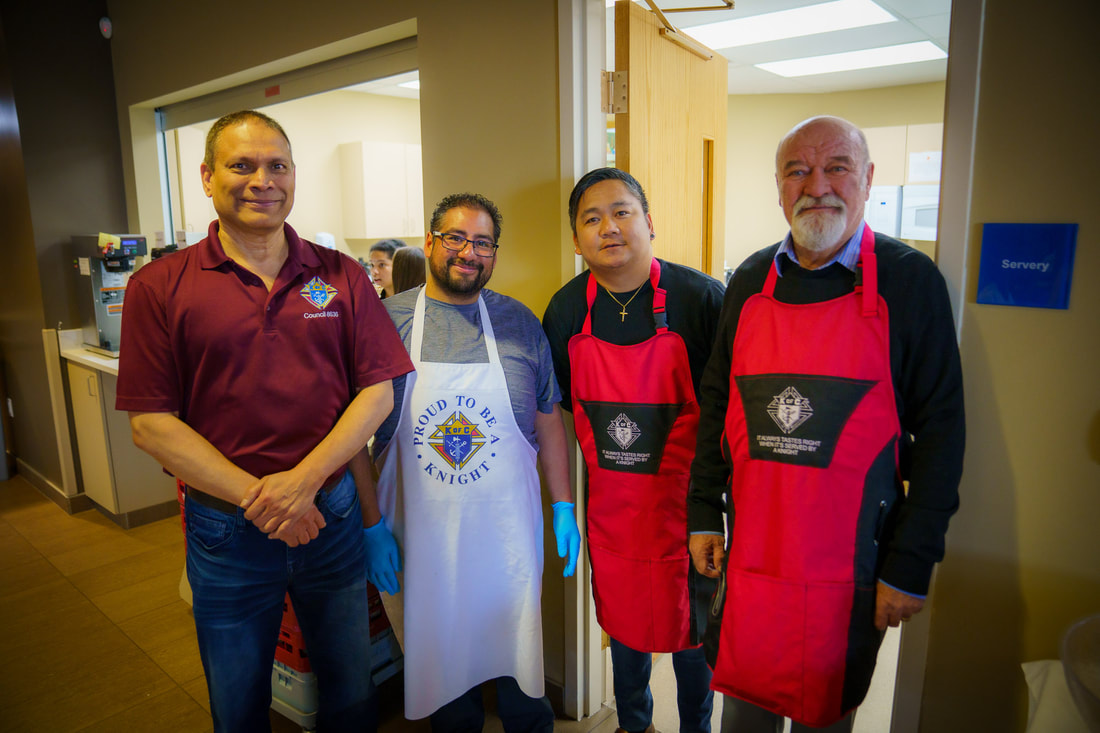
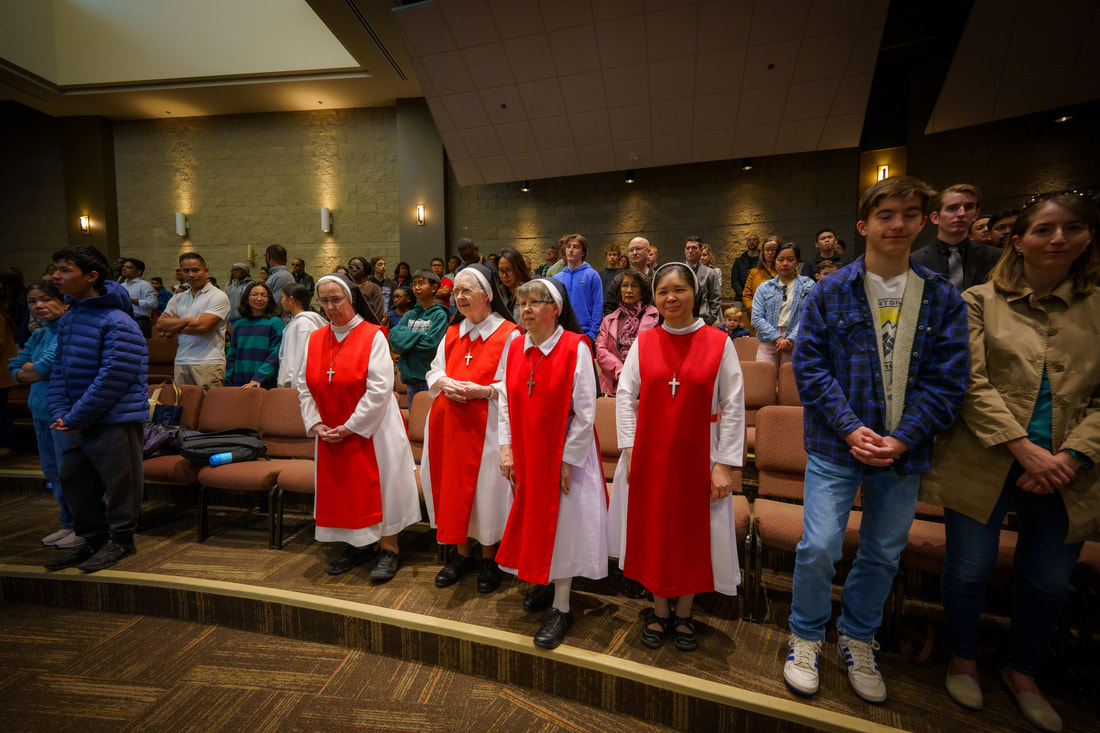
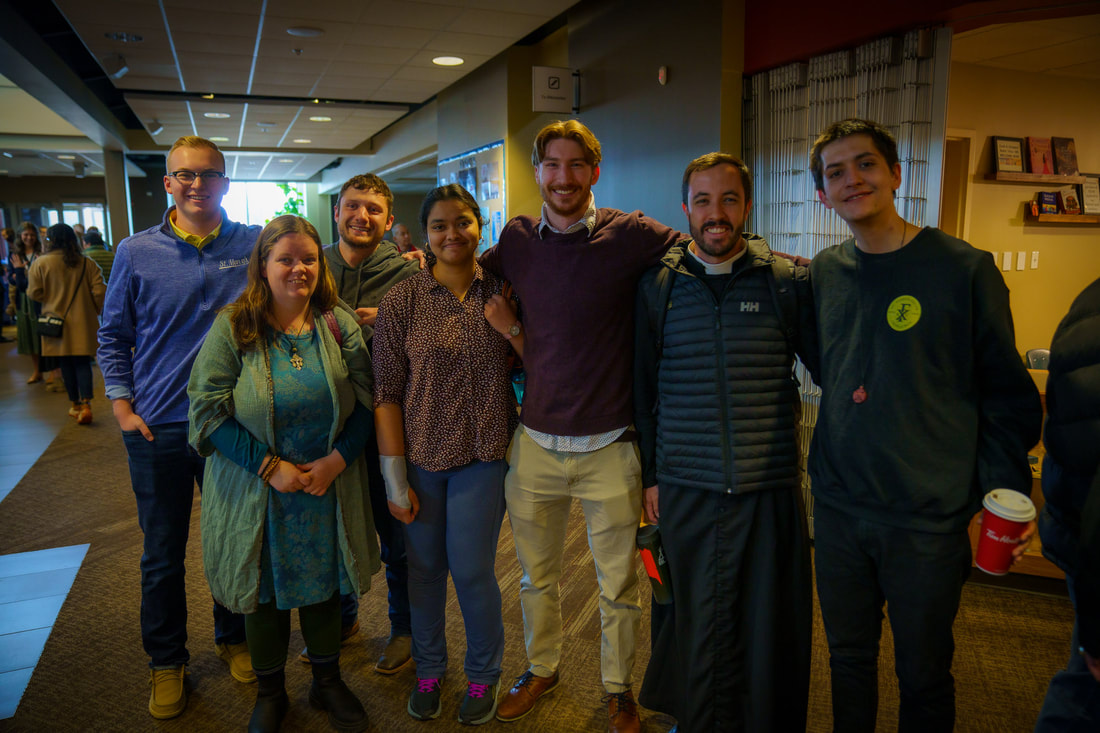
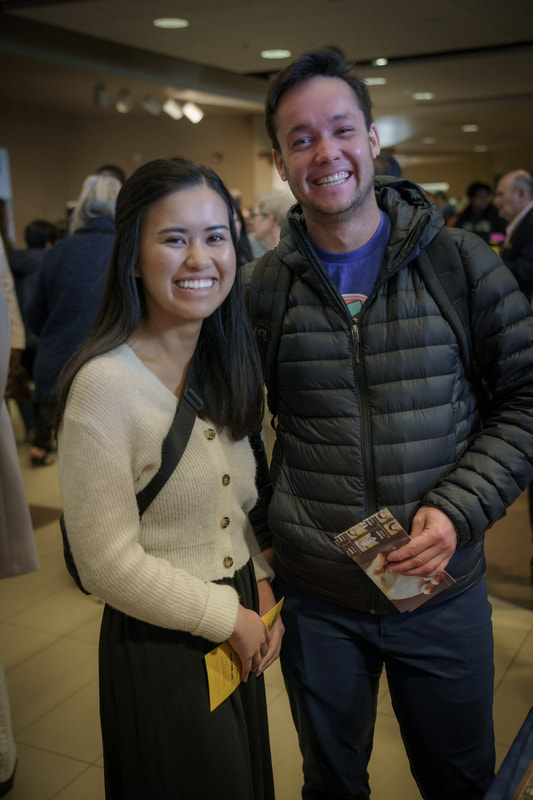
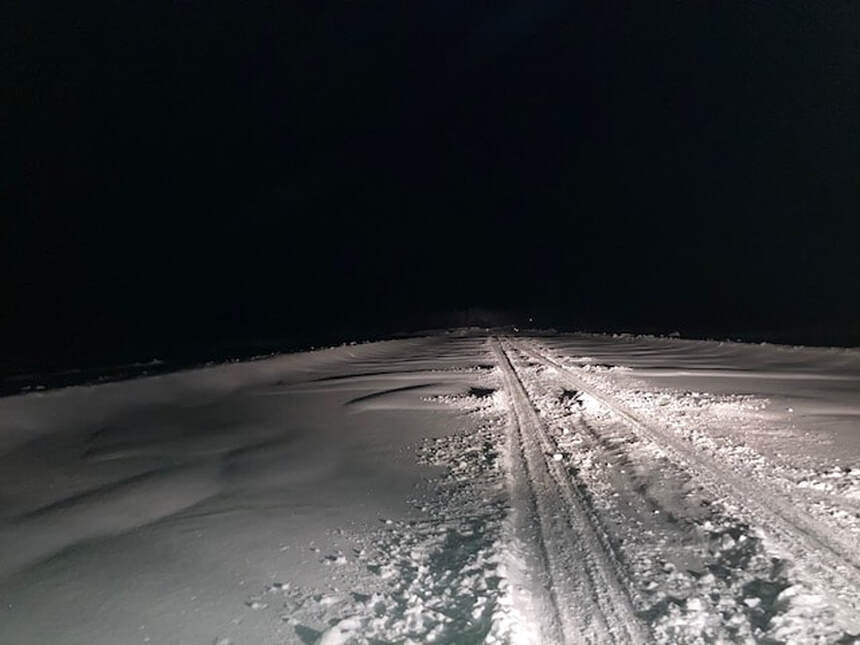
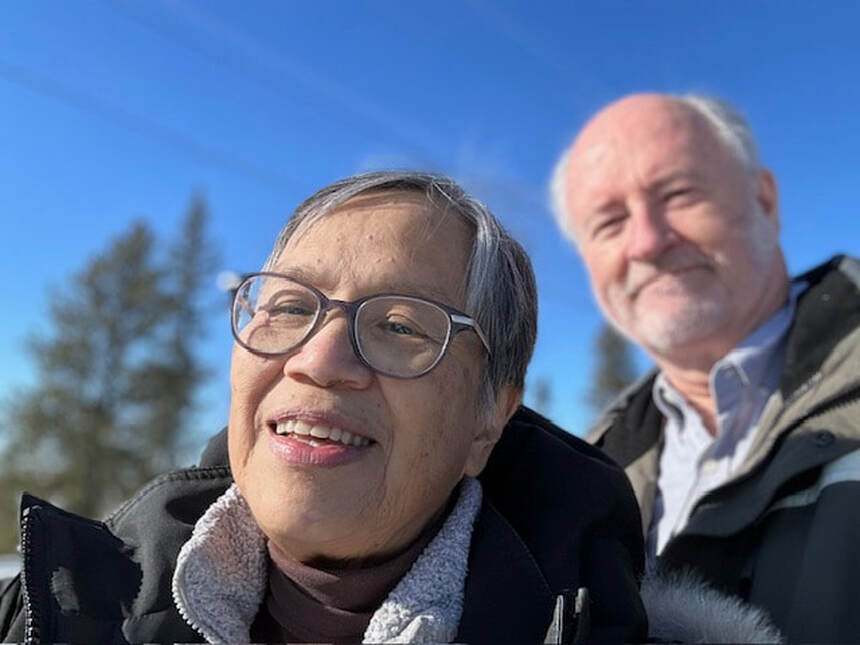


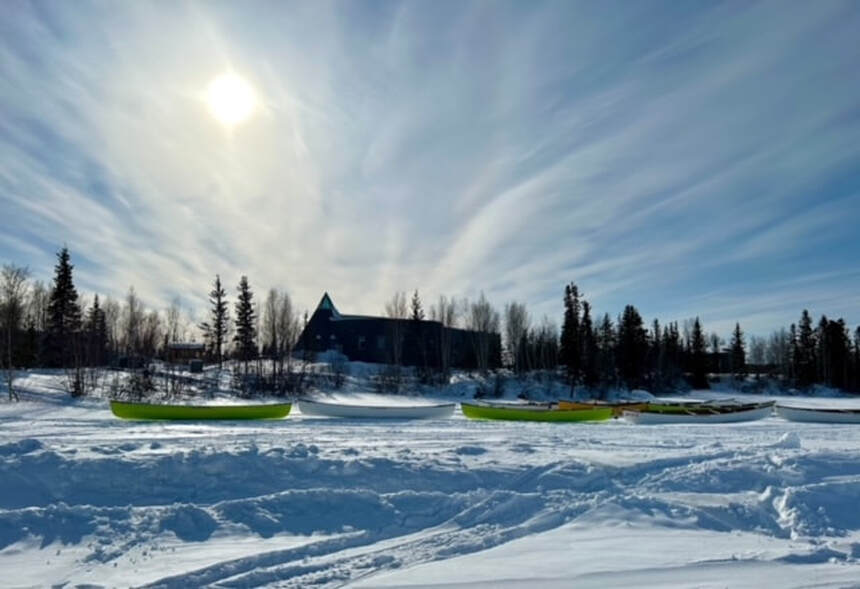





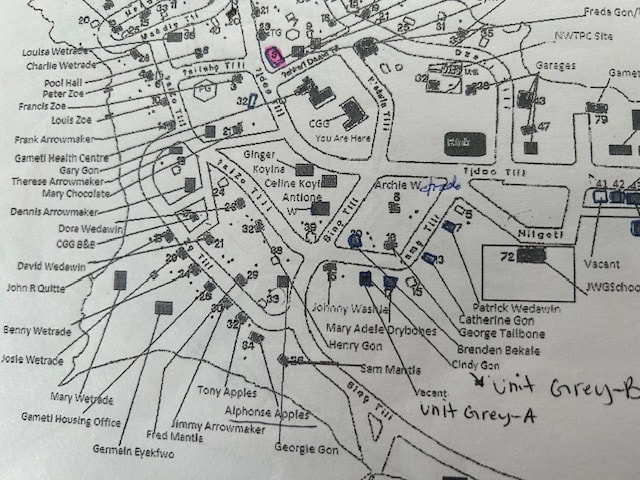
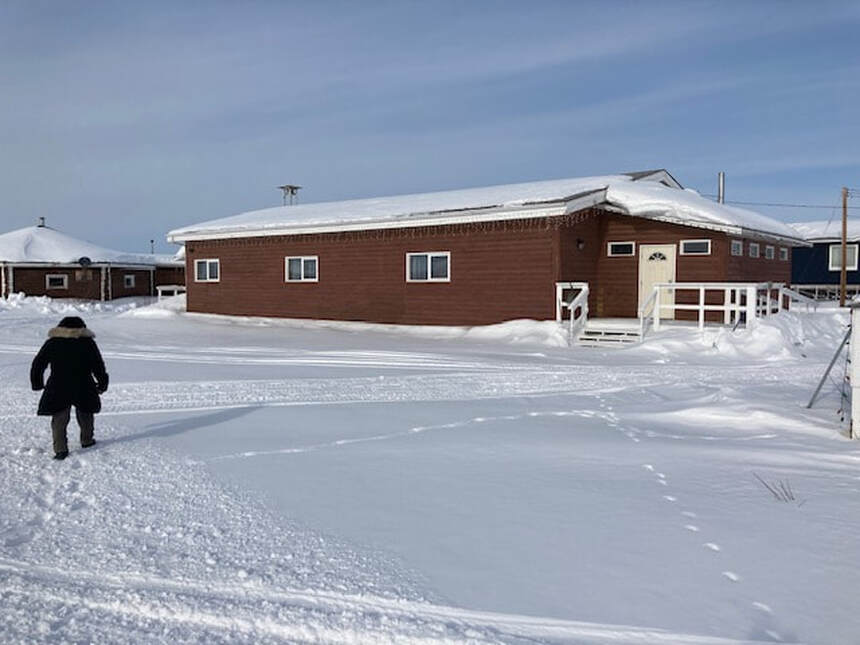
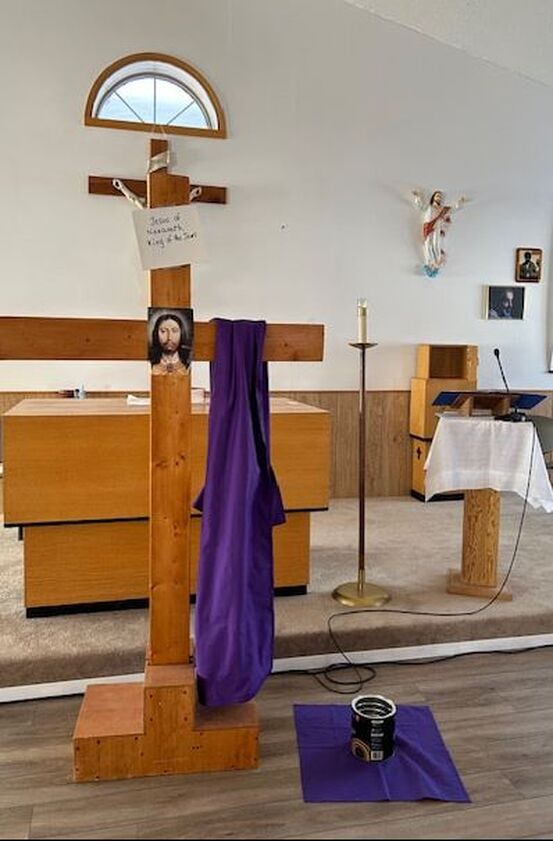
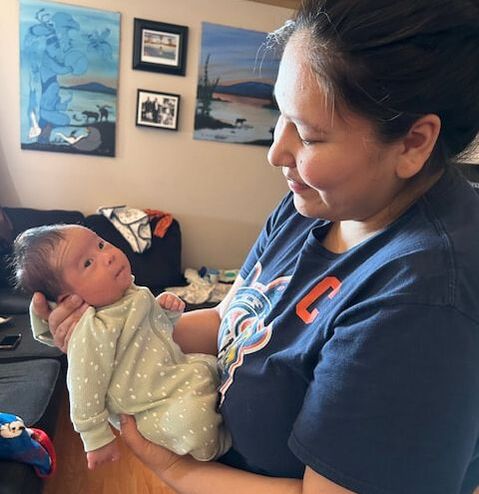
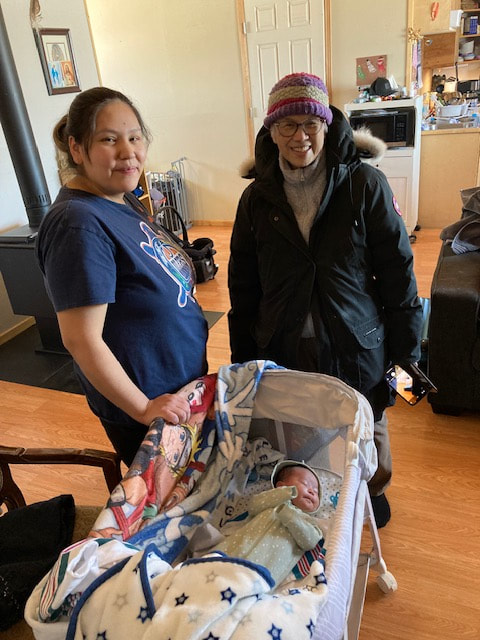

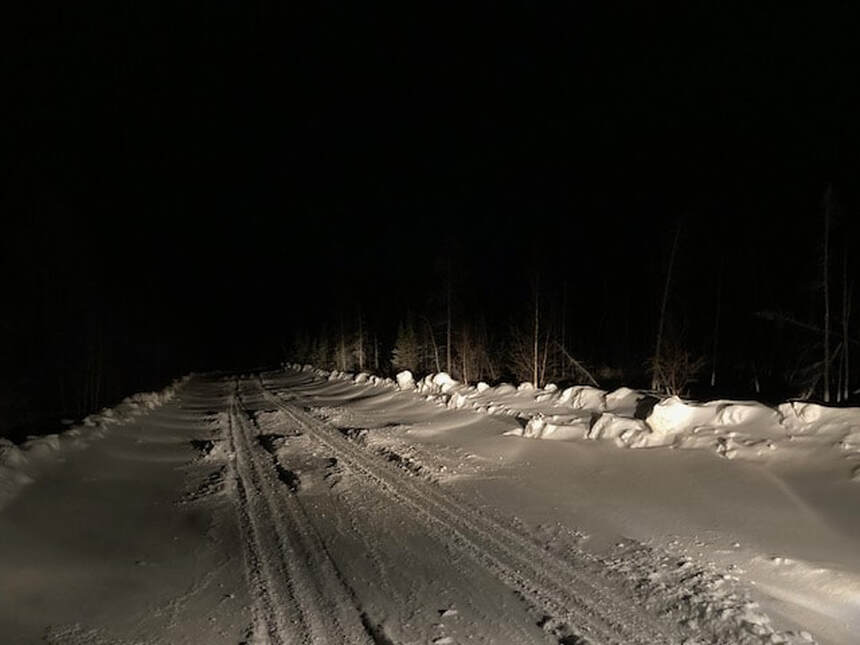
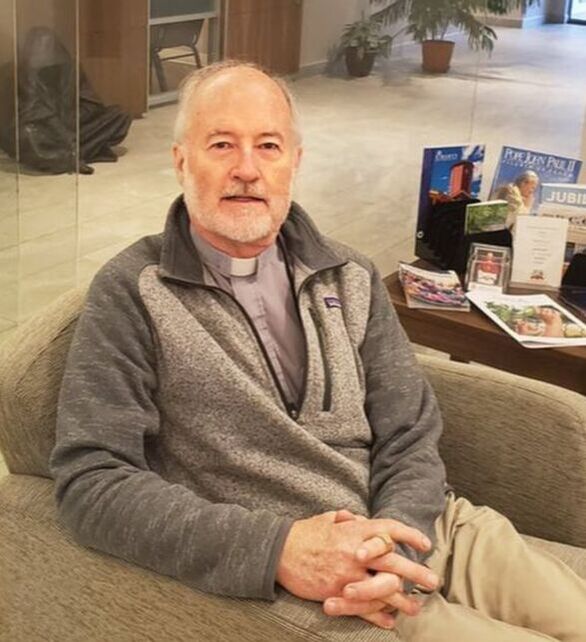
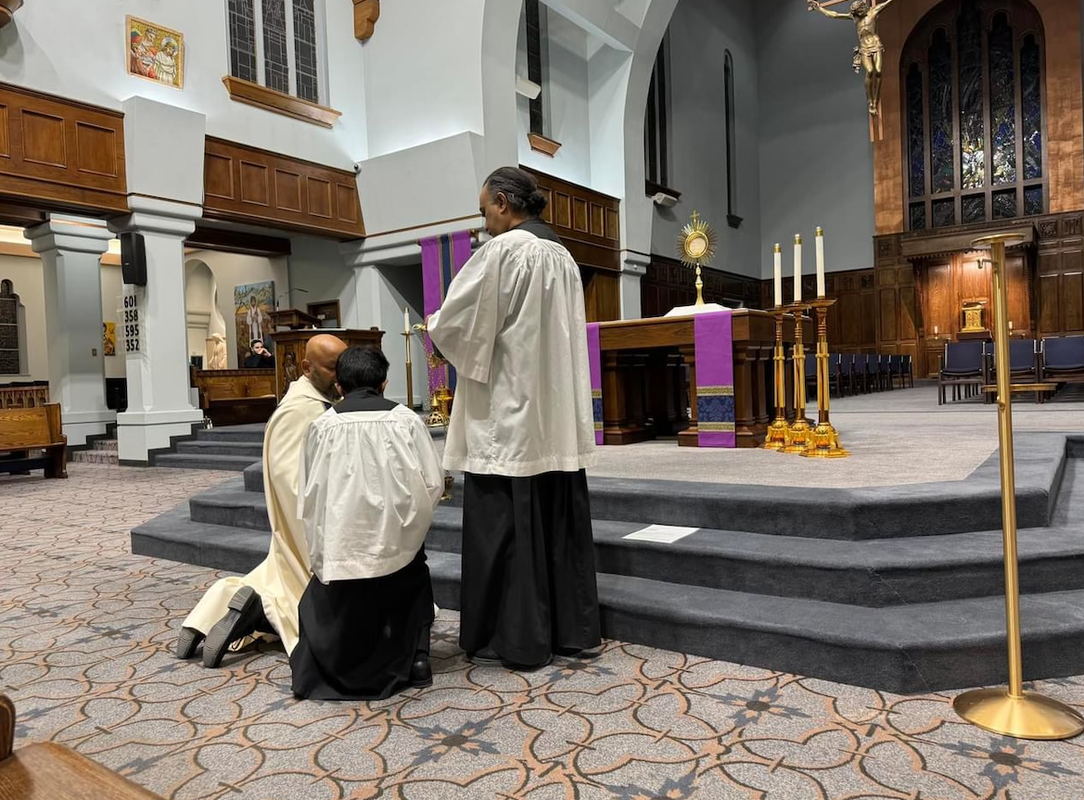
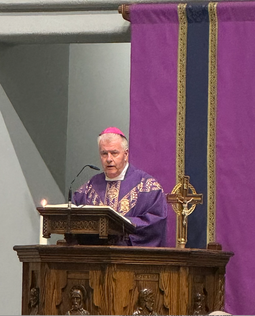
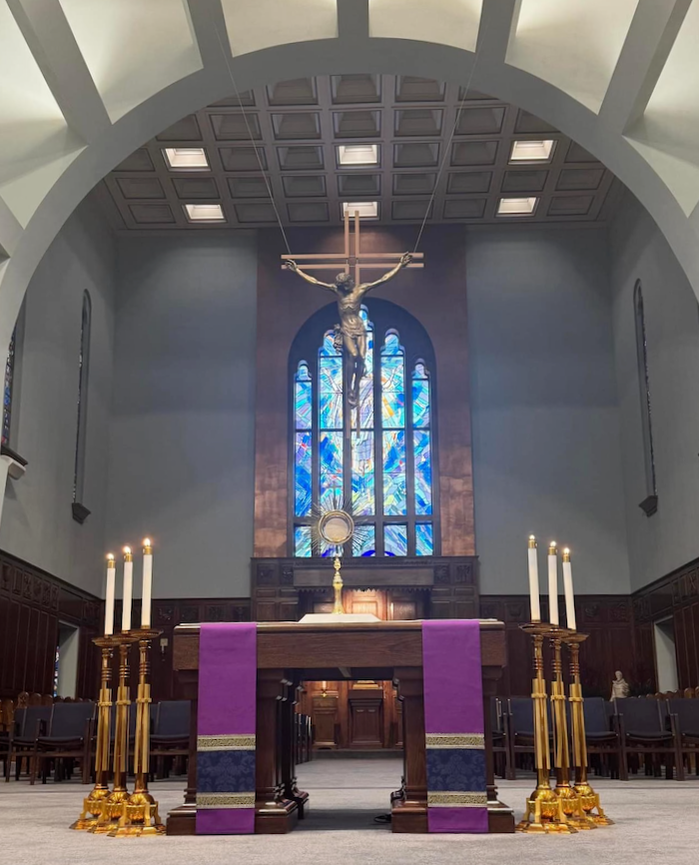
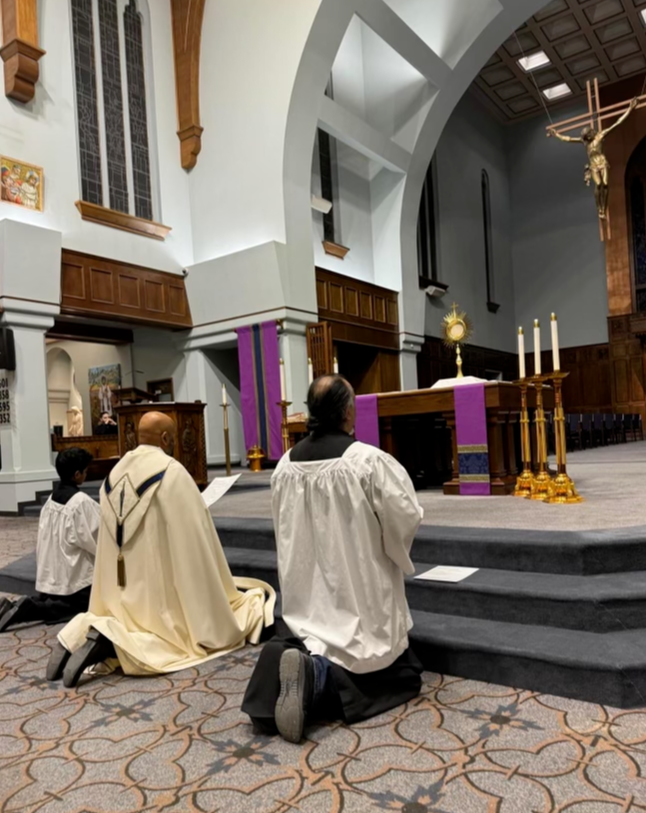
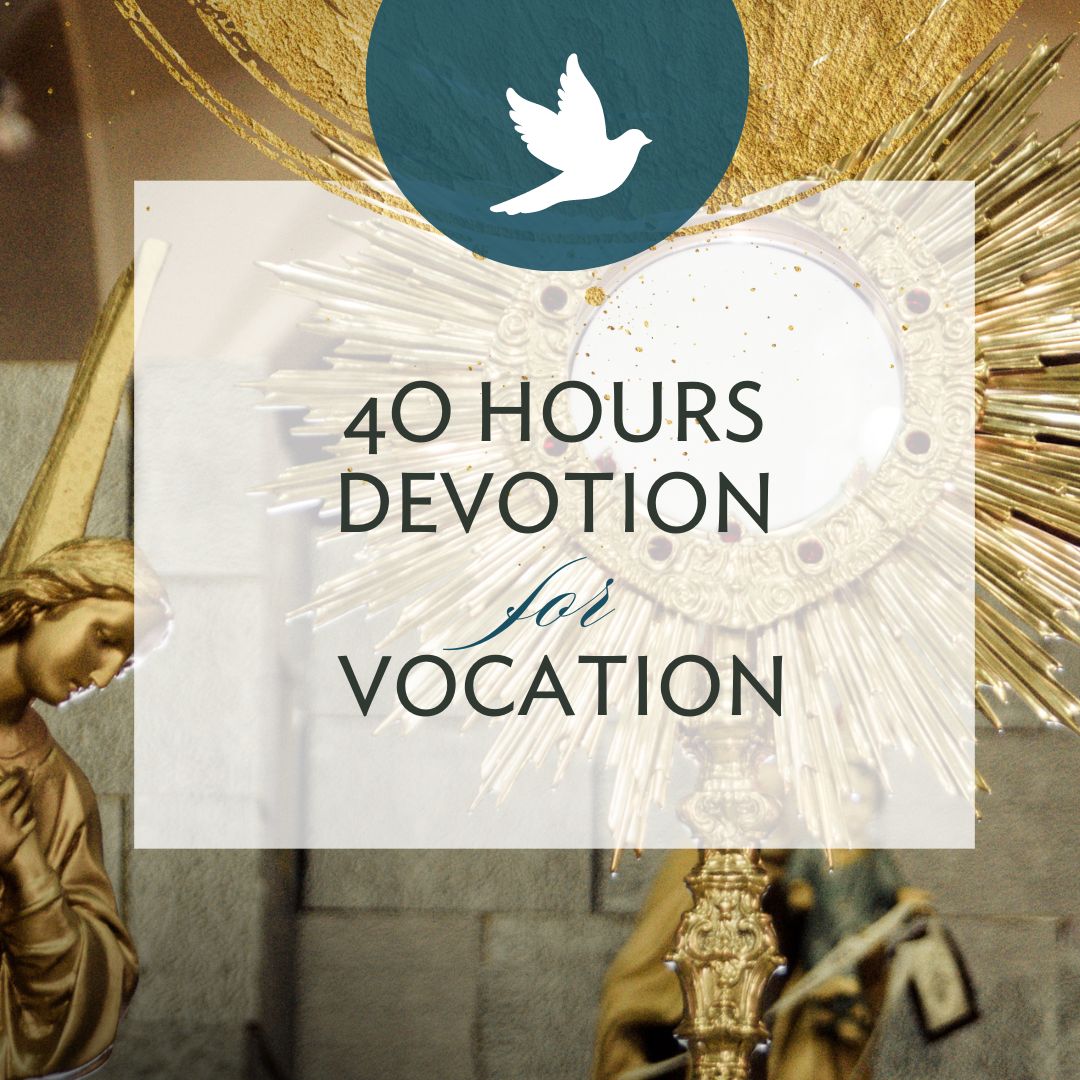
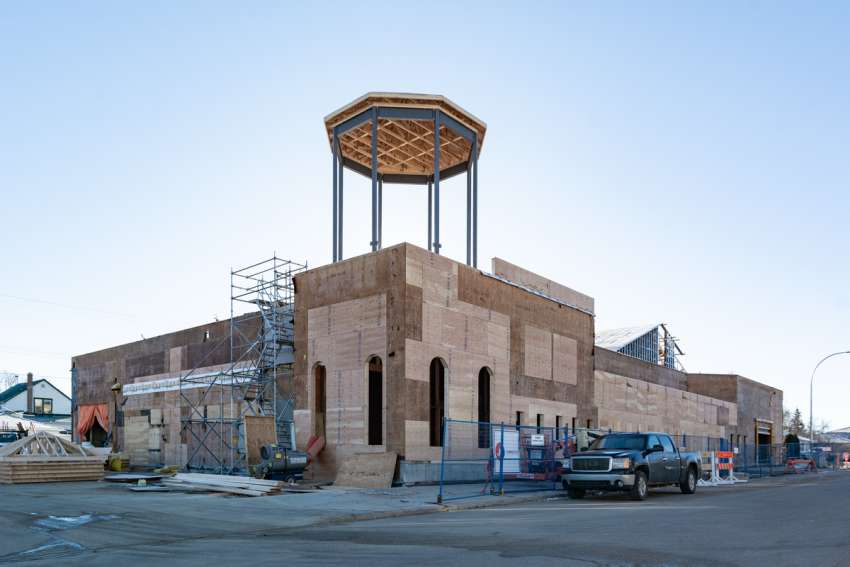
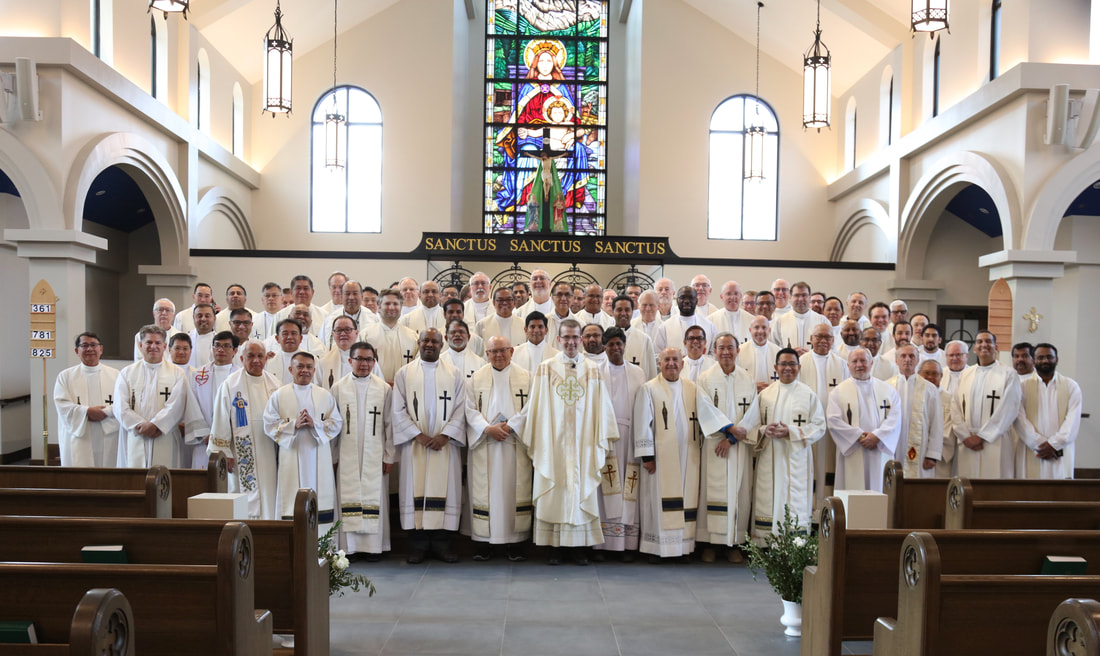
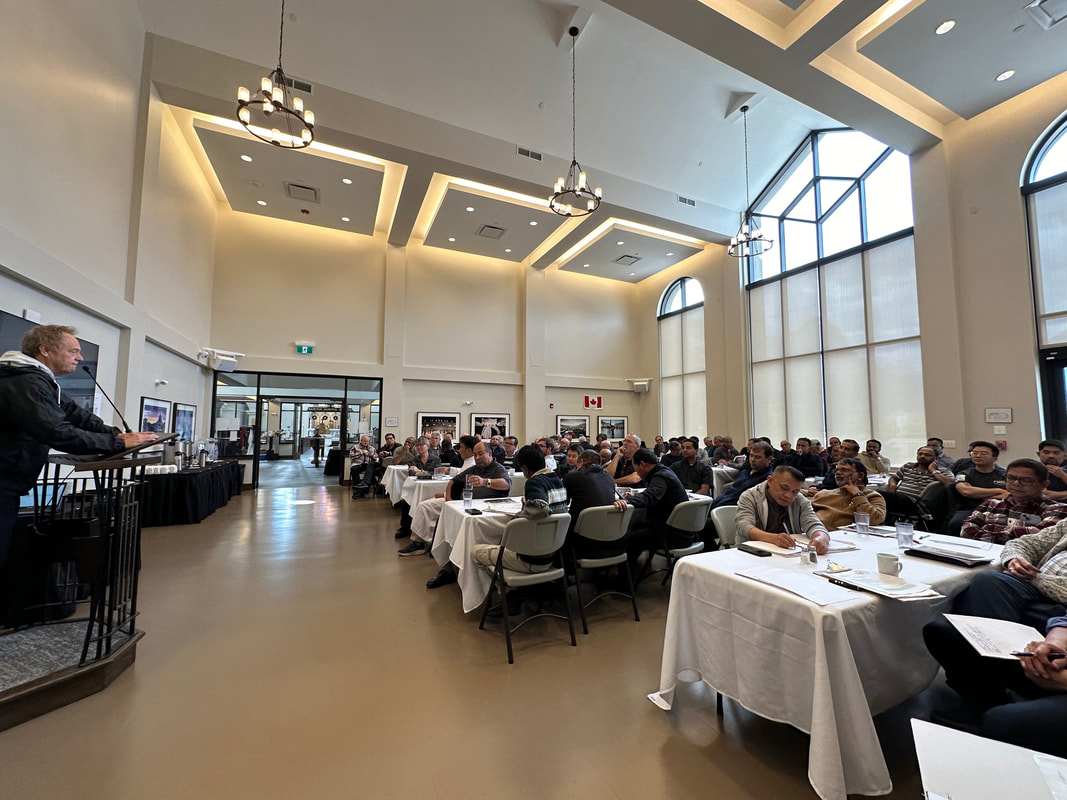
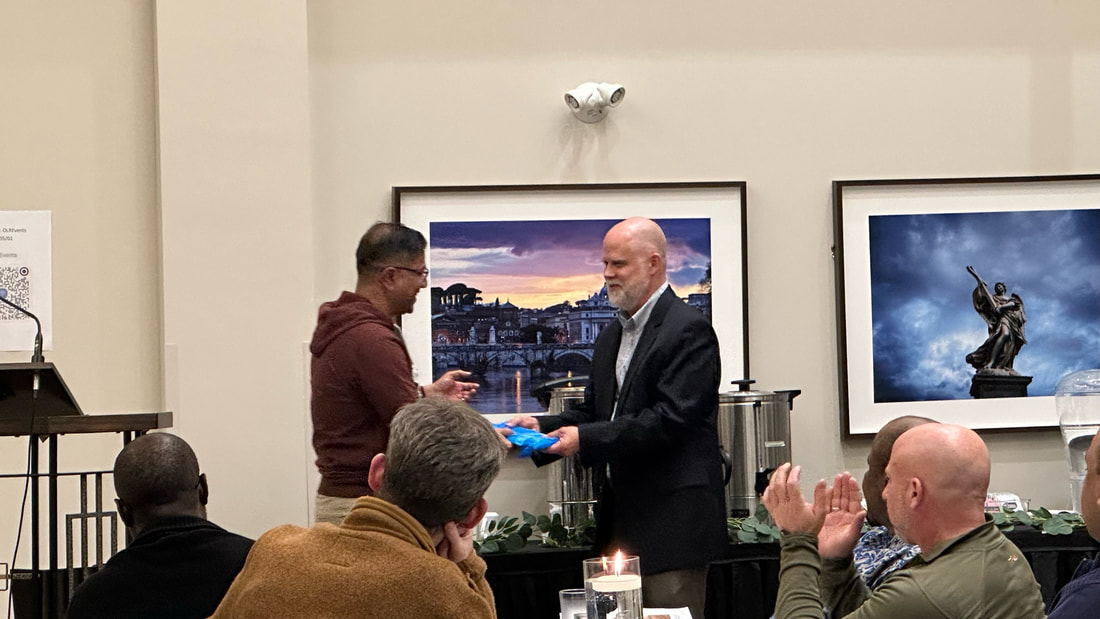
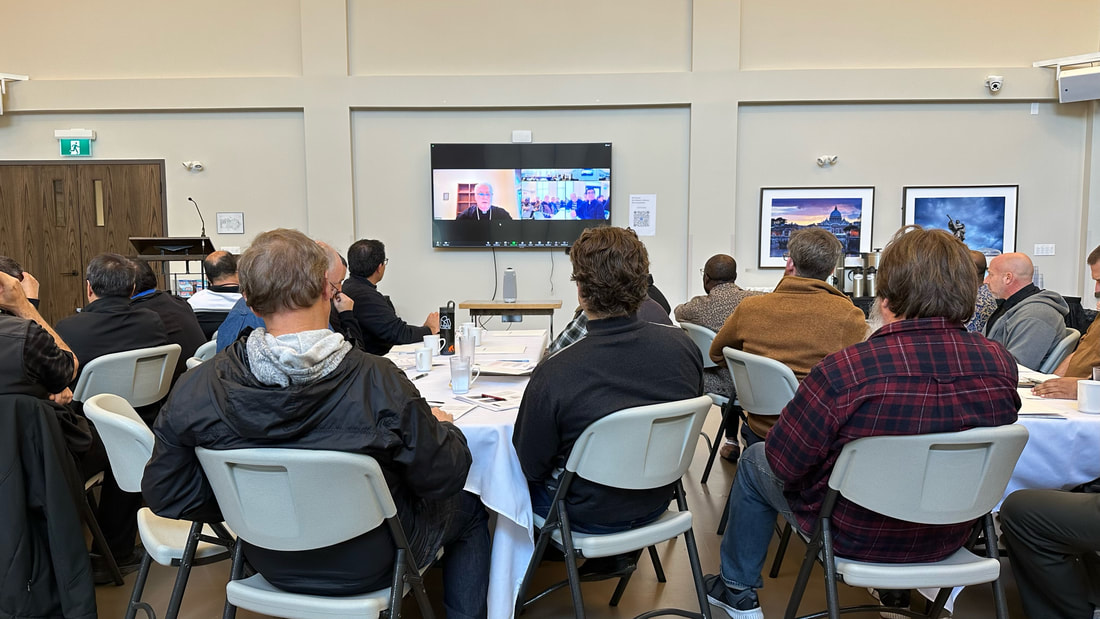
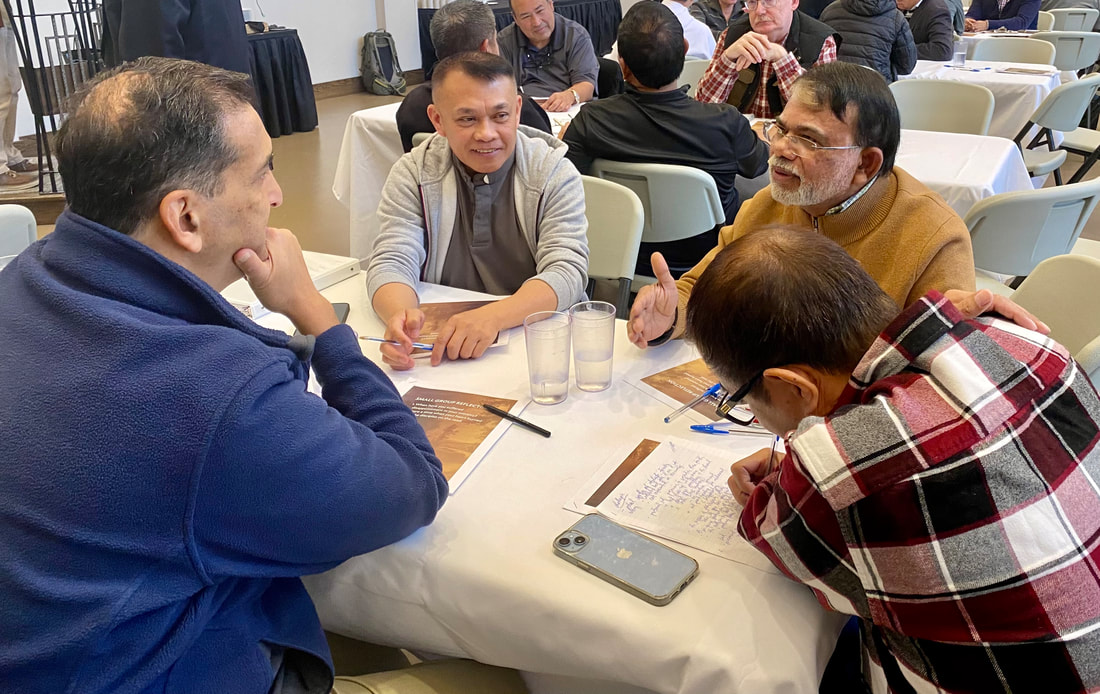
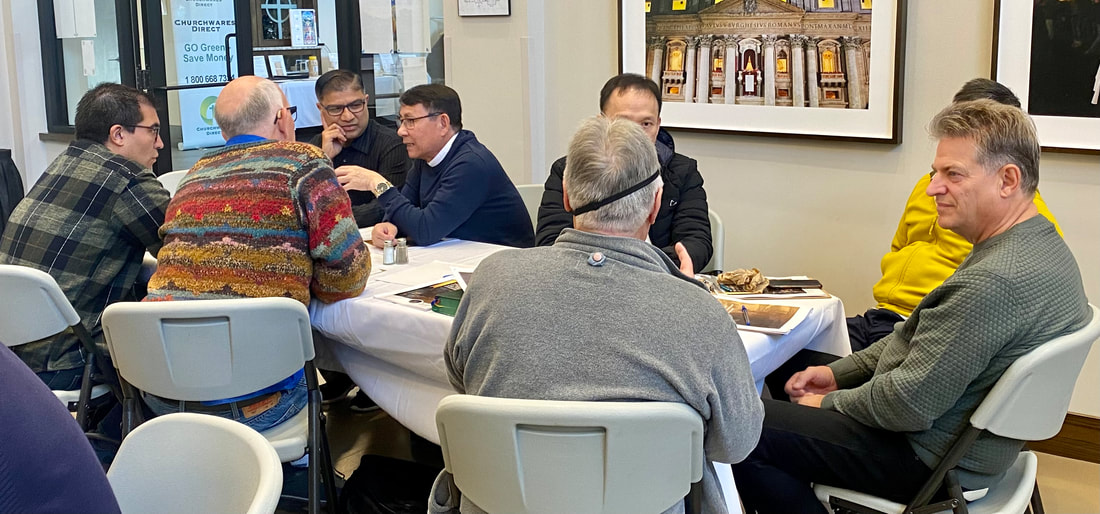
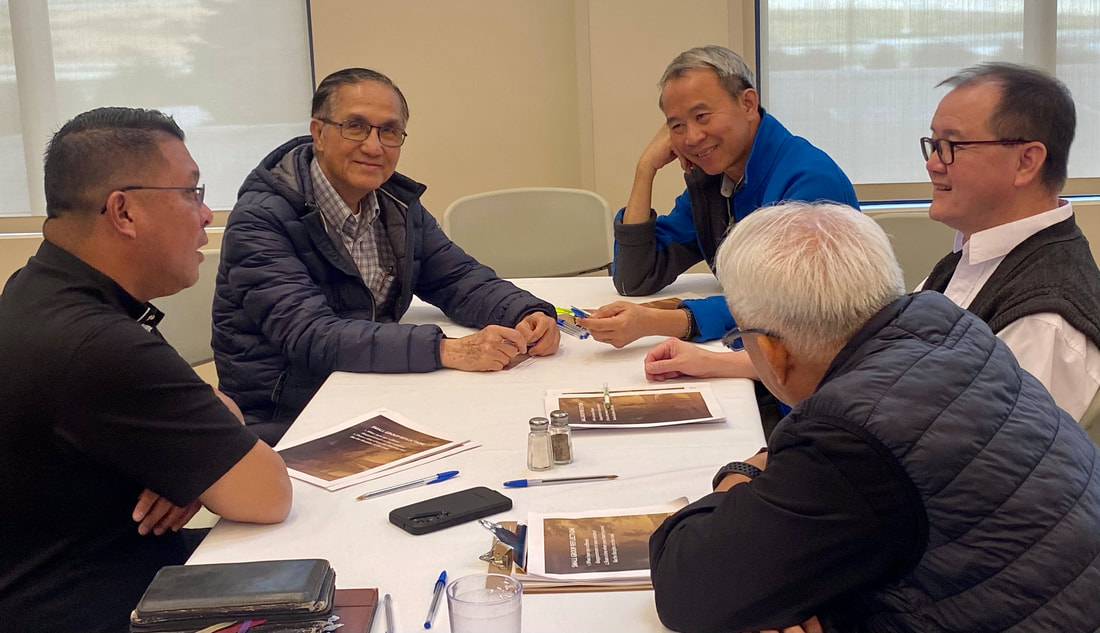
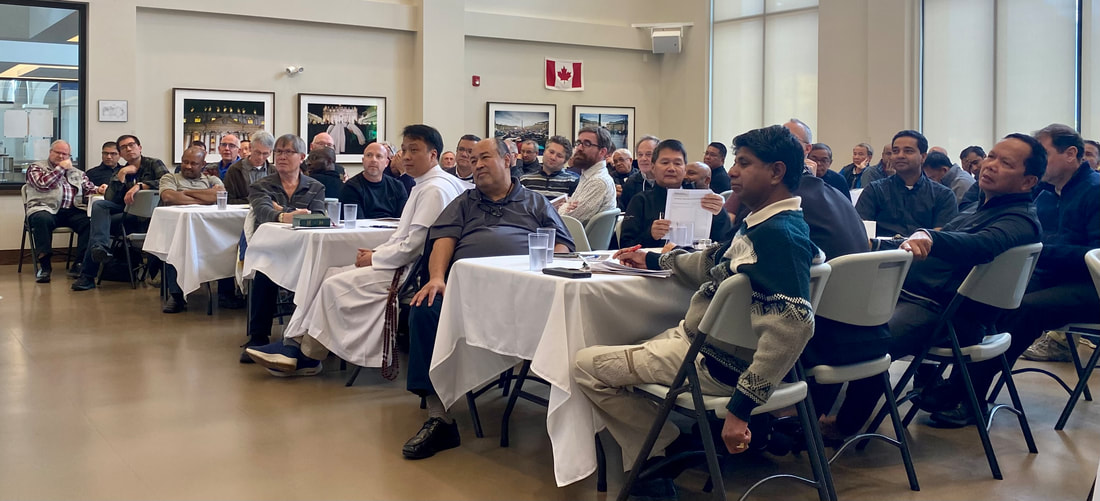
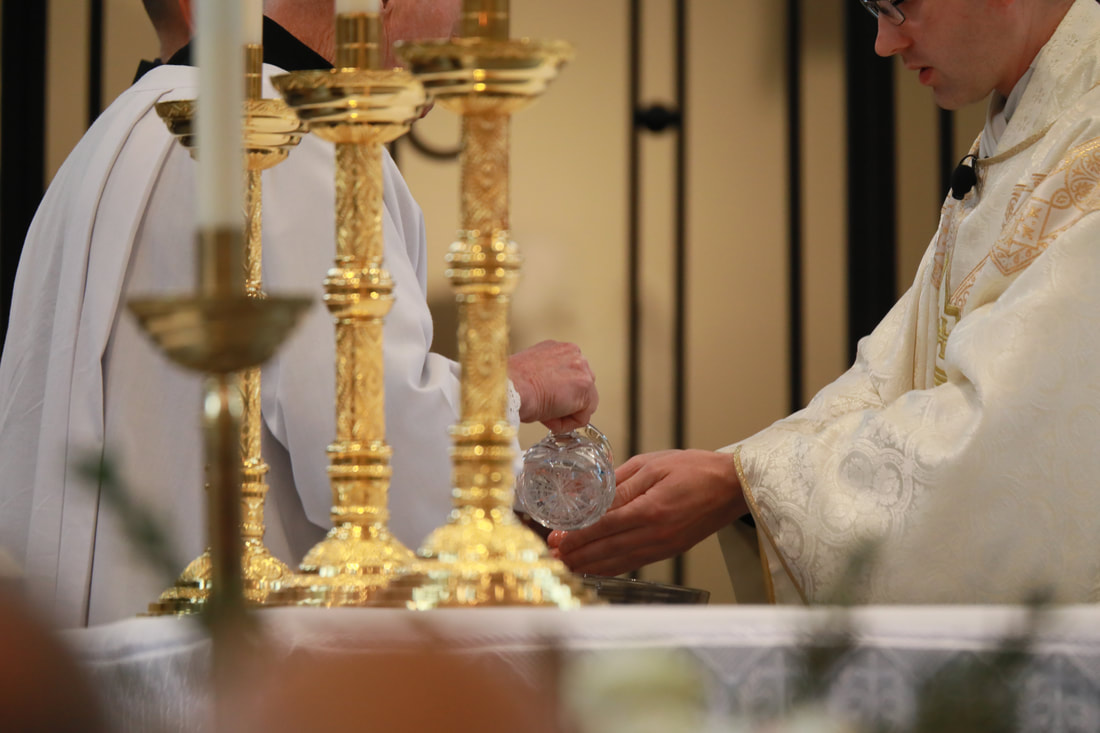
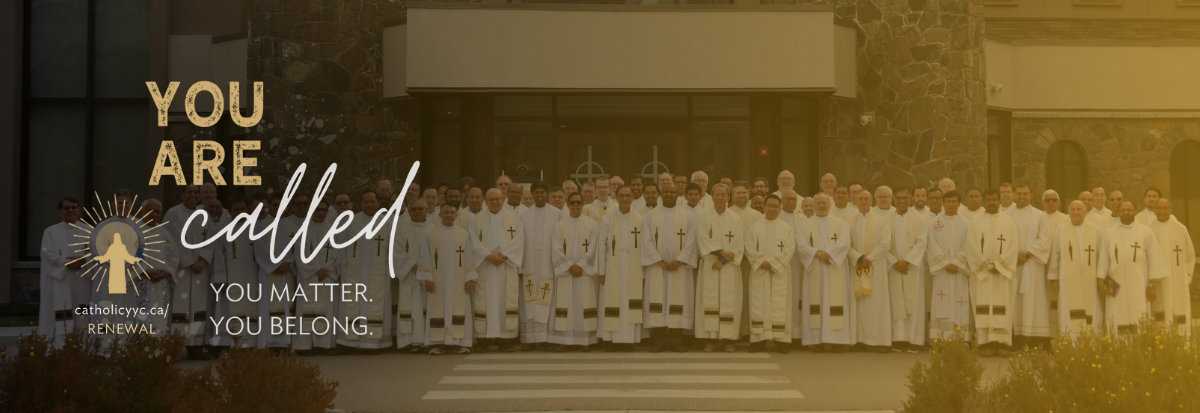
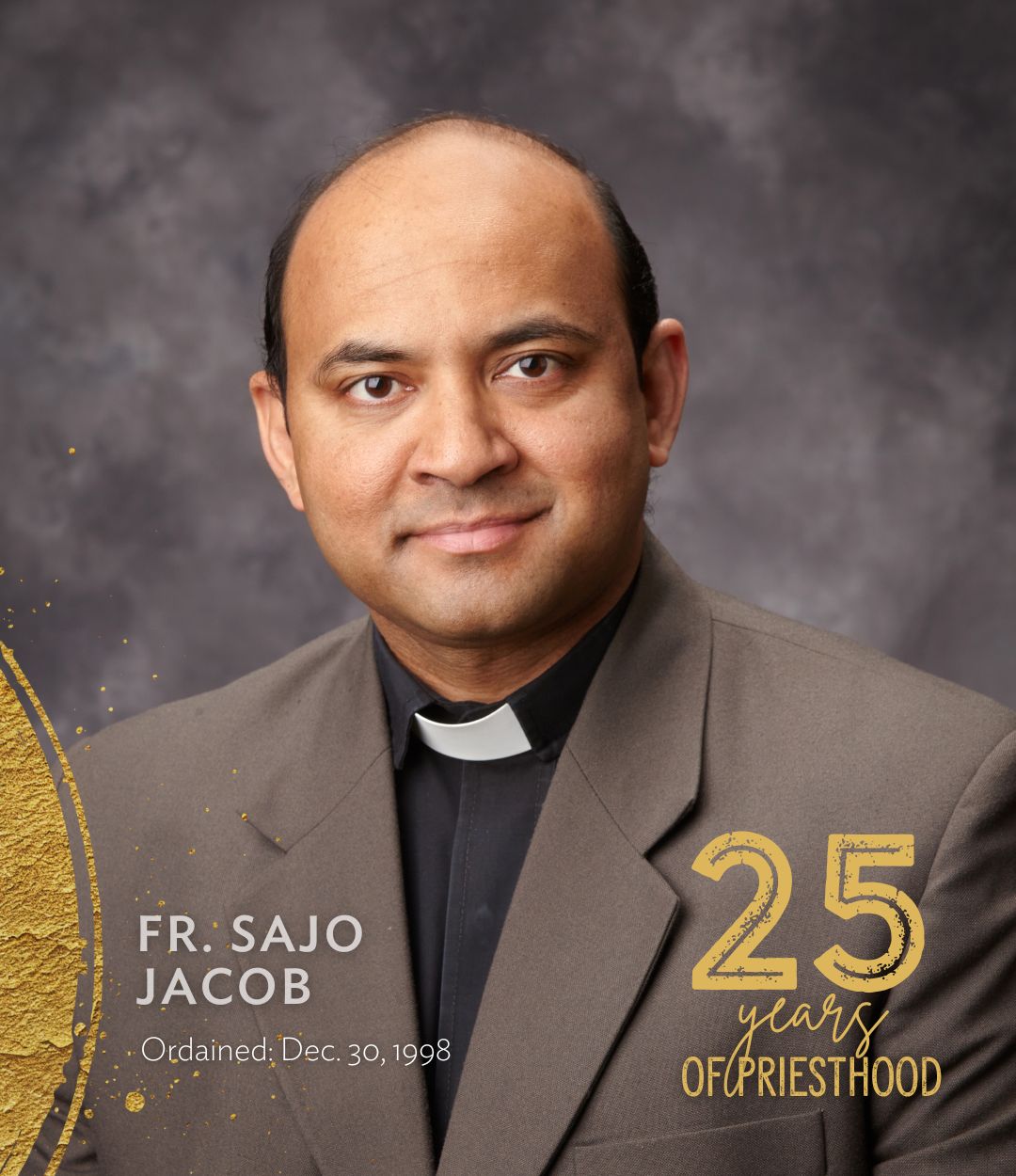
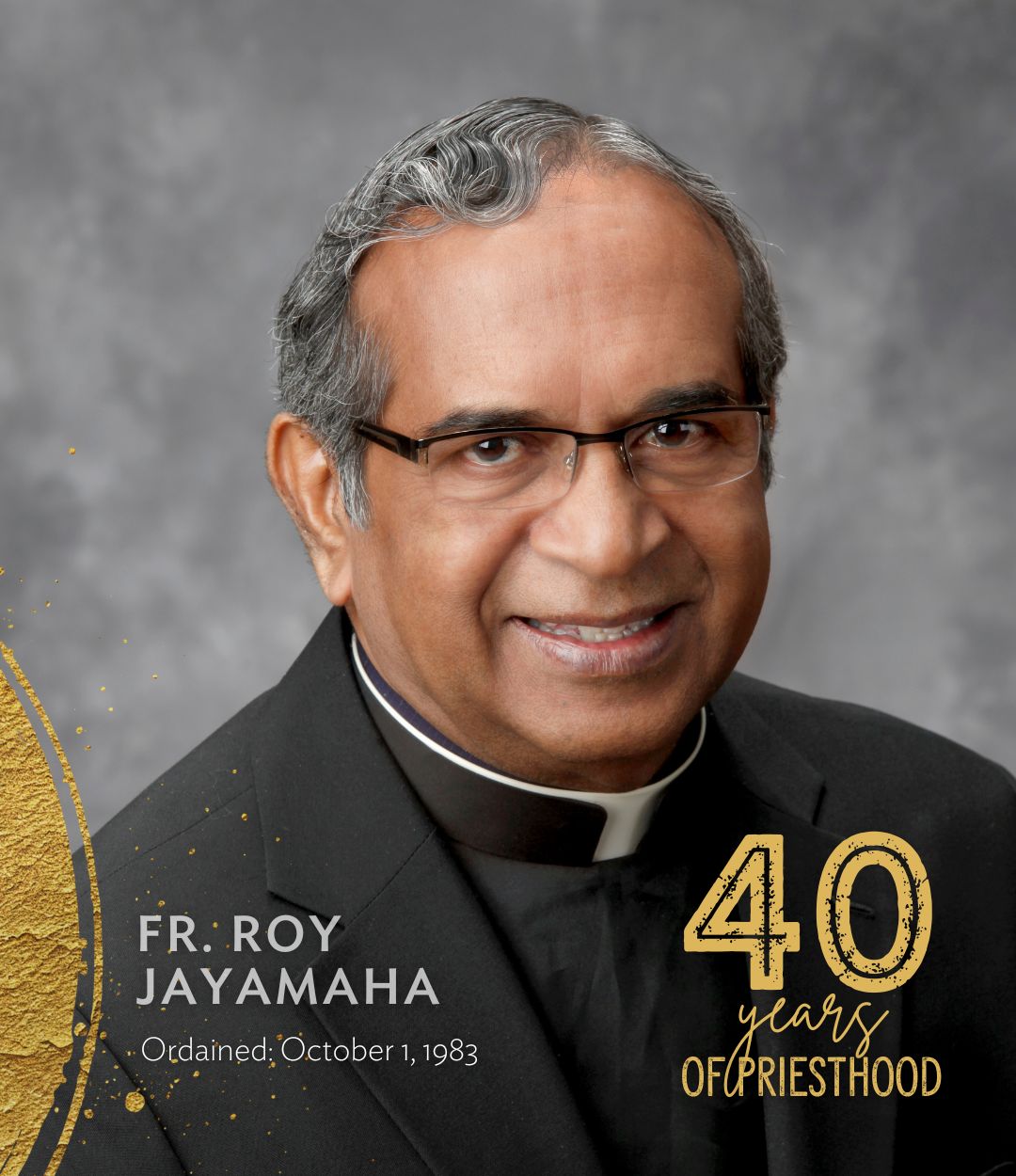
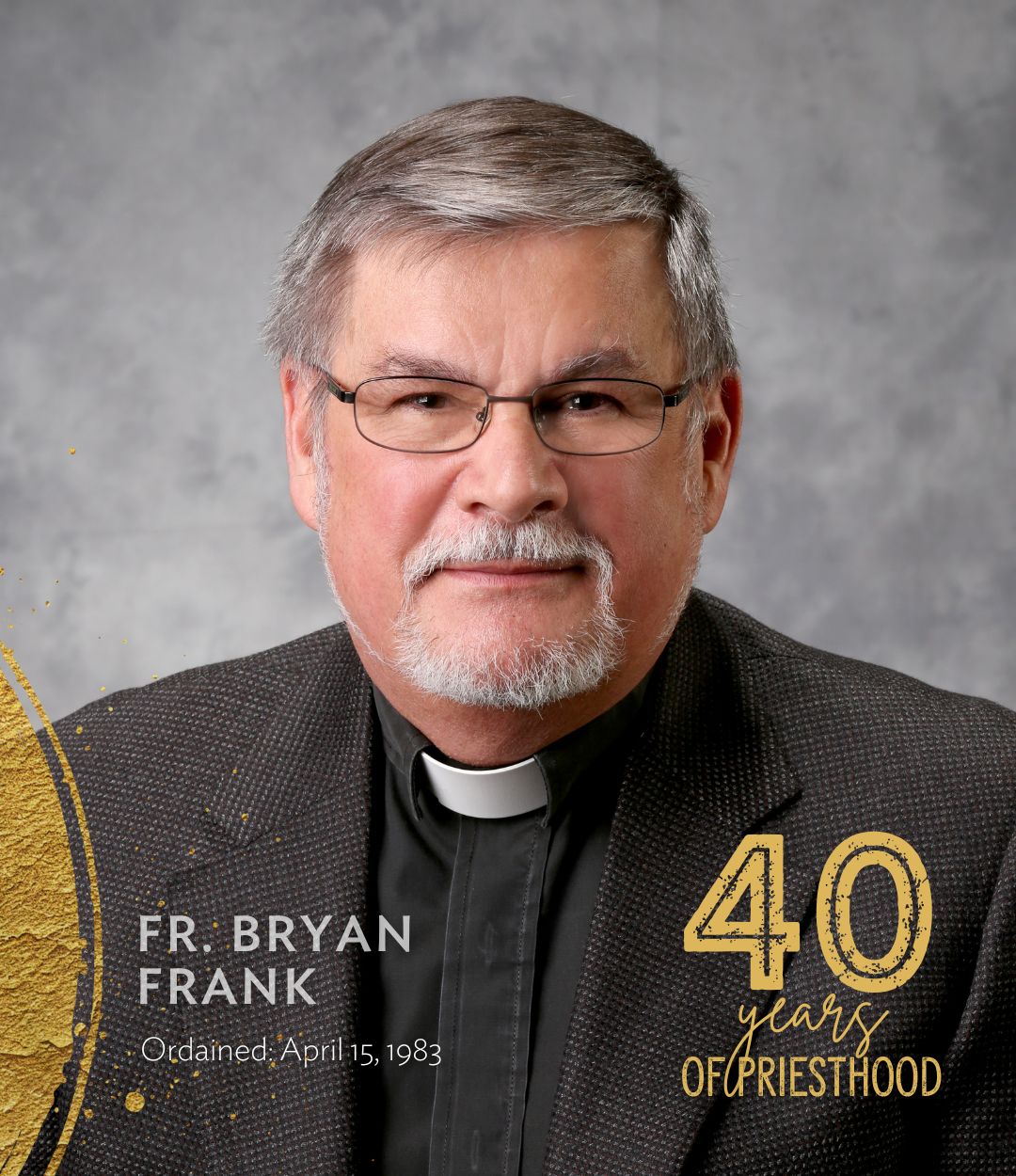
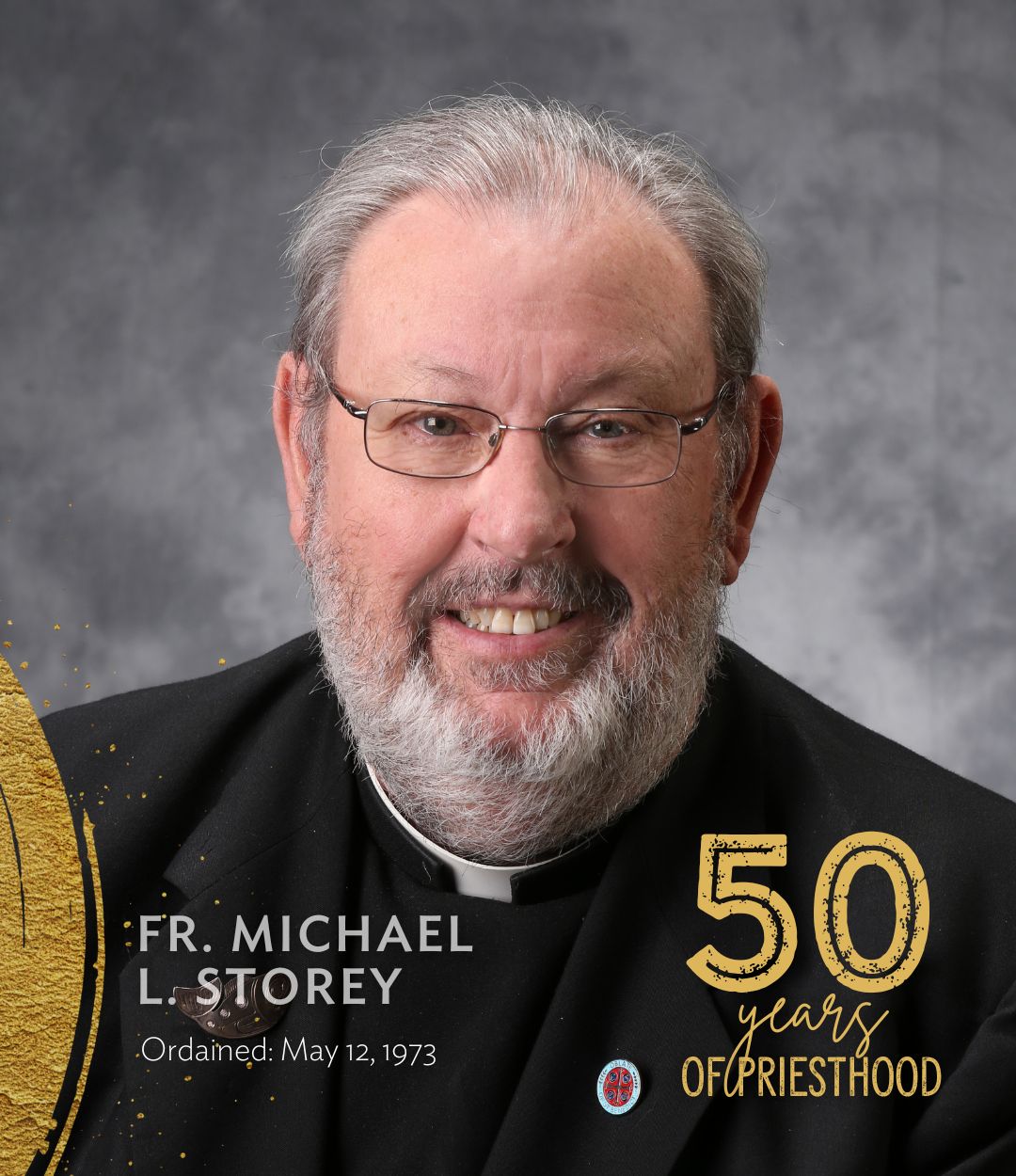
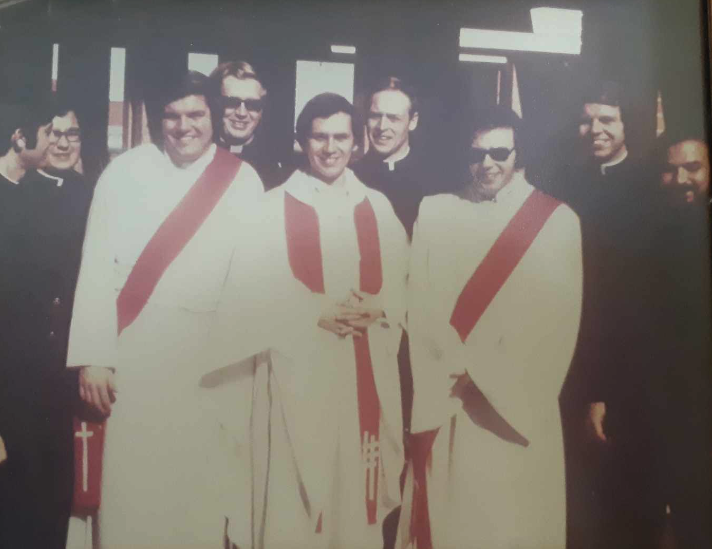
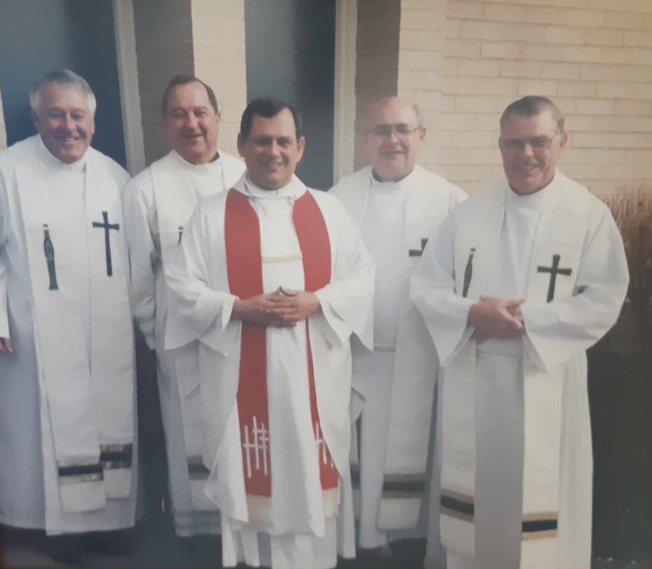
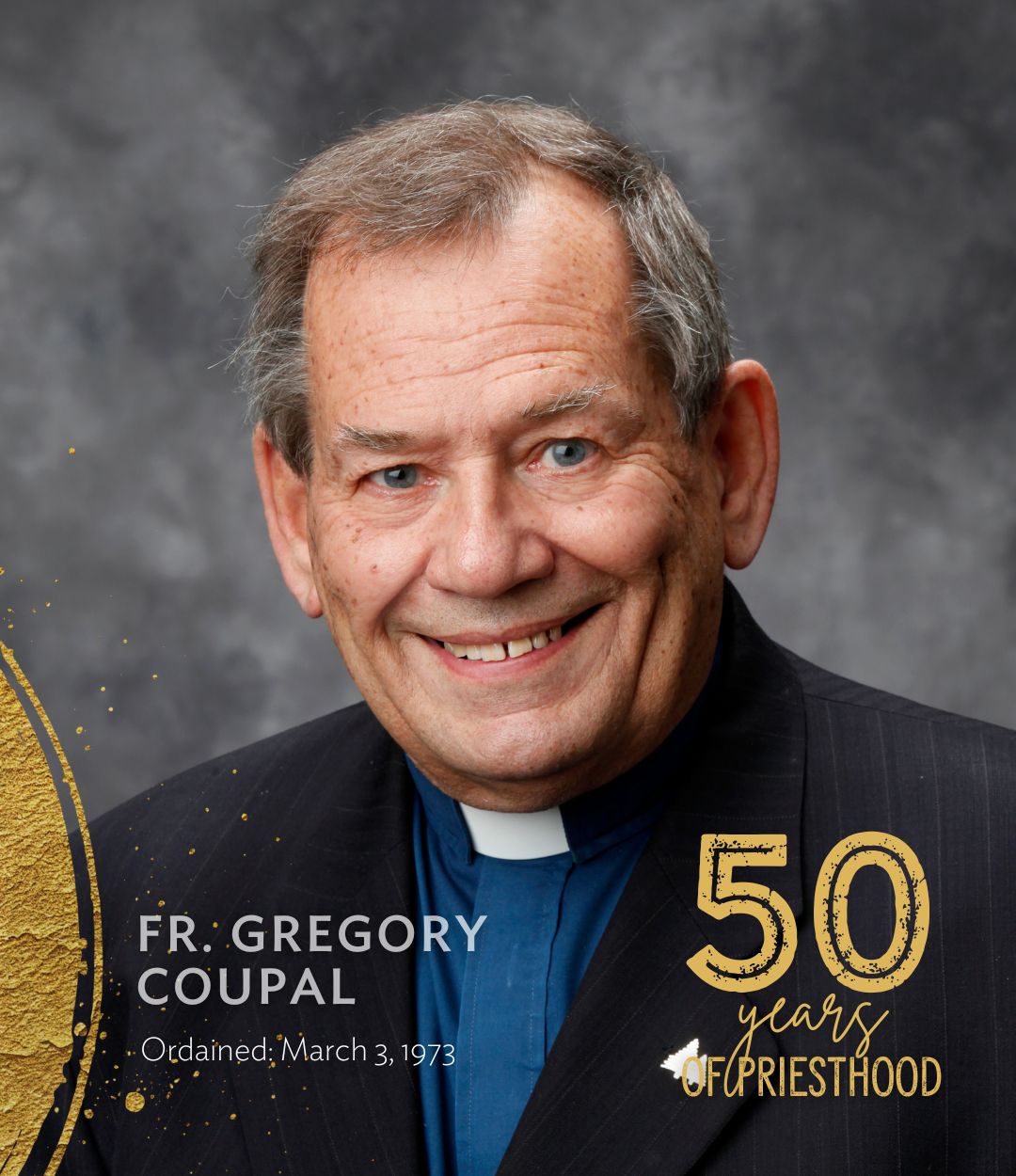
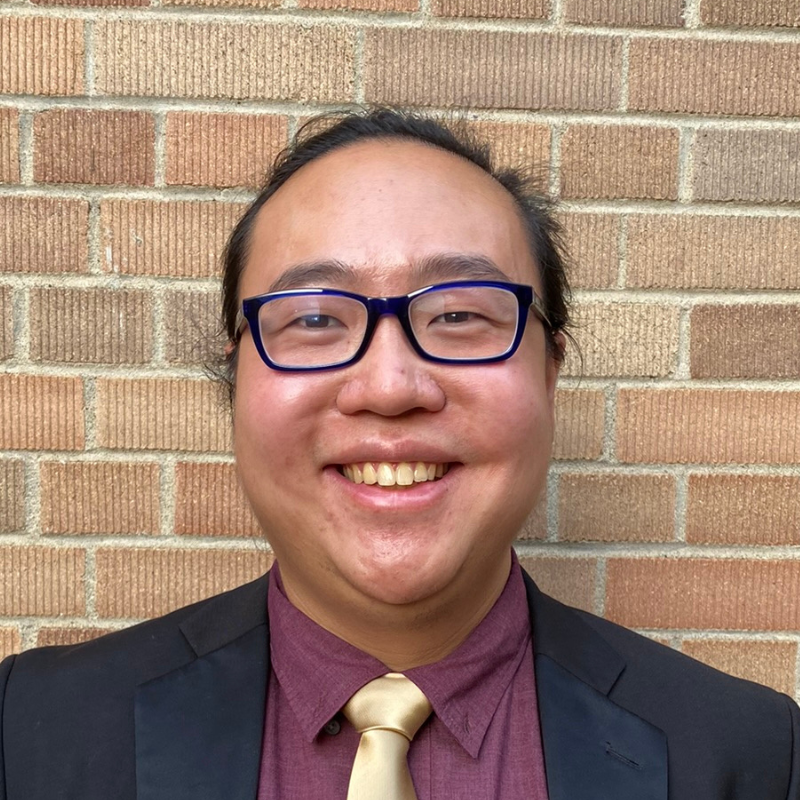
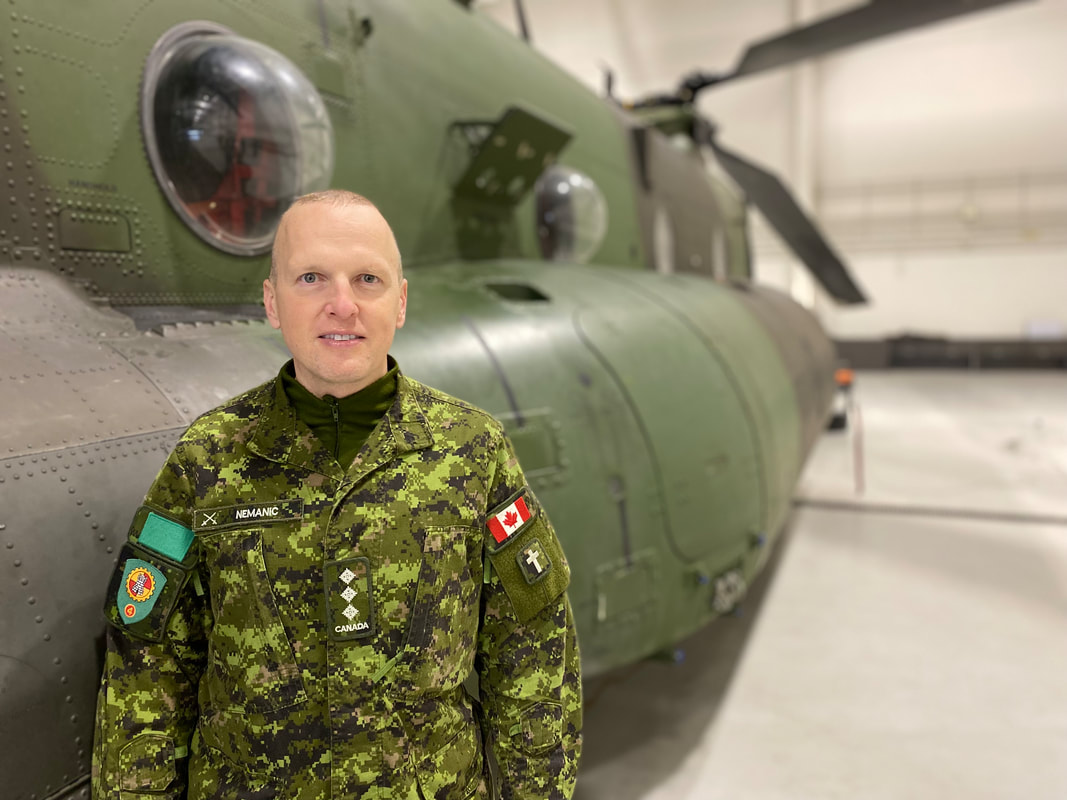
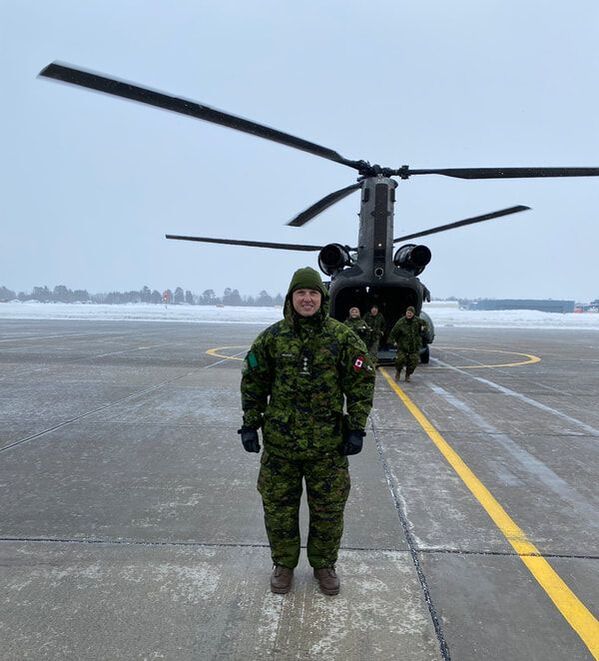
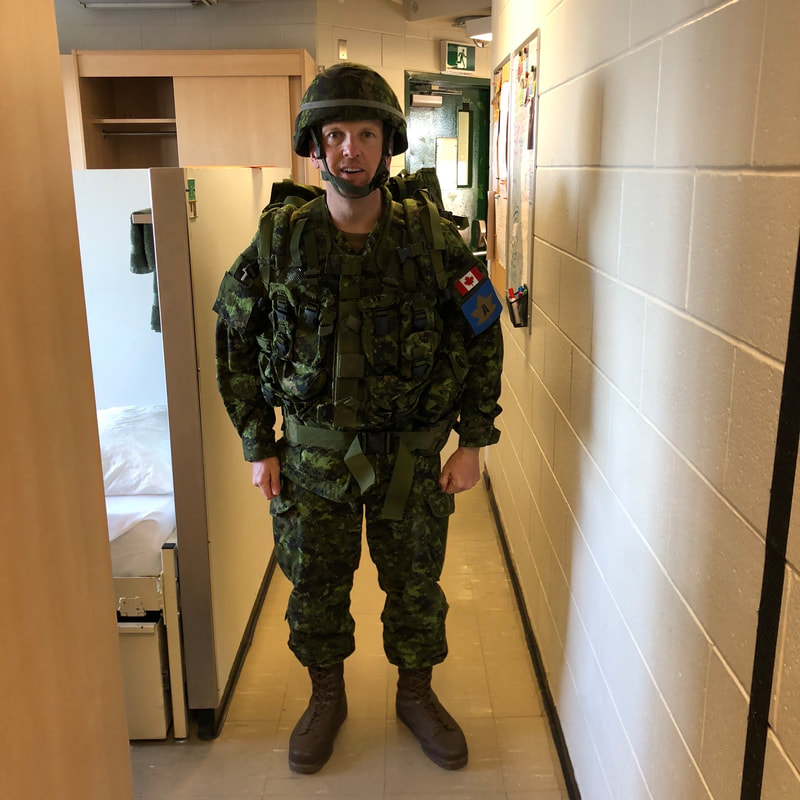
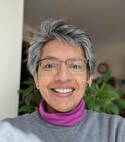
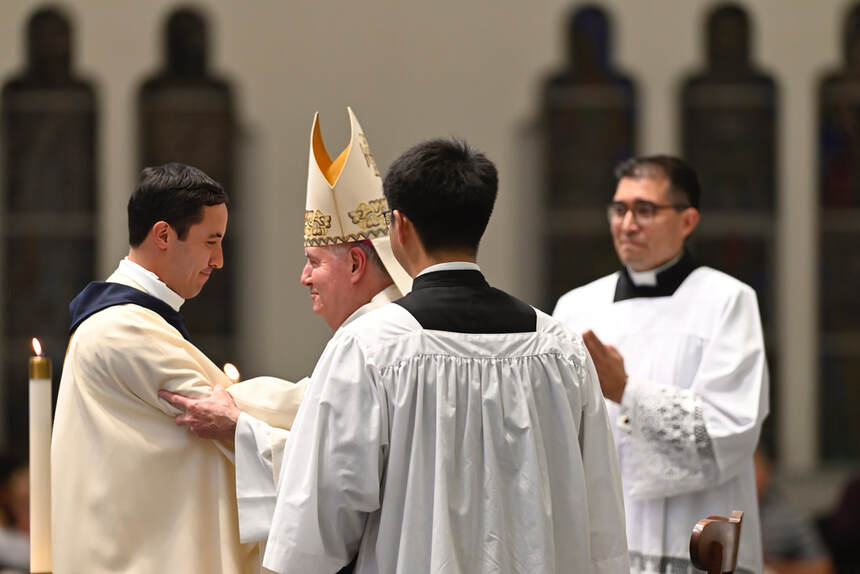
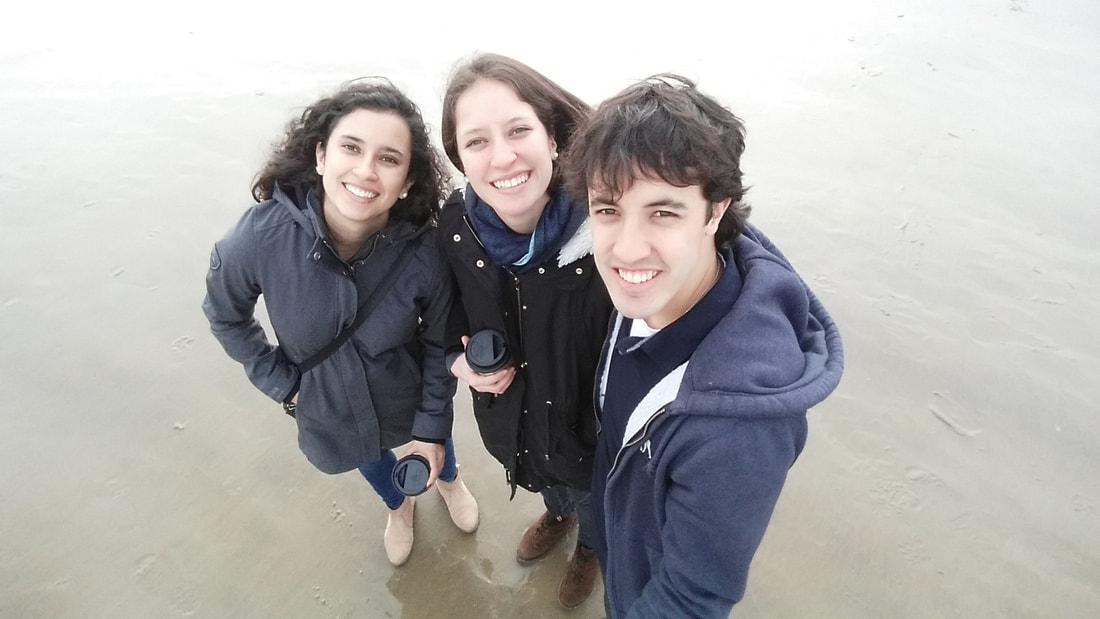
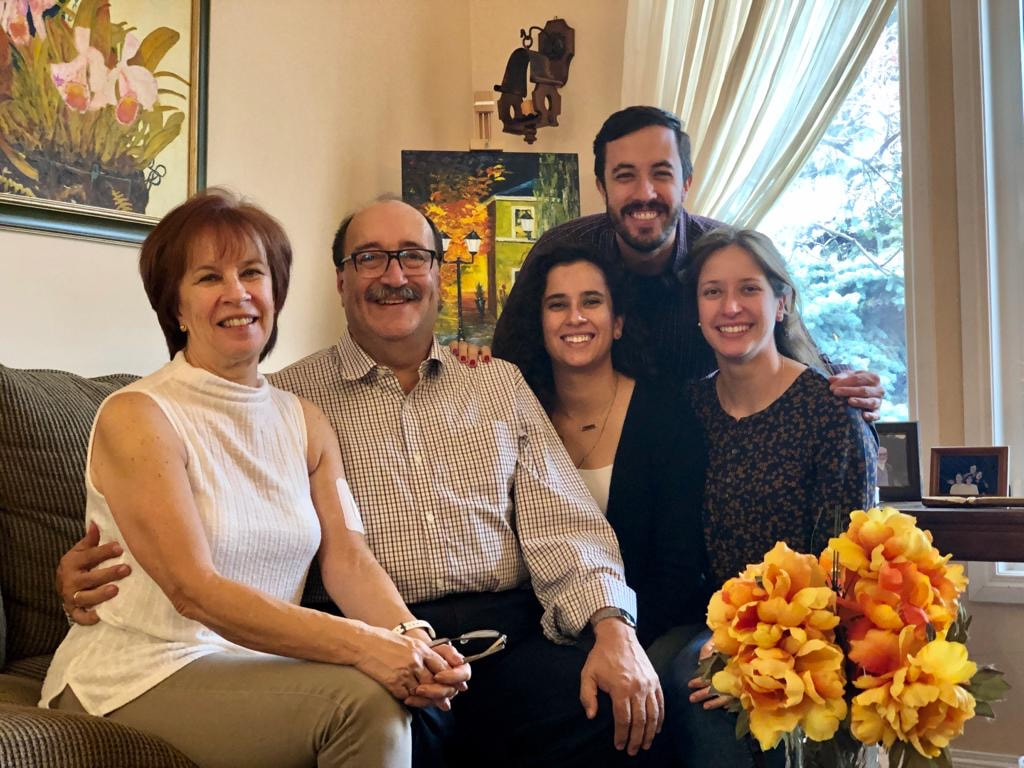
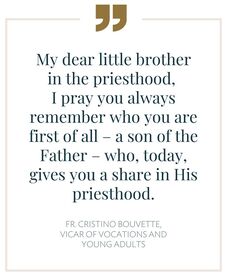
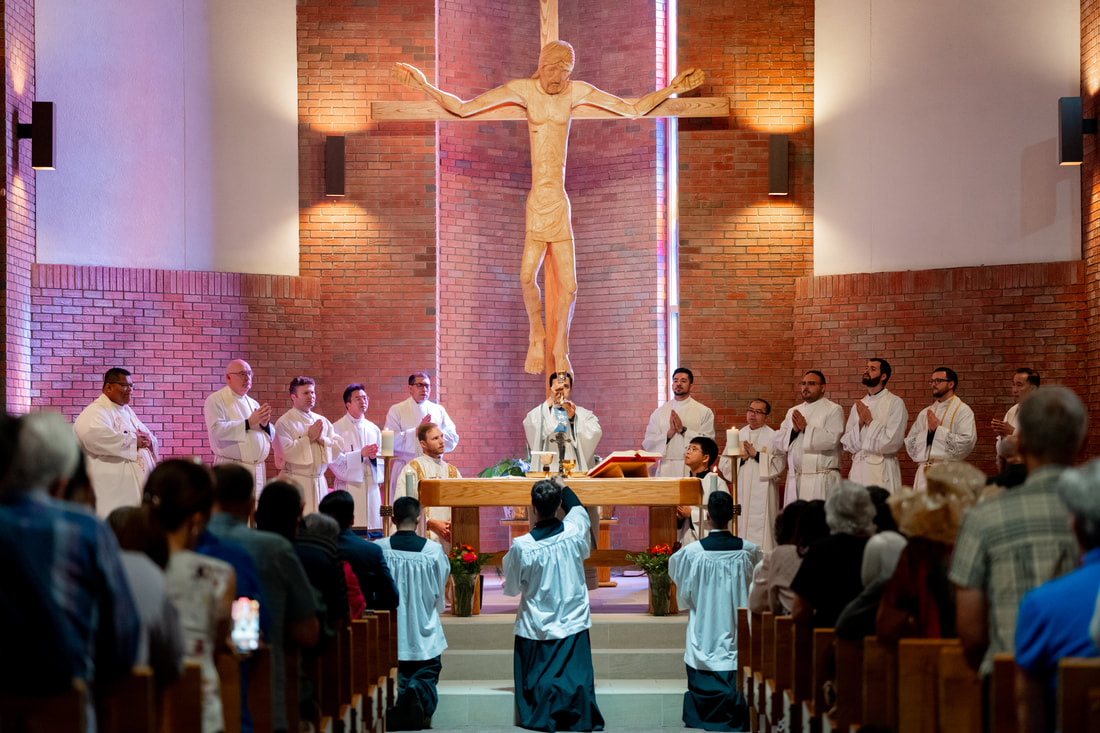
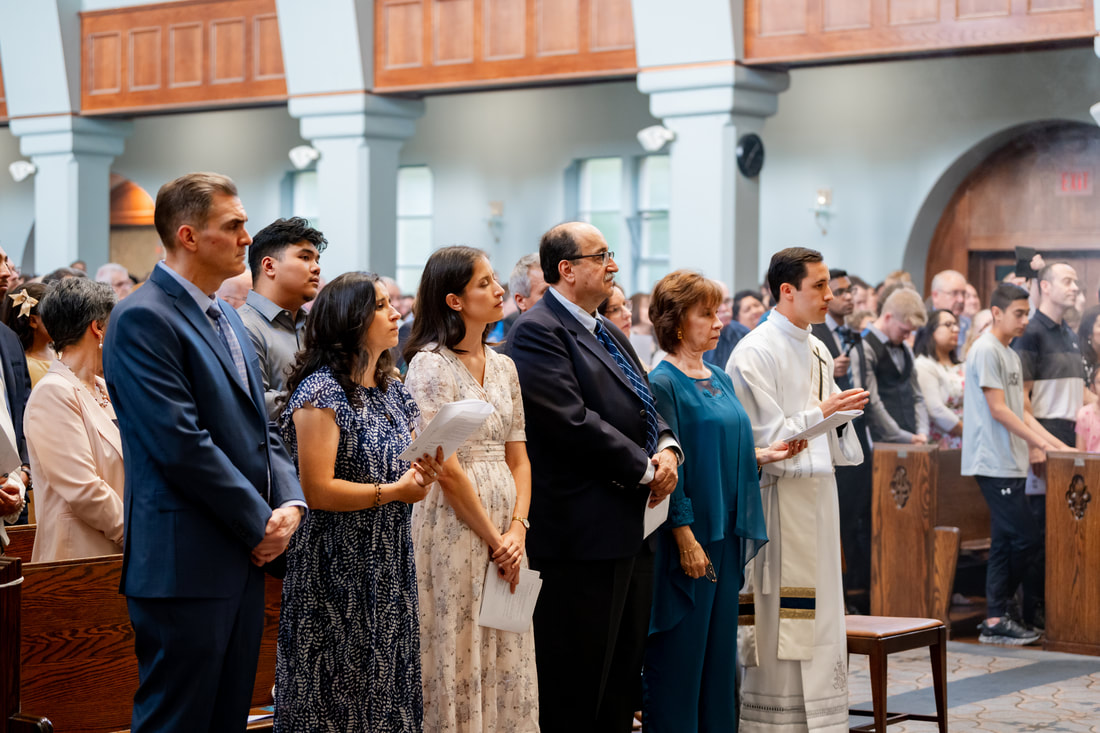
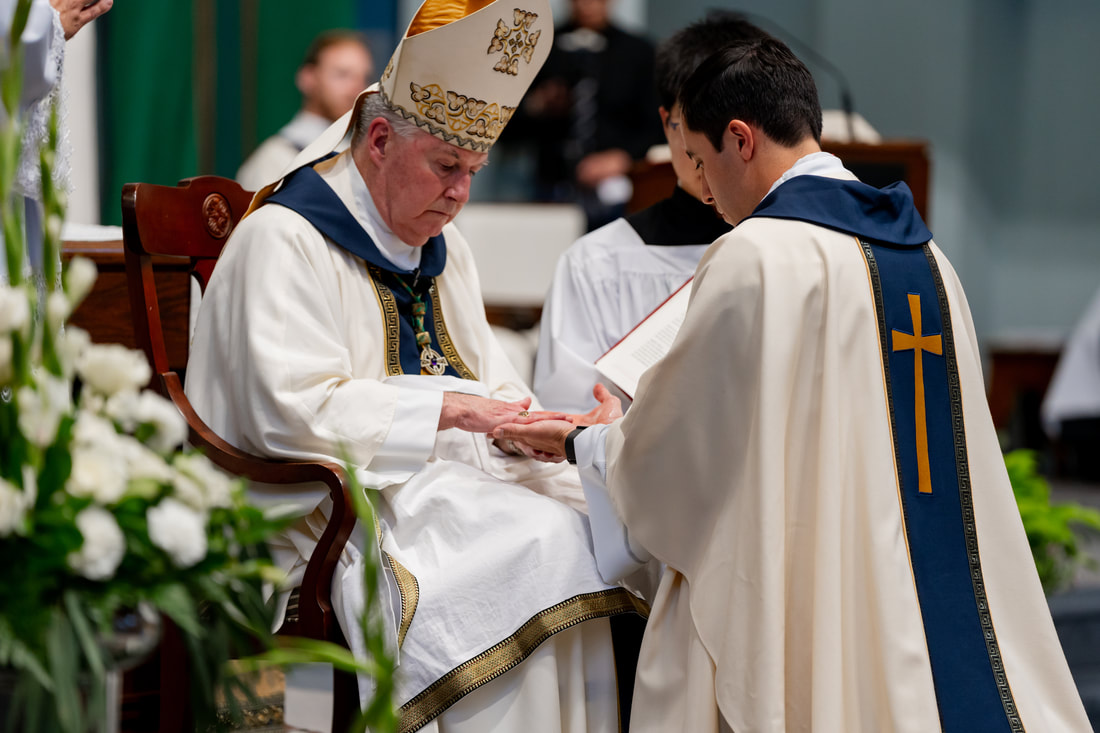
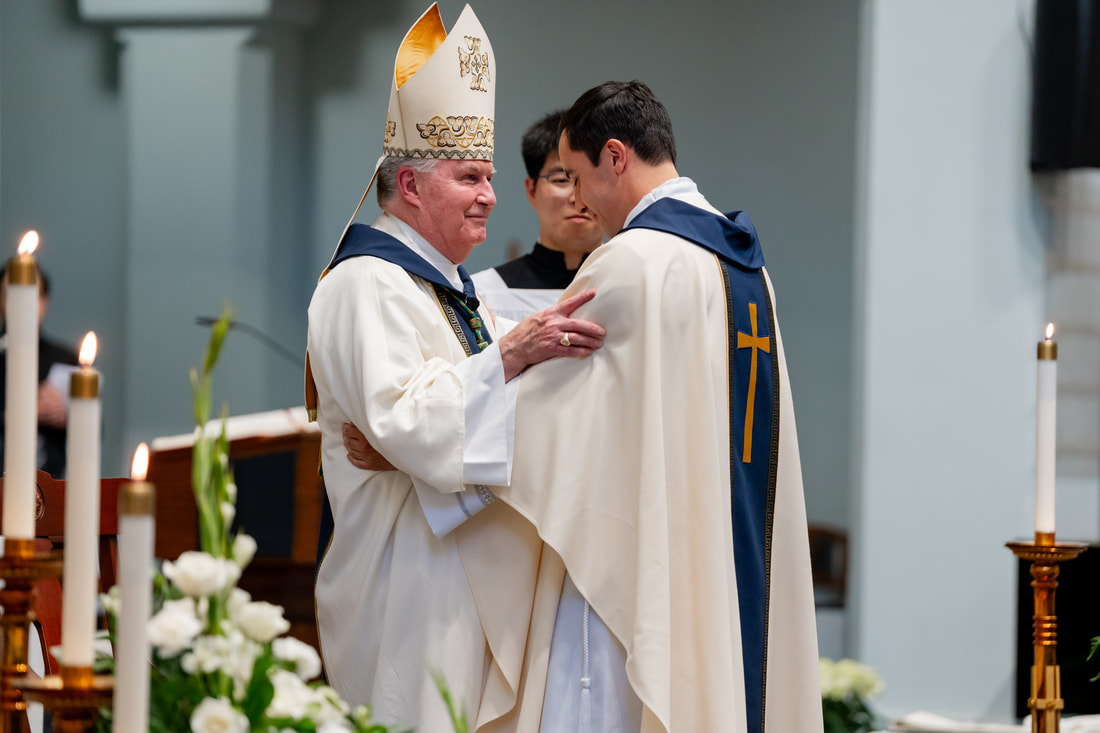
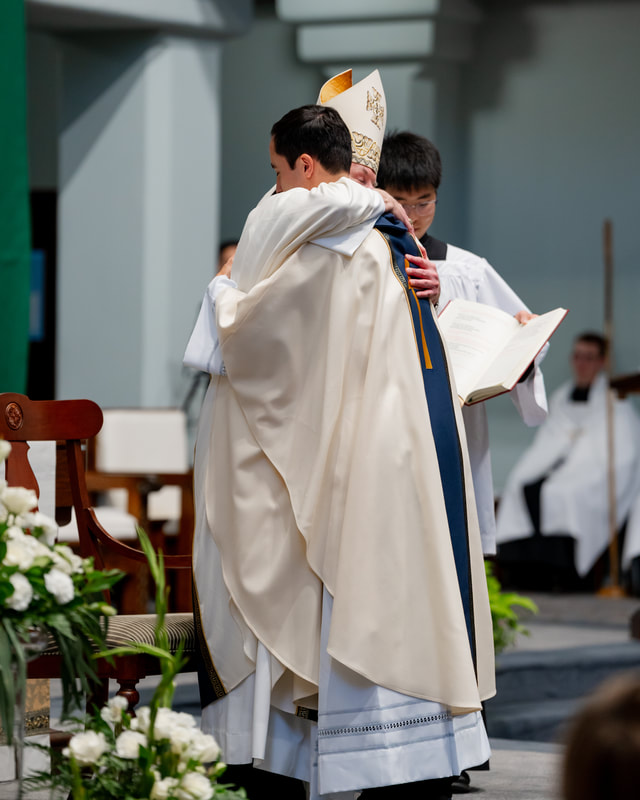
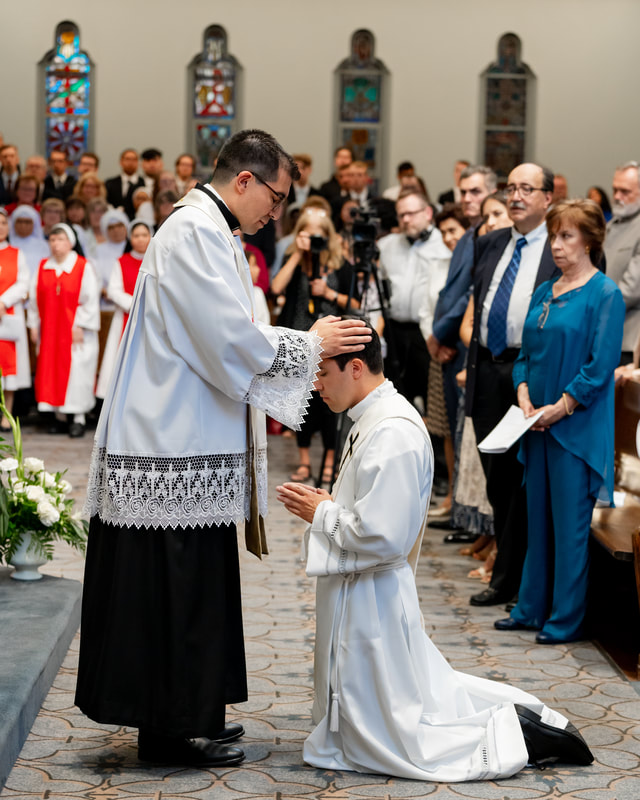
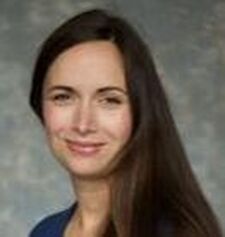
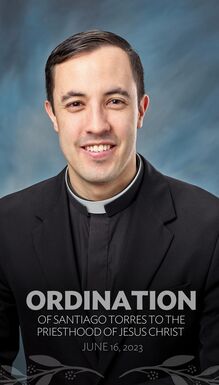
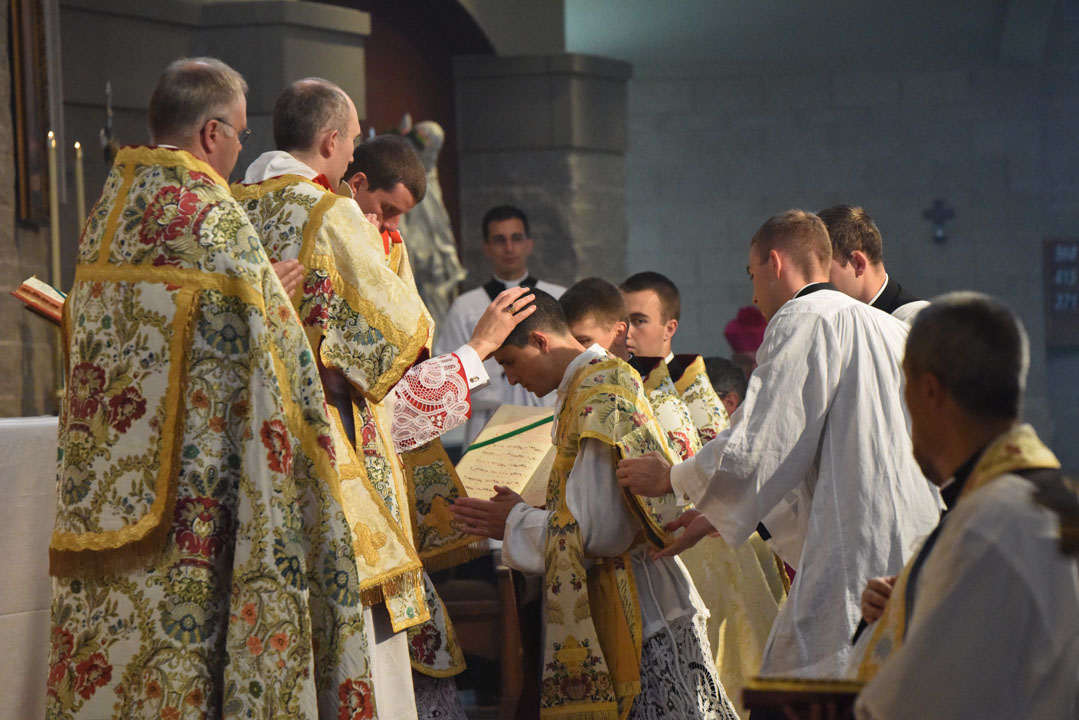
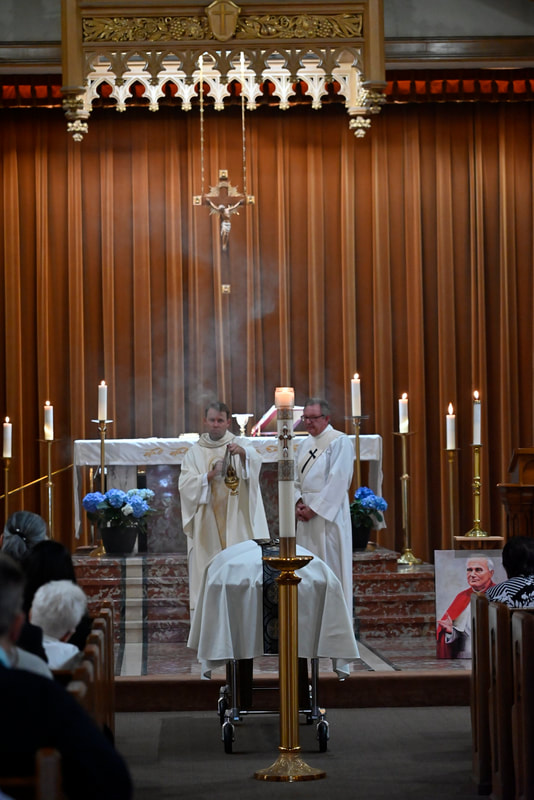
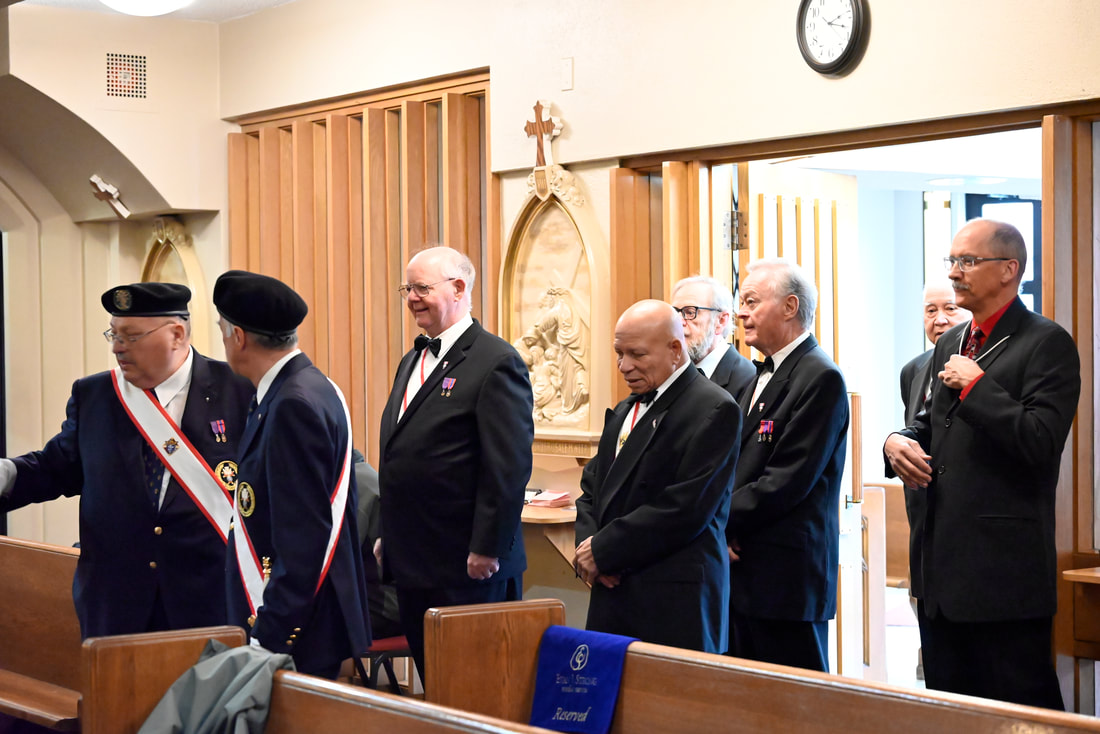
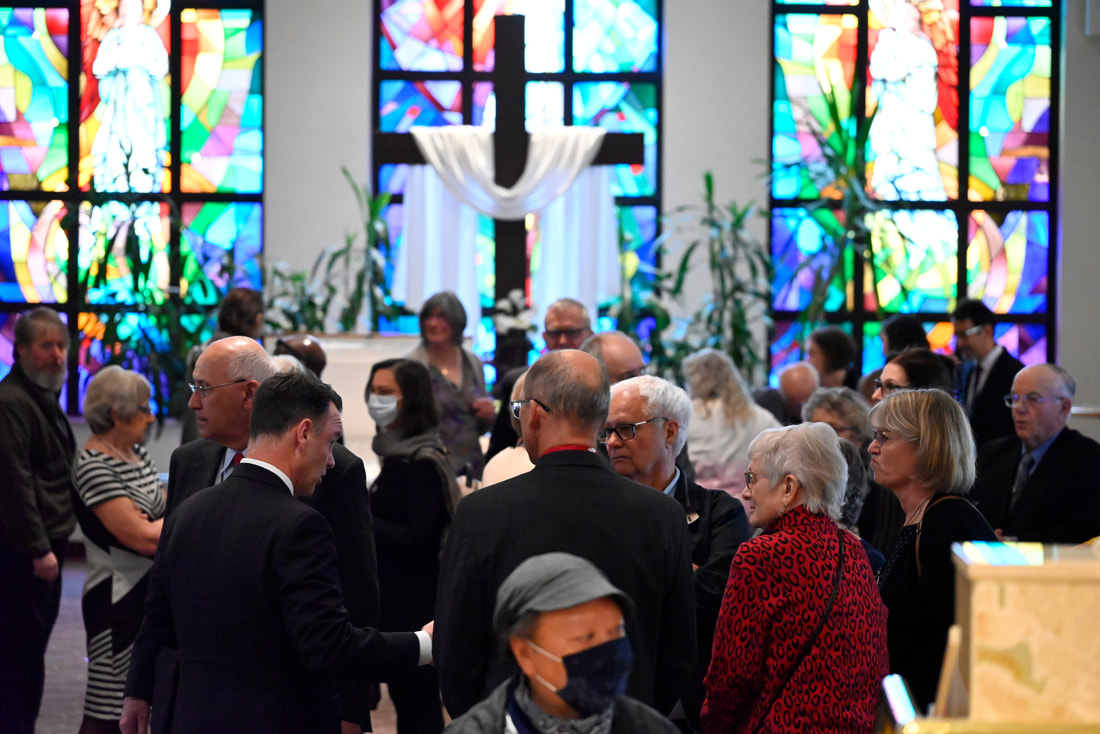
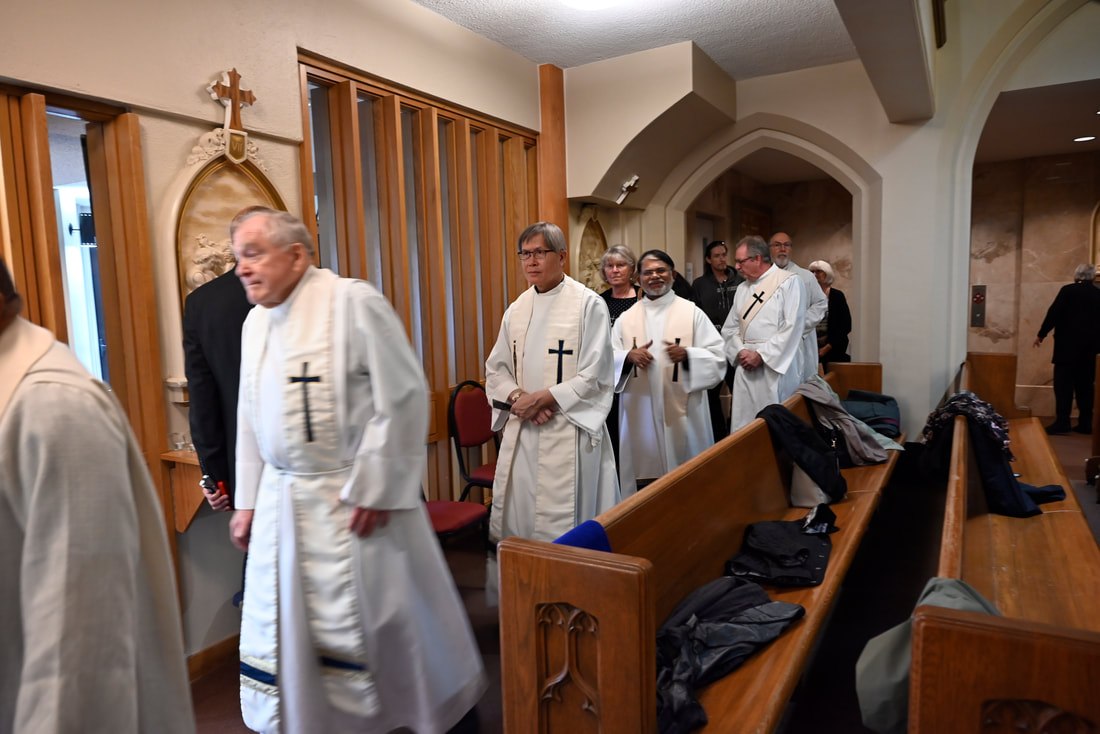
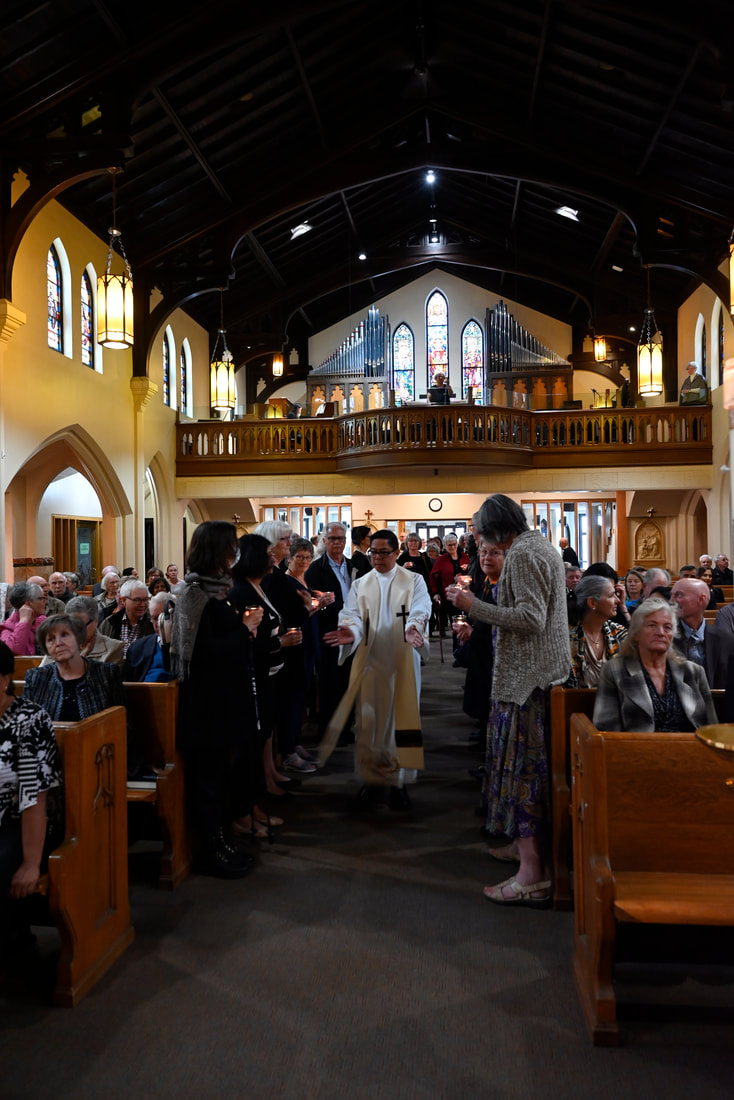
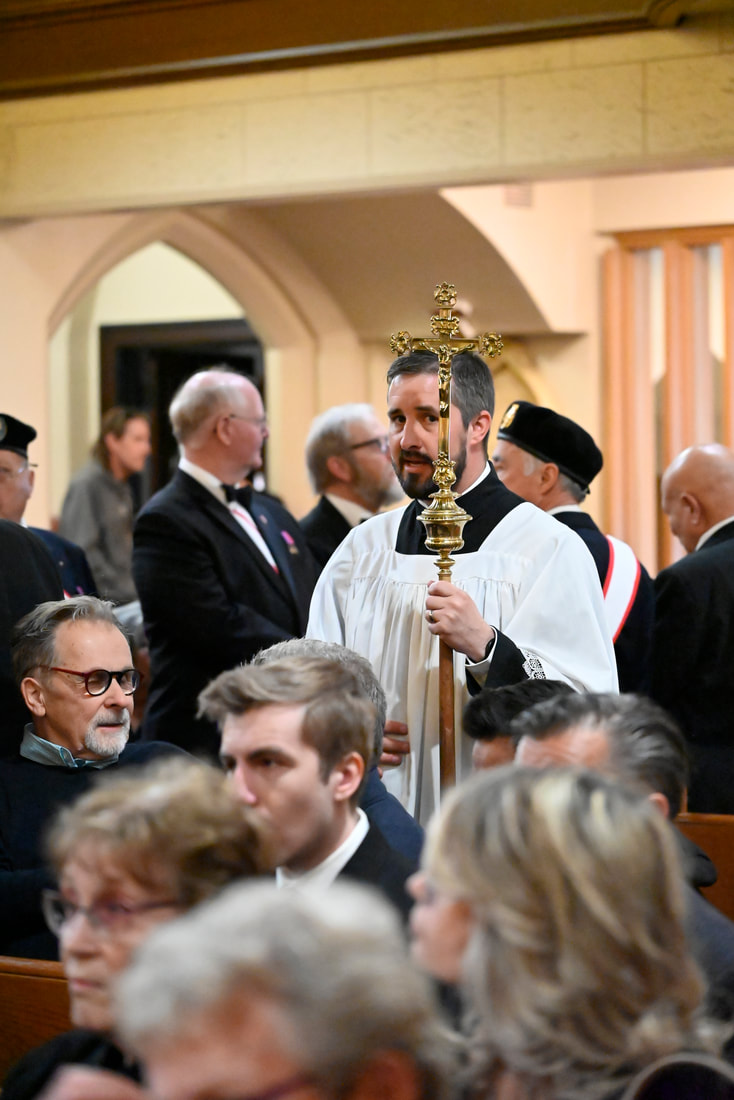
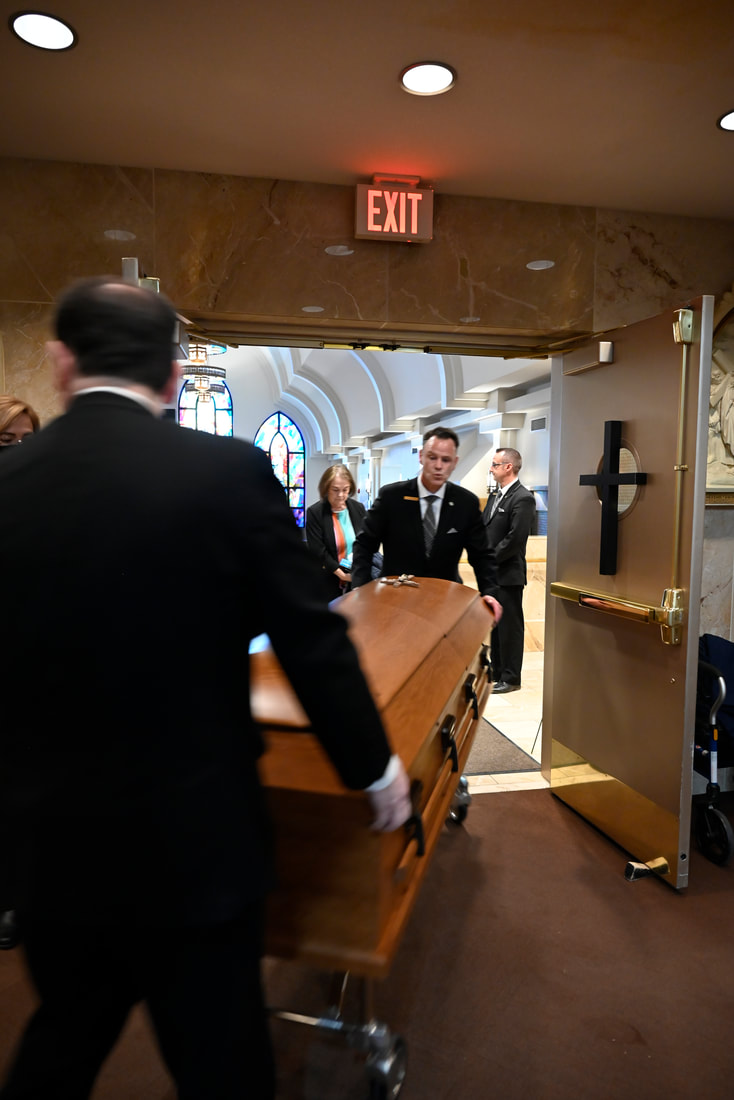
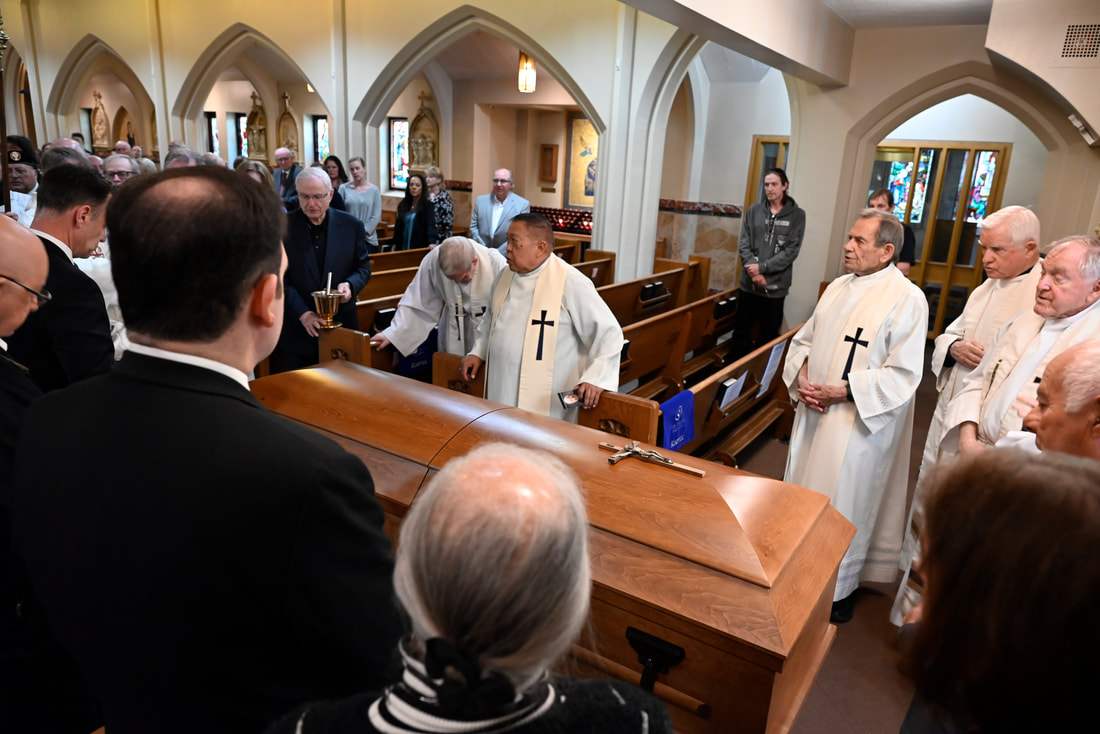
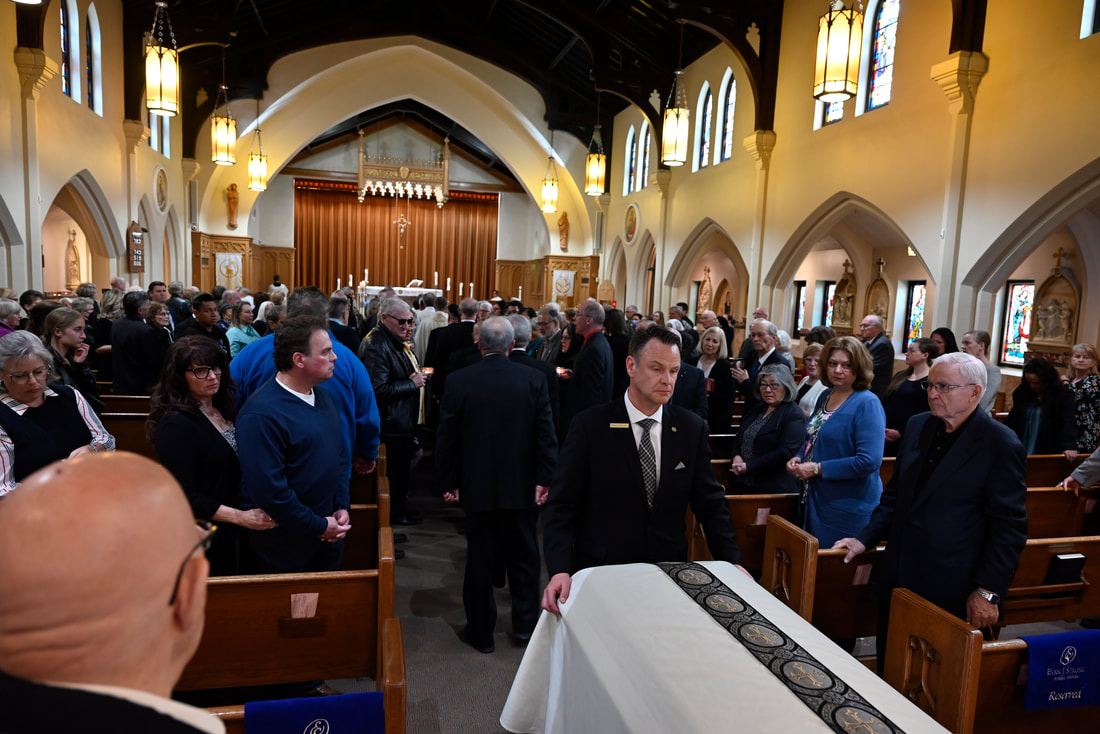
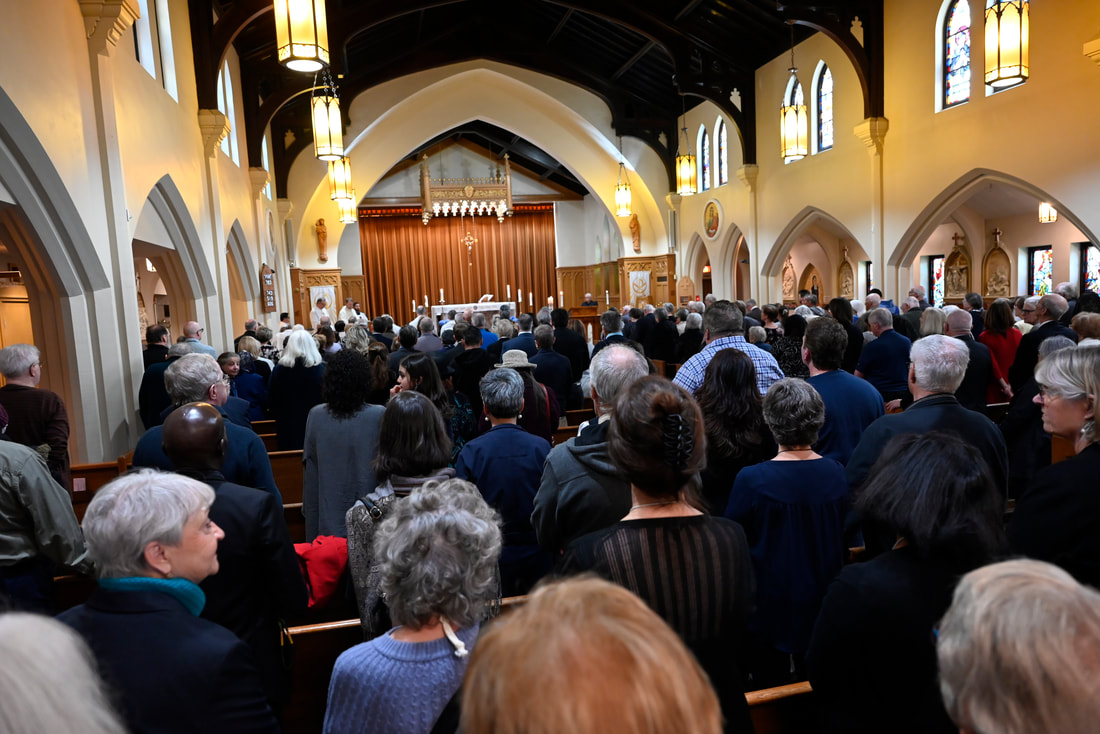
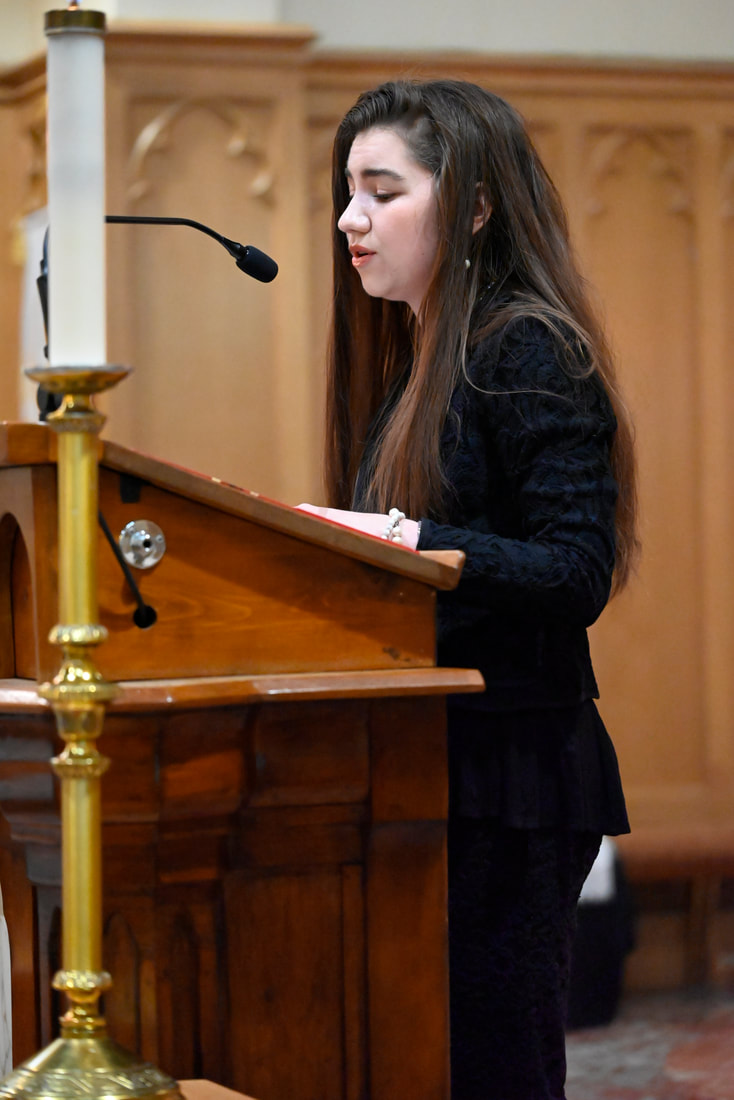
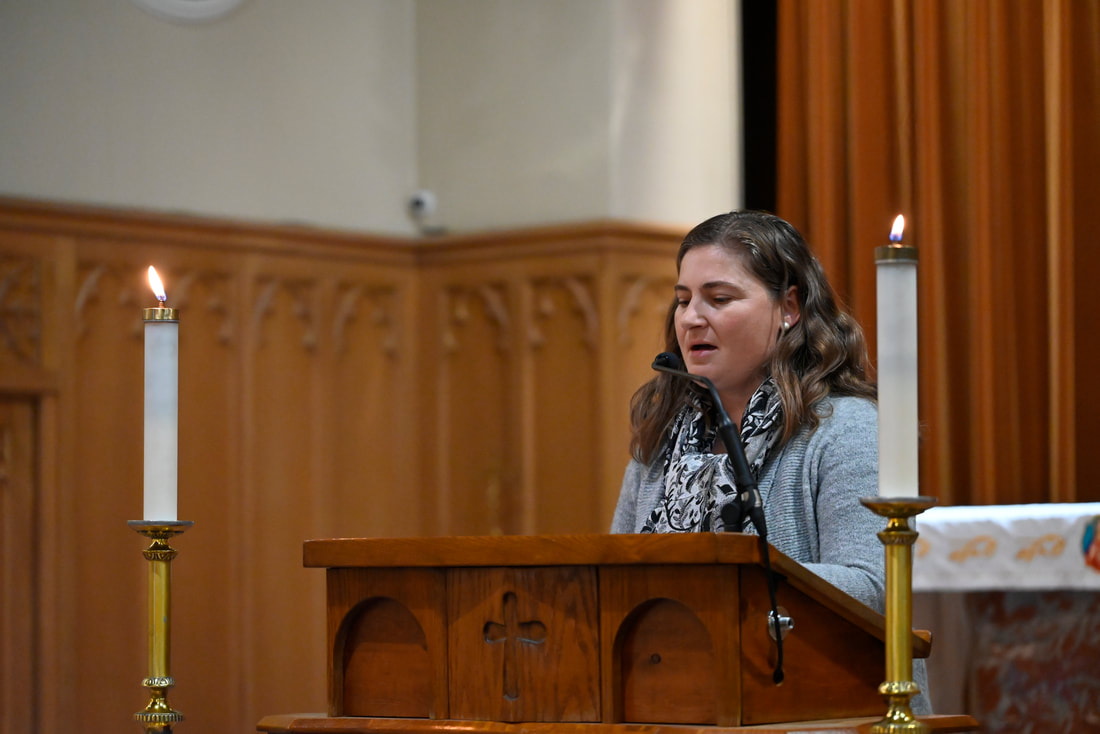
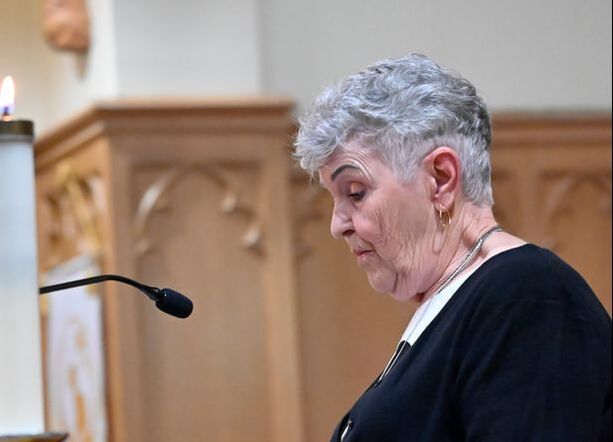
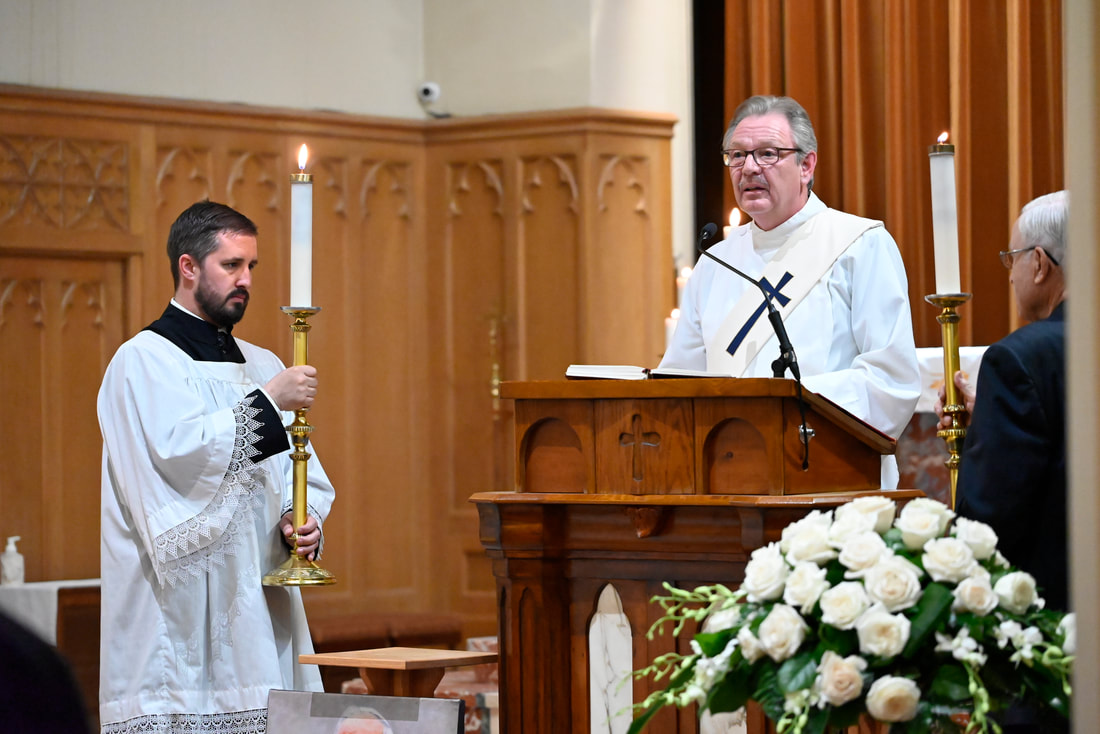
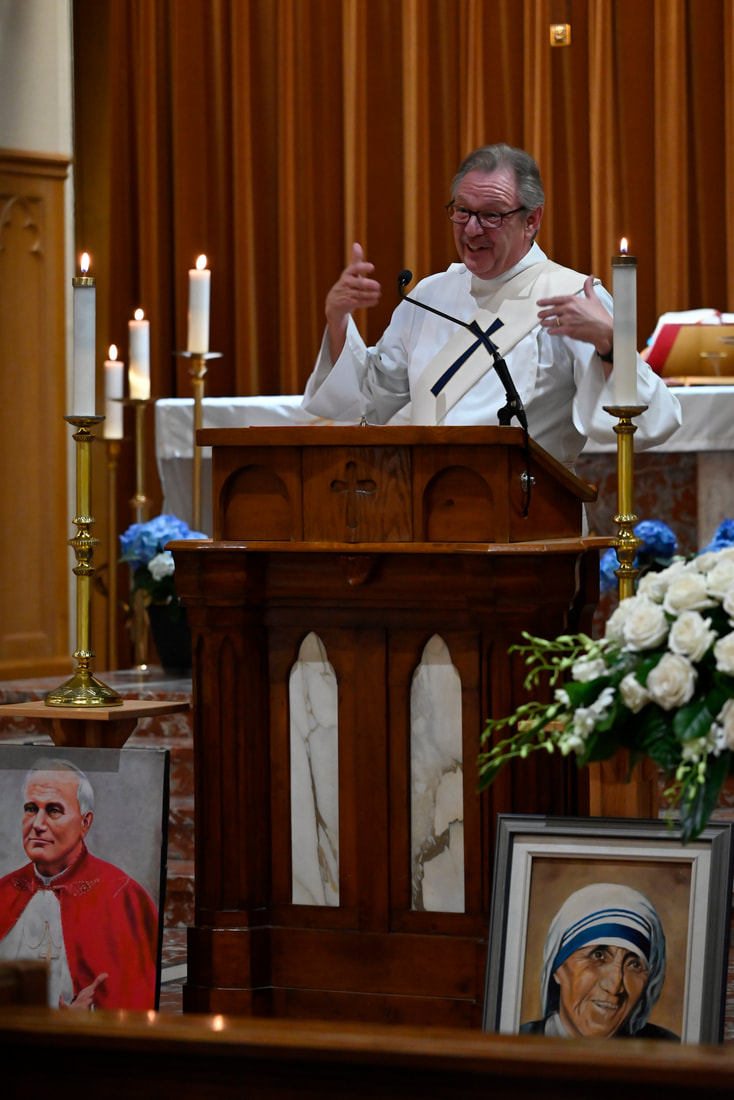
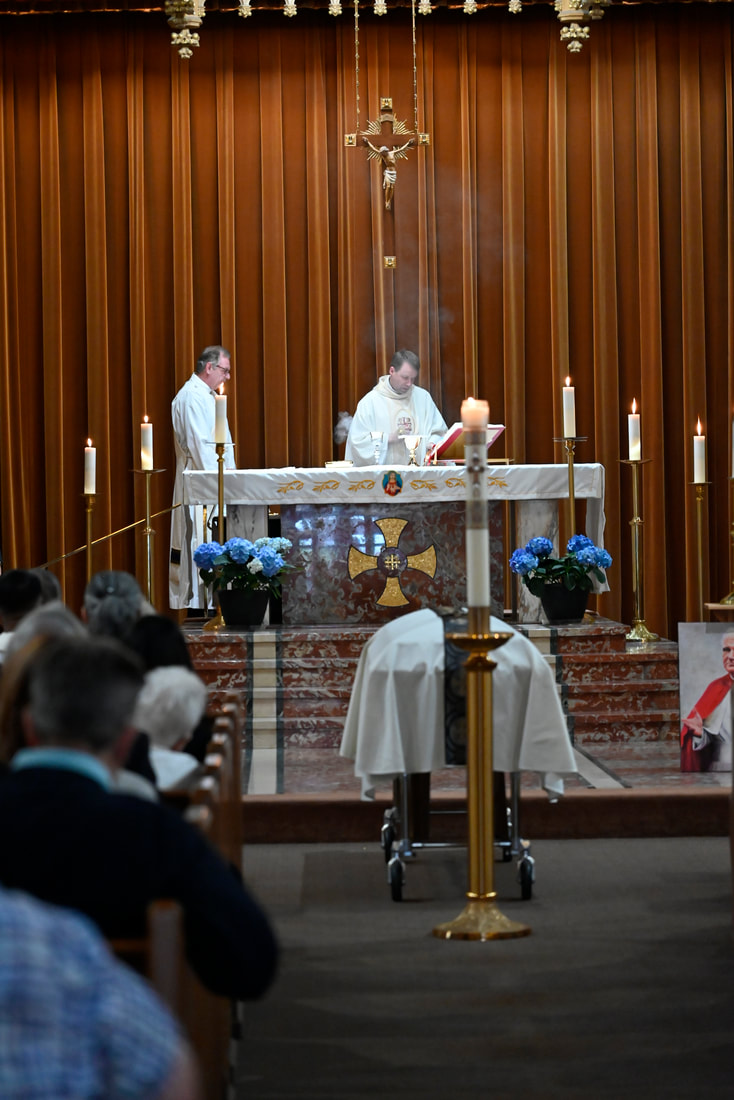
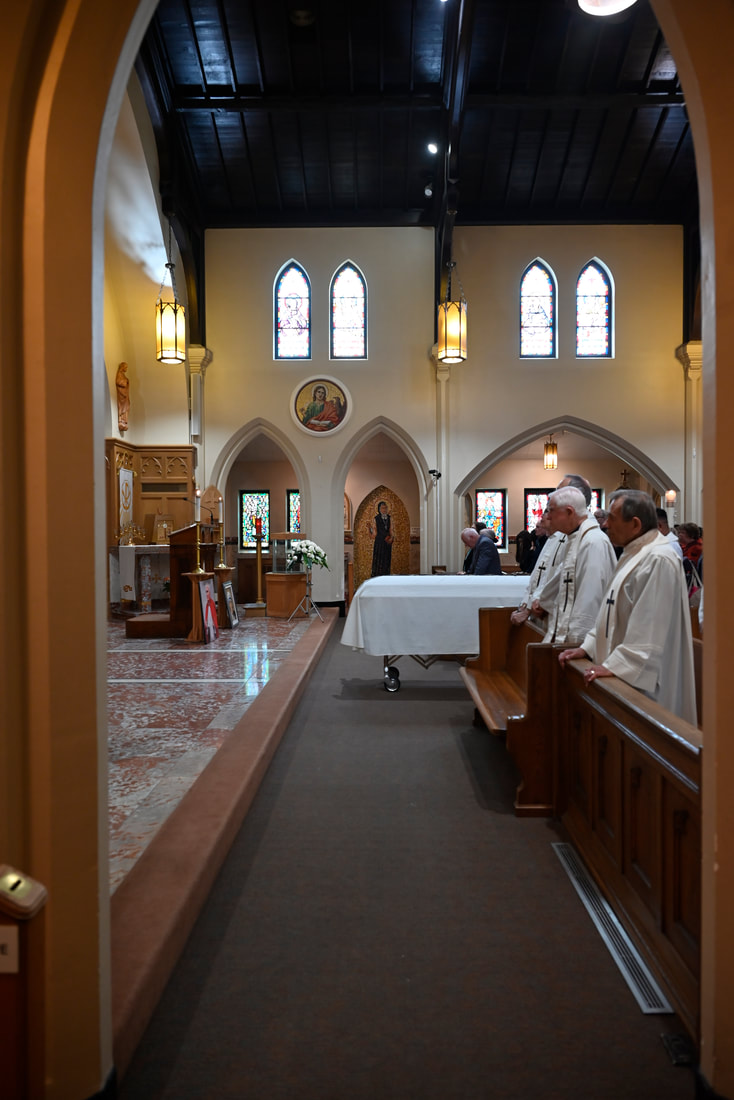
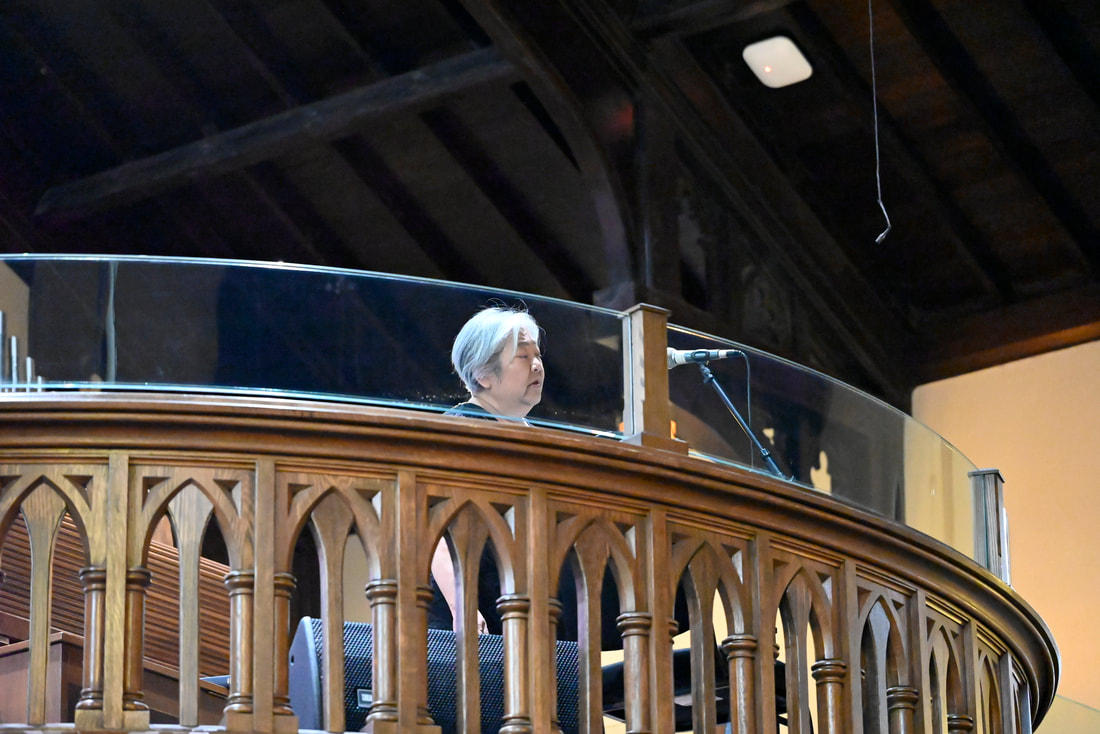
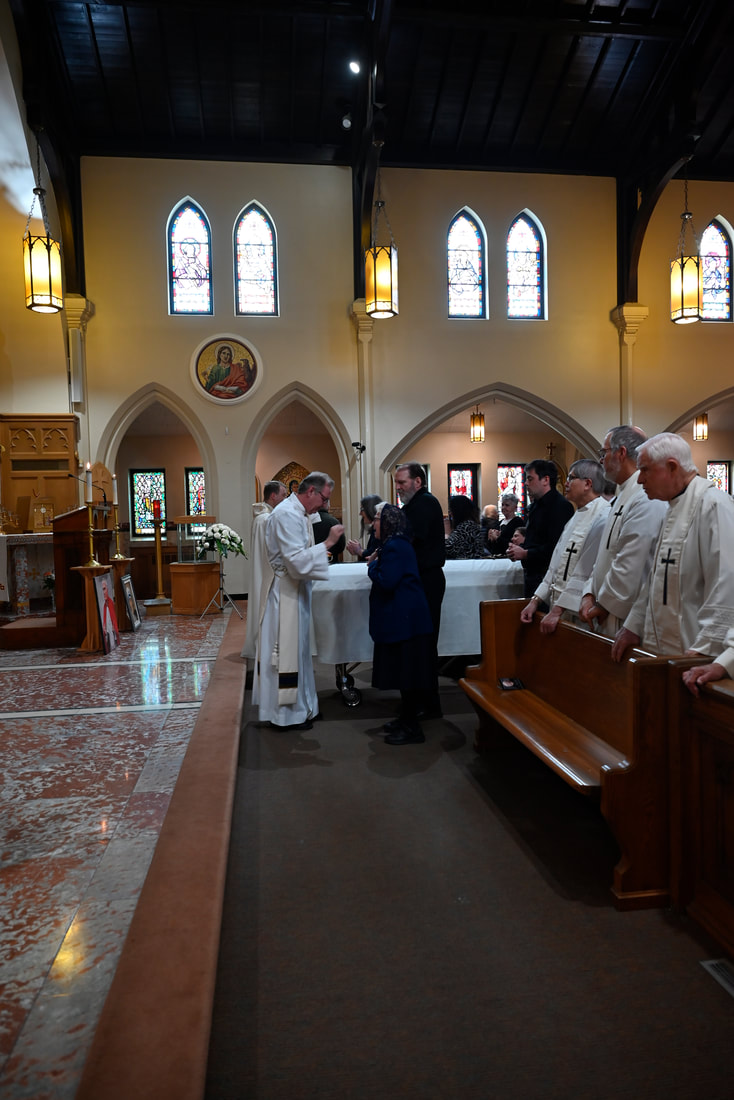
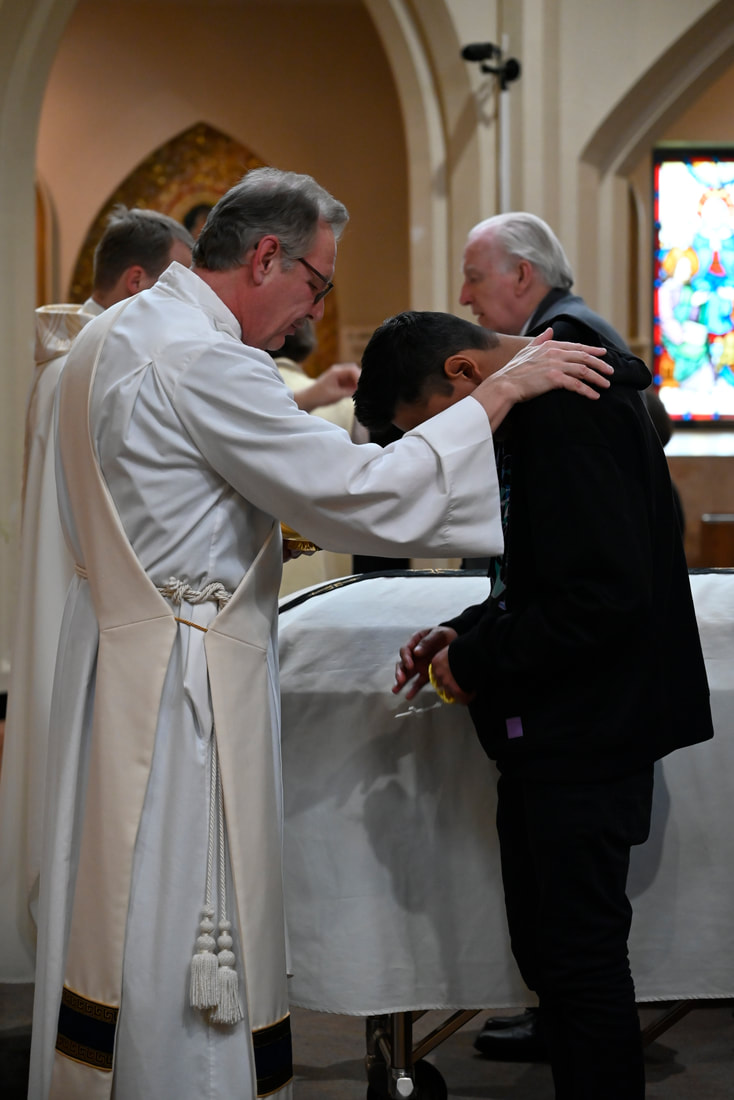
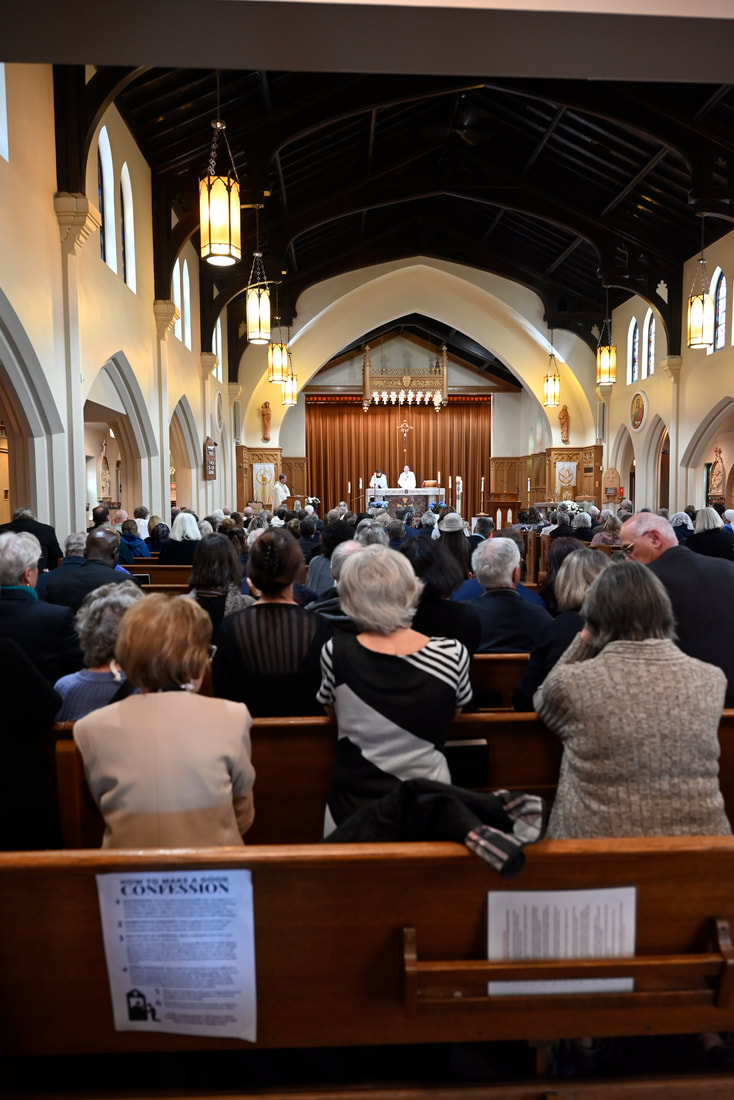
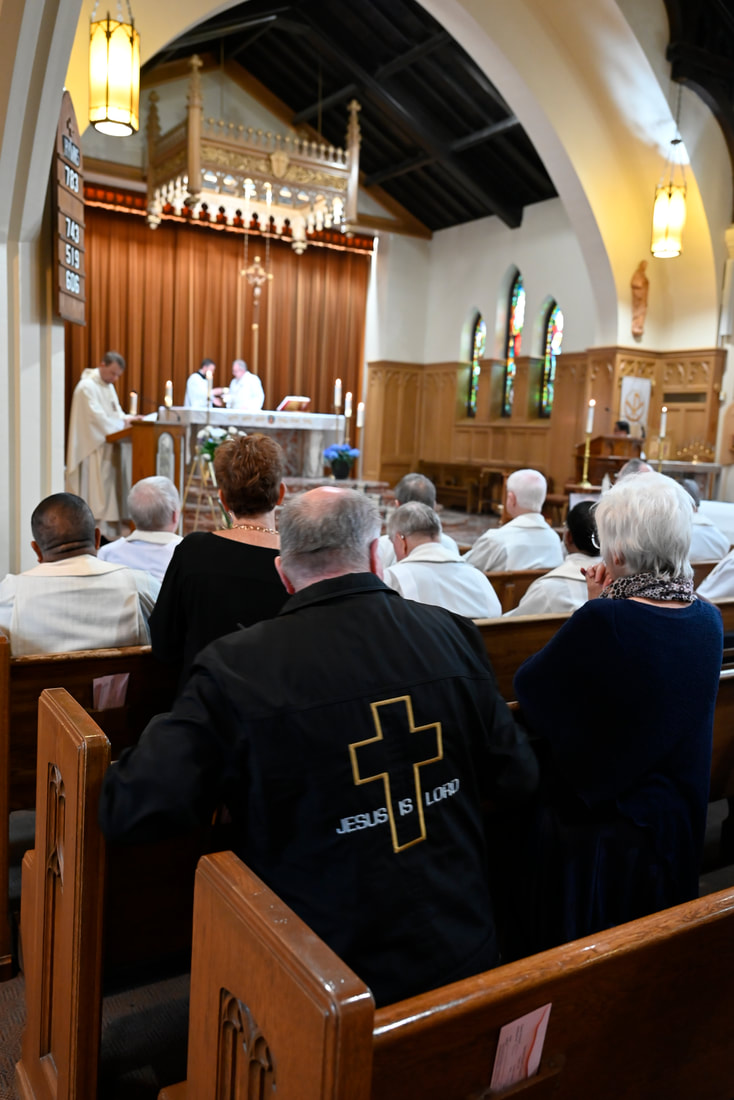
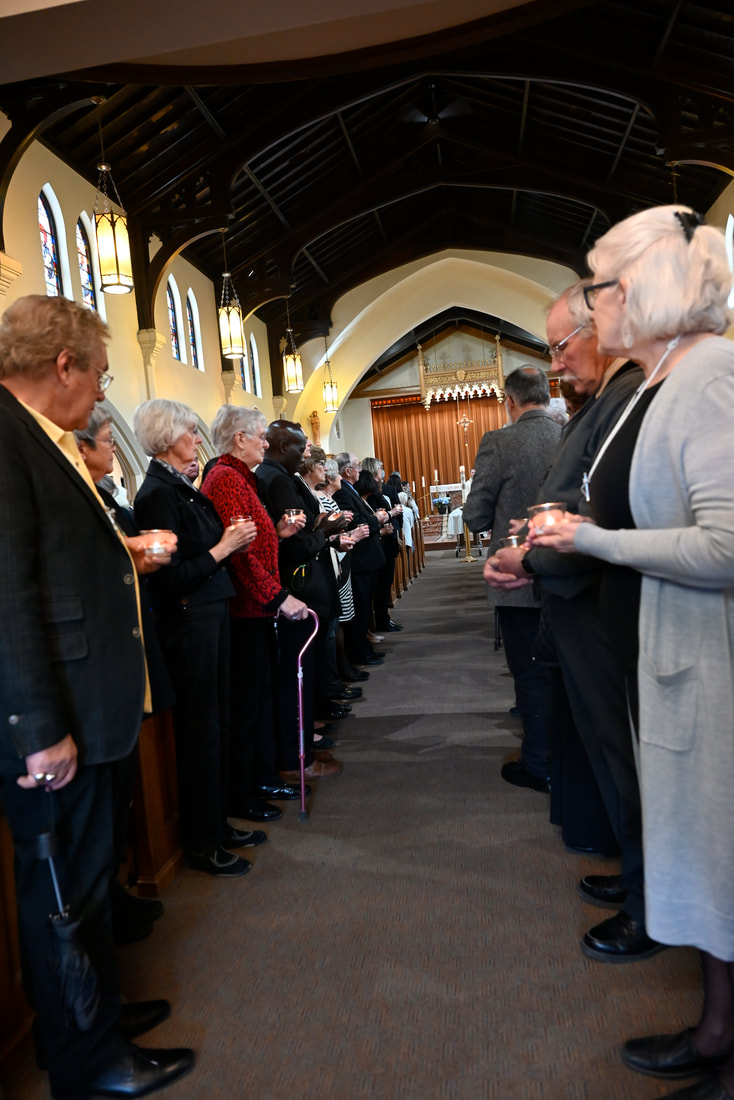
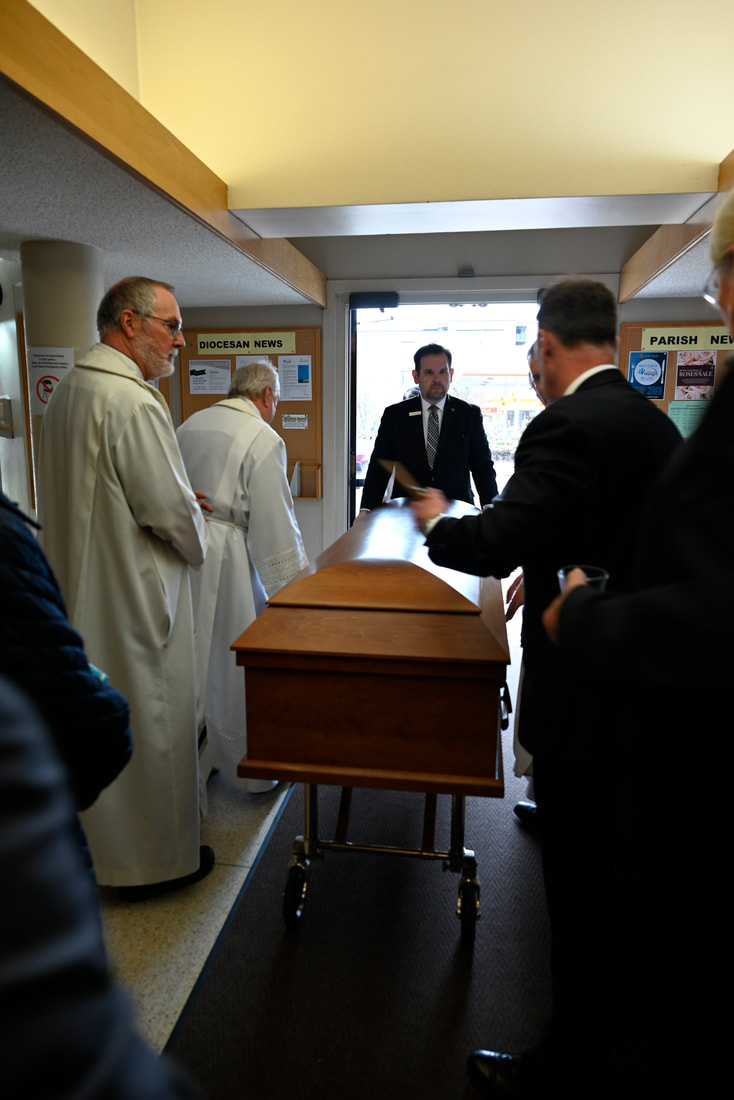
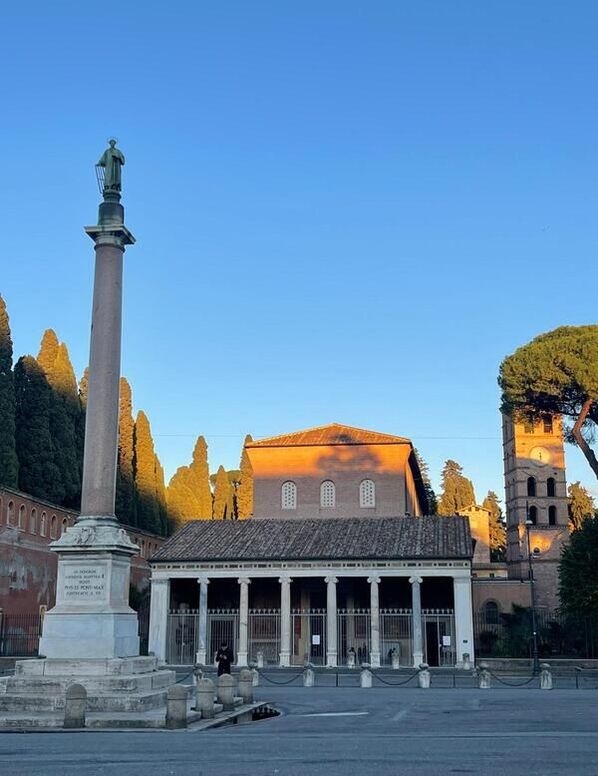
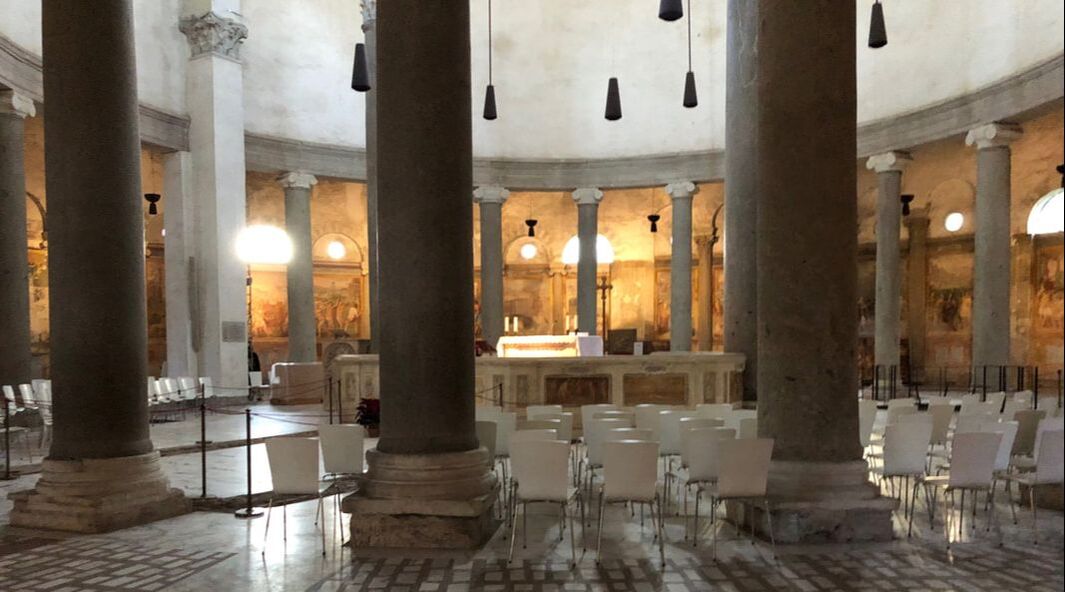
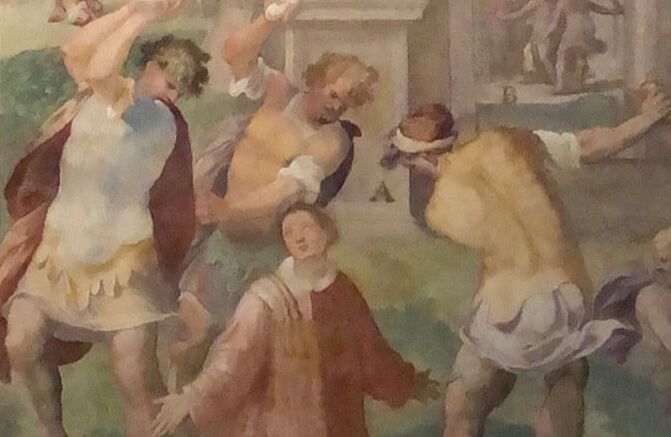
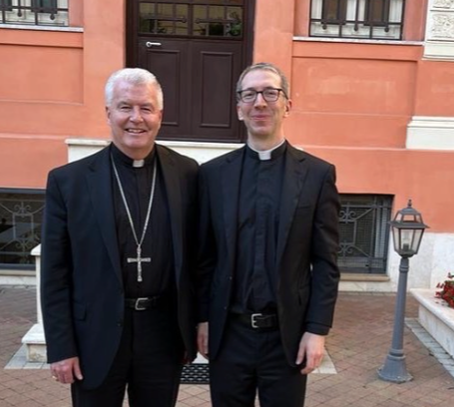
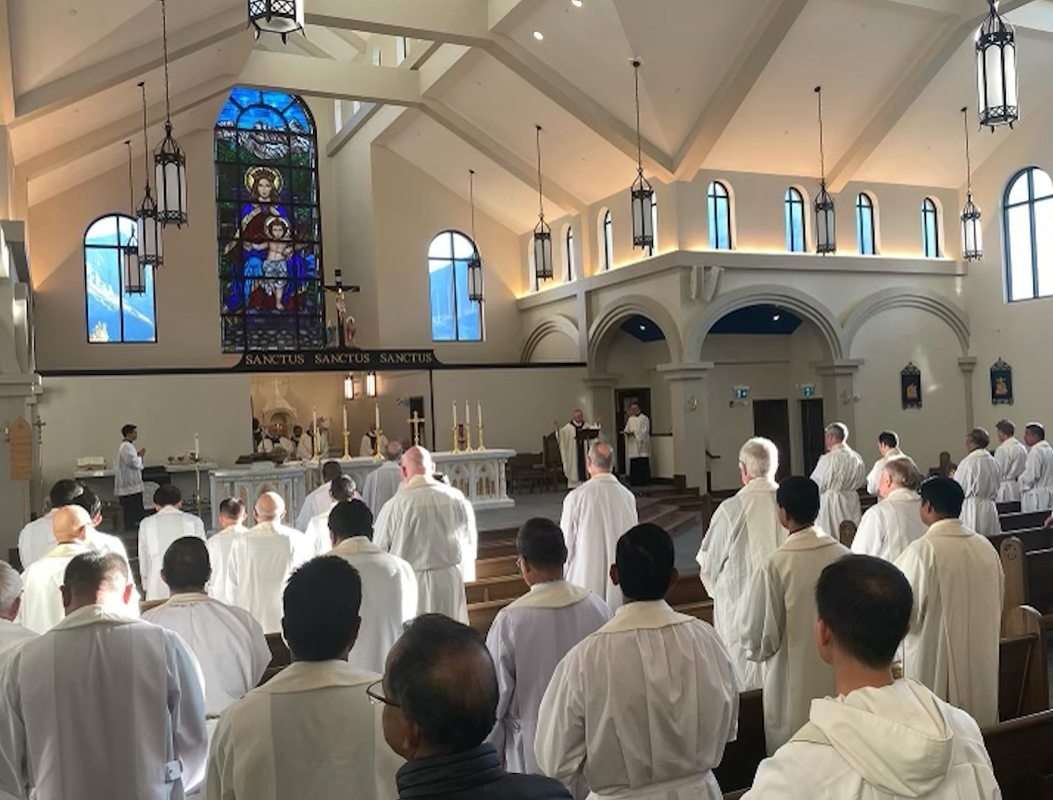
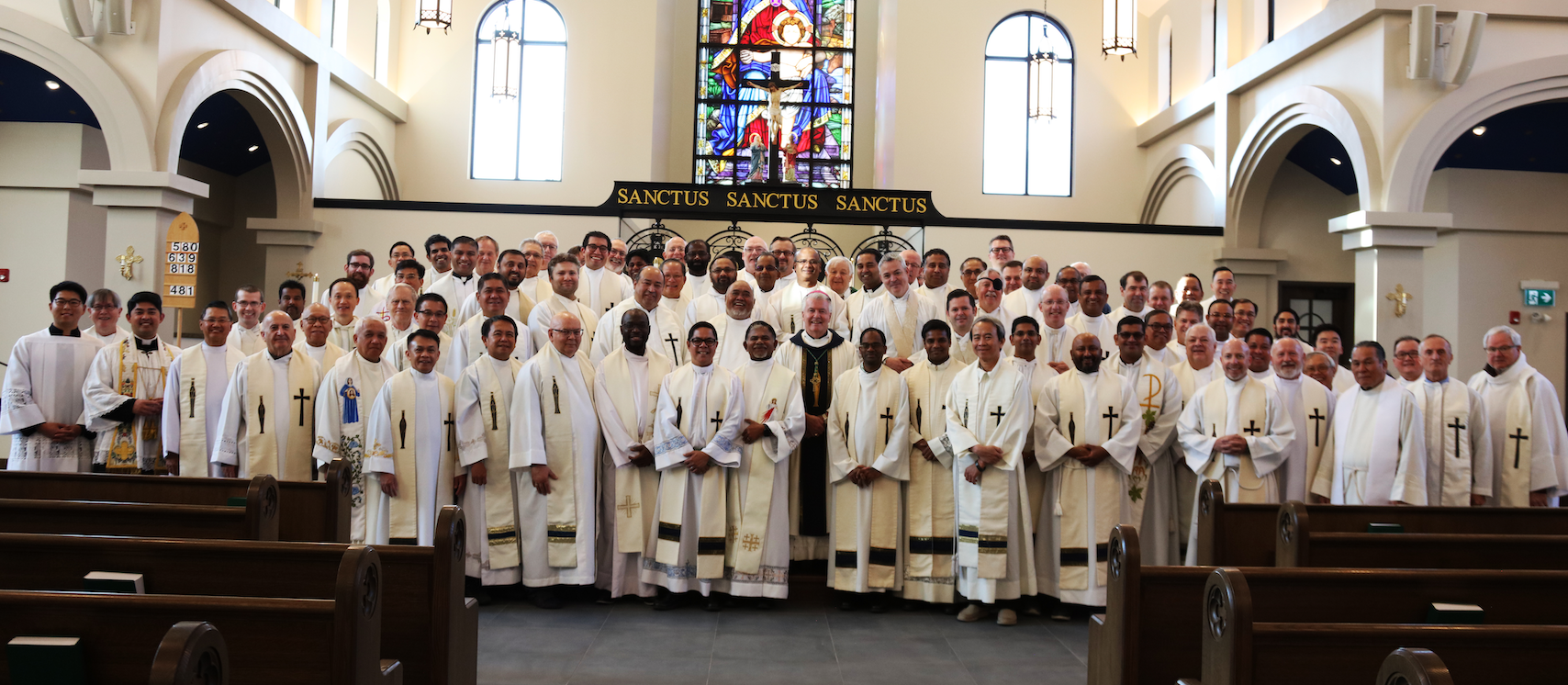
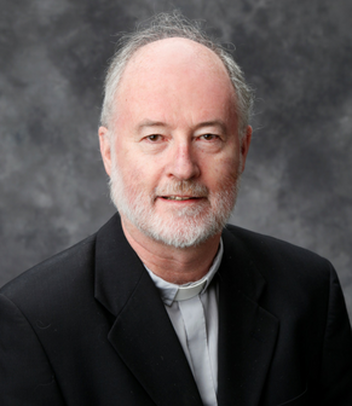
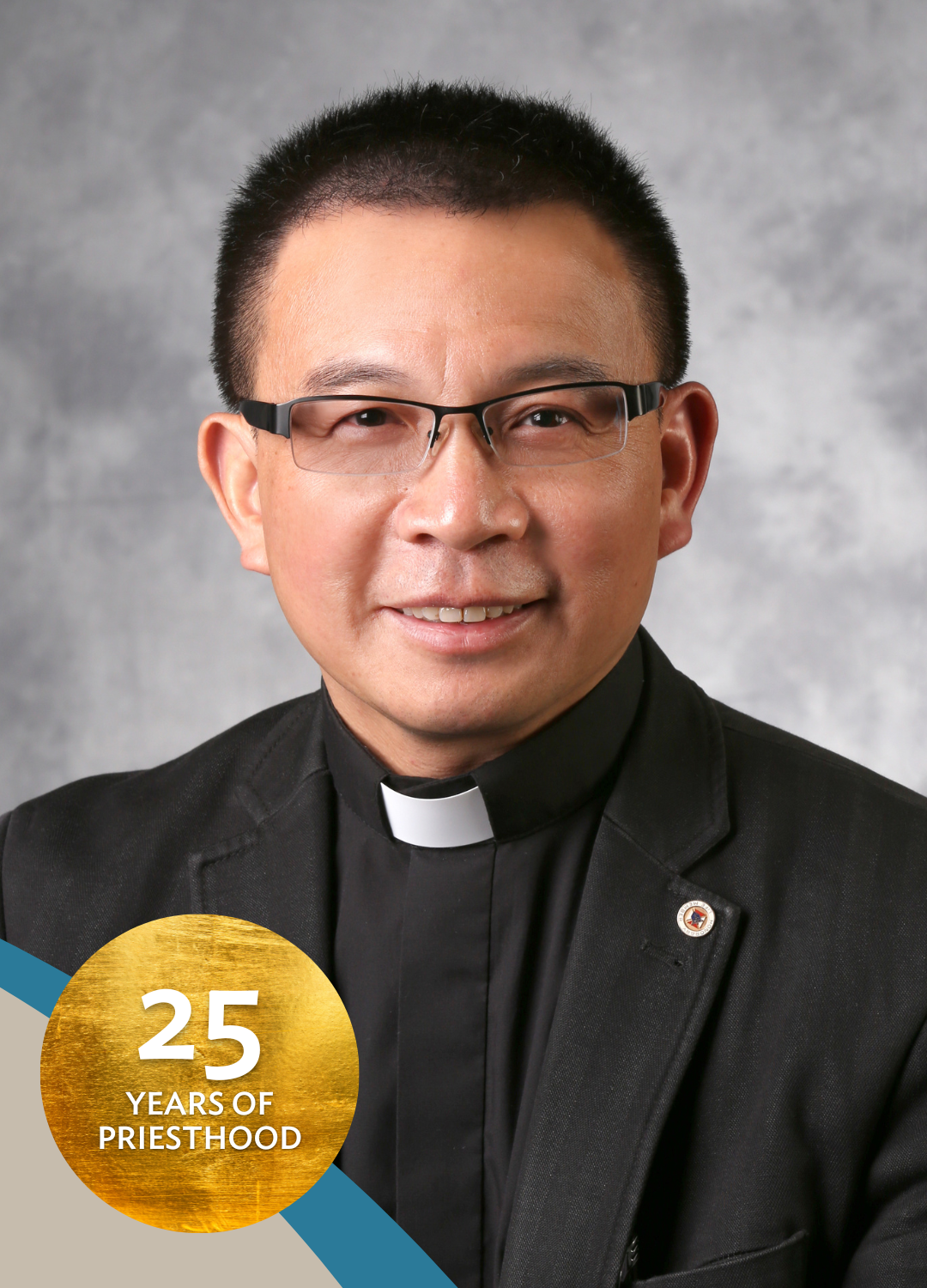
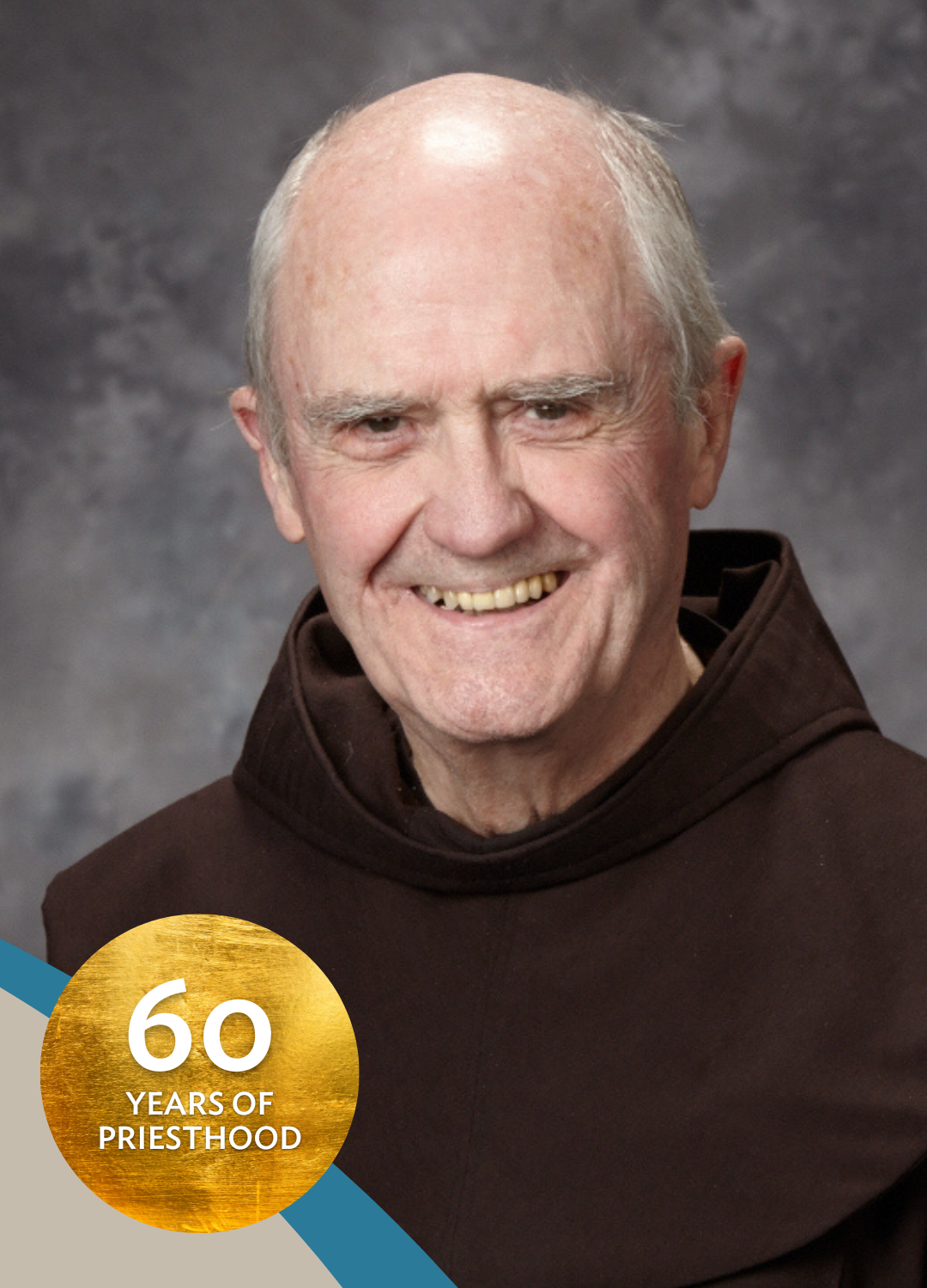
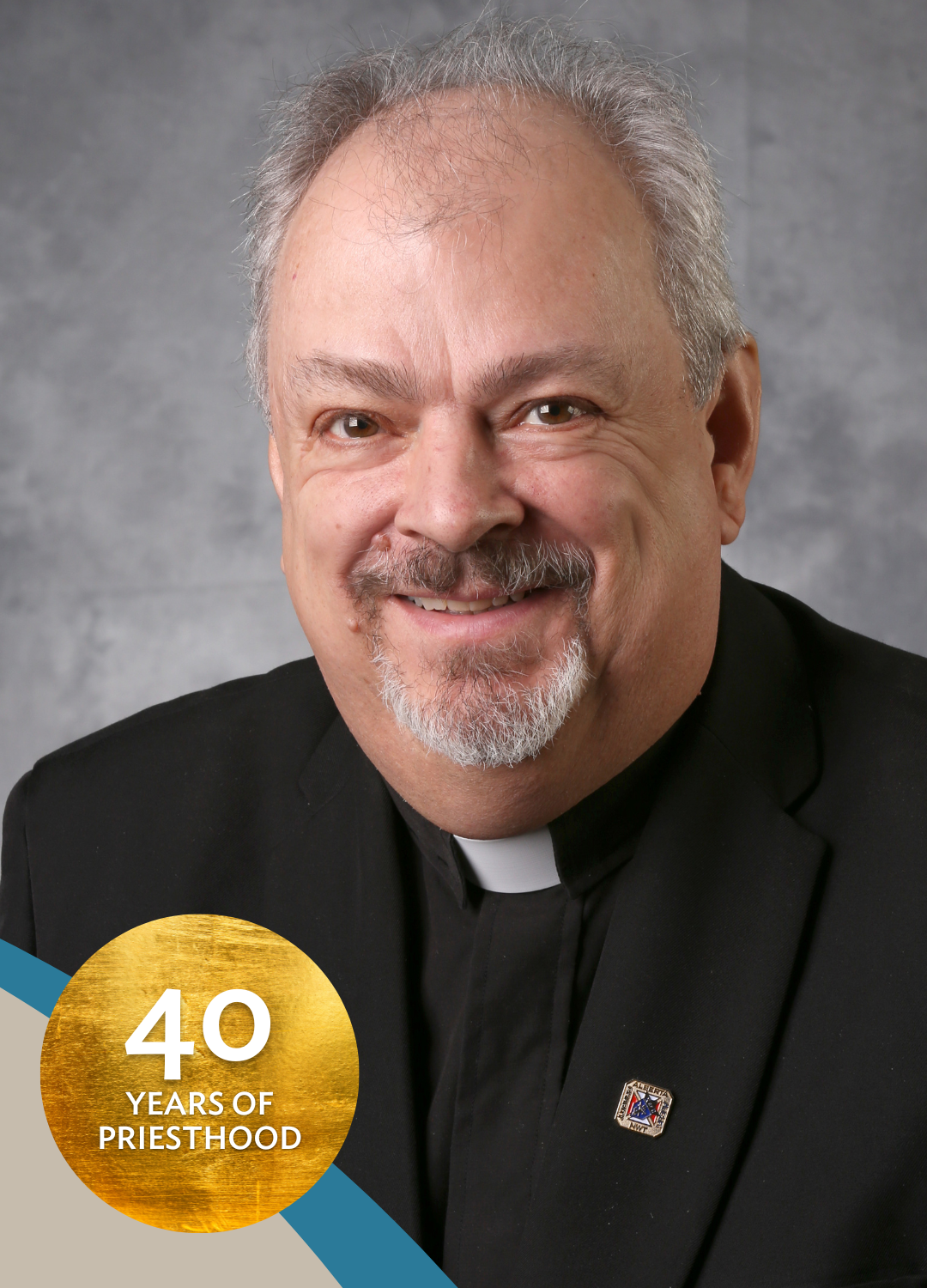
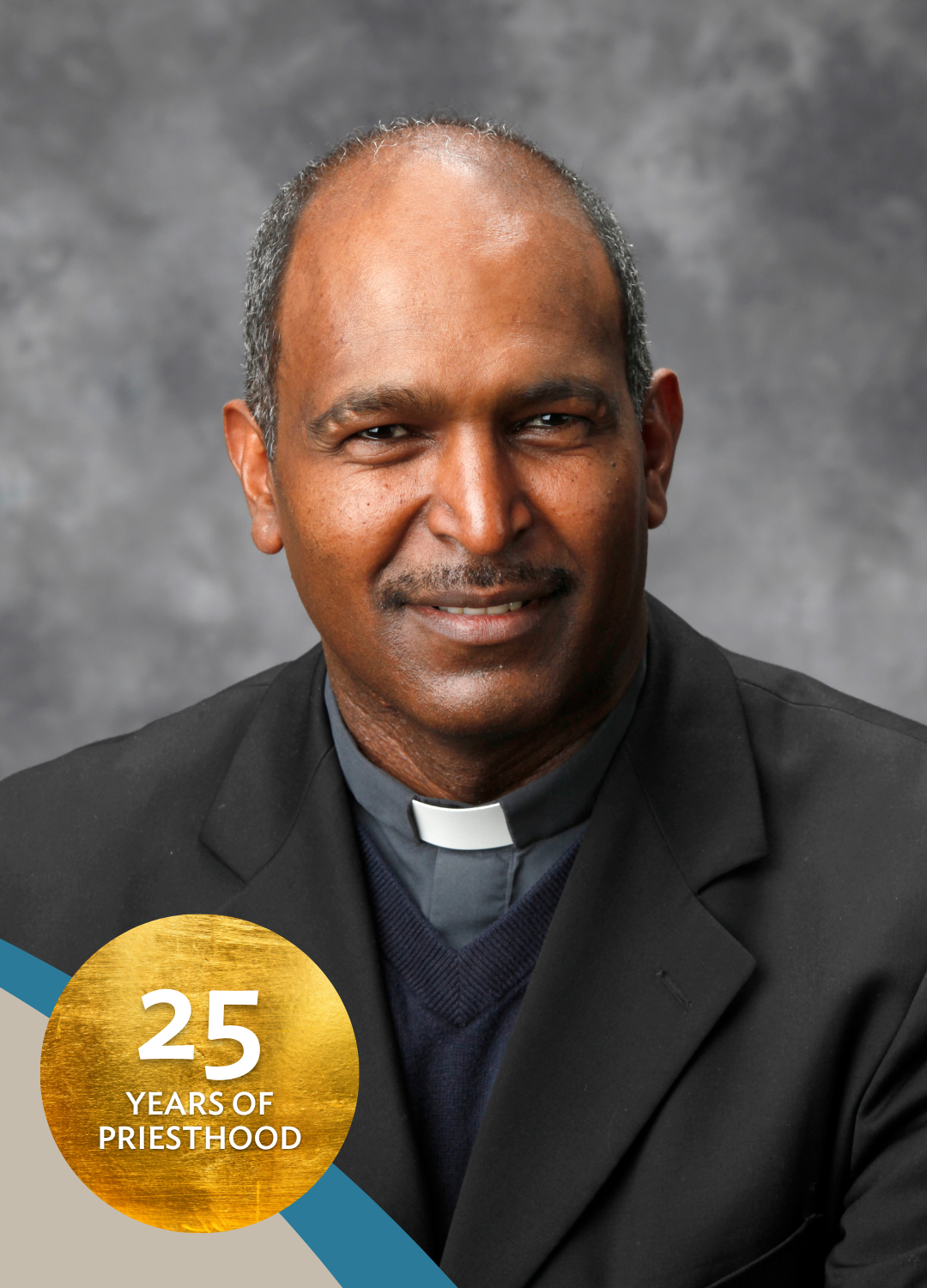
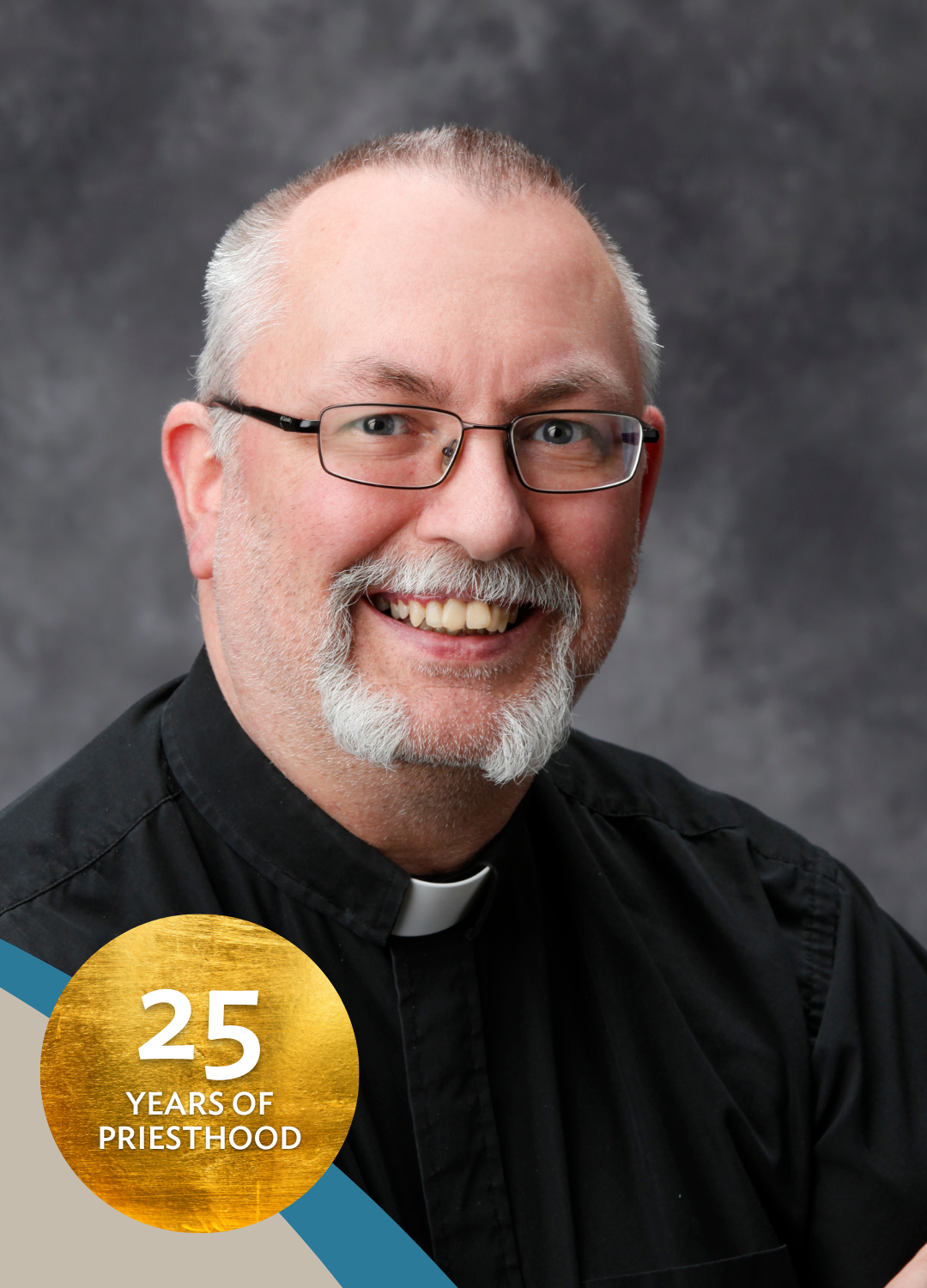
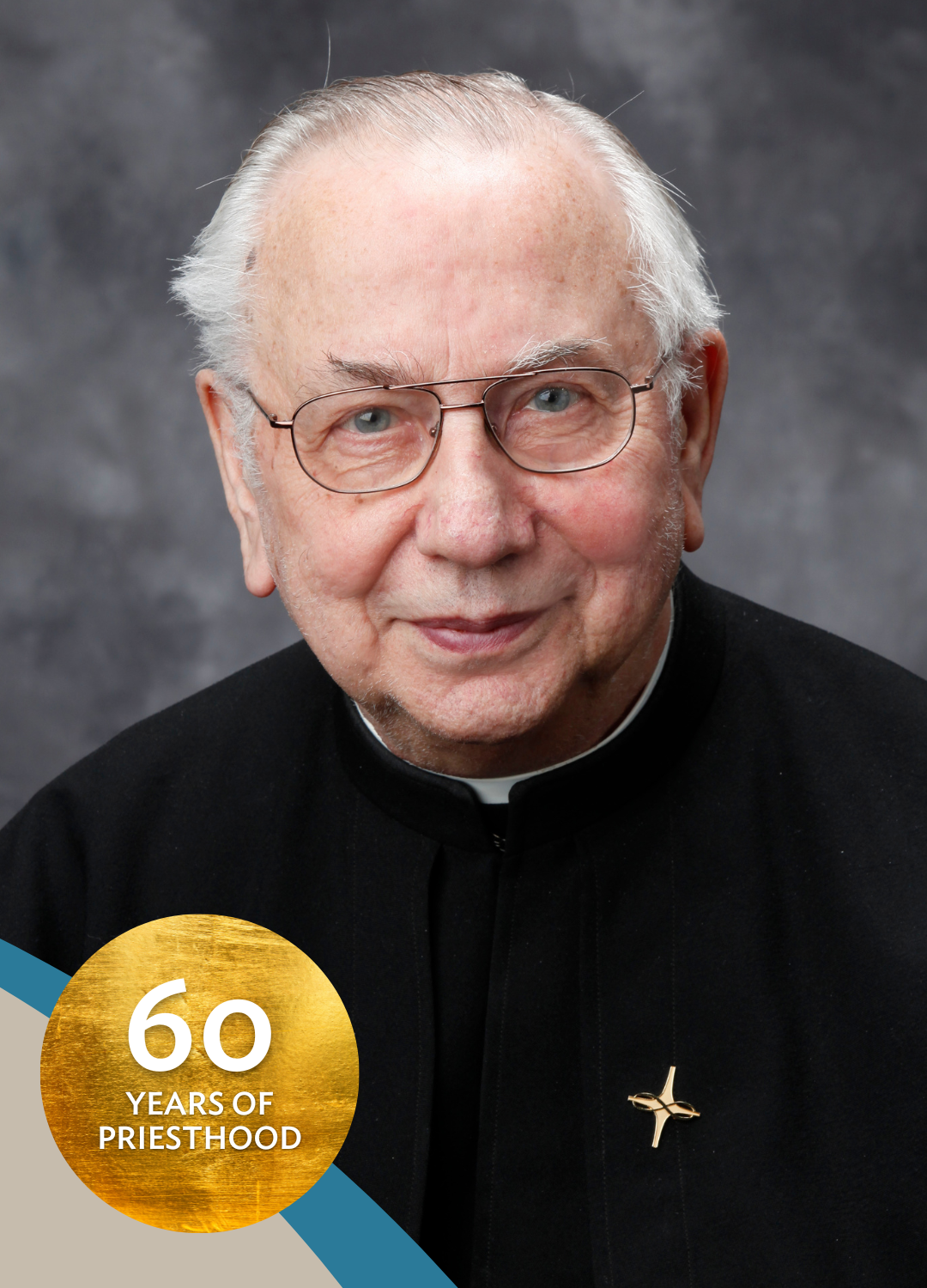
 RSS Feed
RSS Feed